Quick filters:
Samurai painting Stock Photos and Images
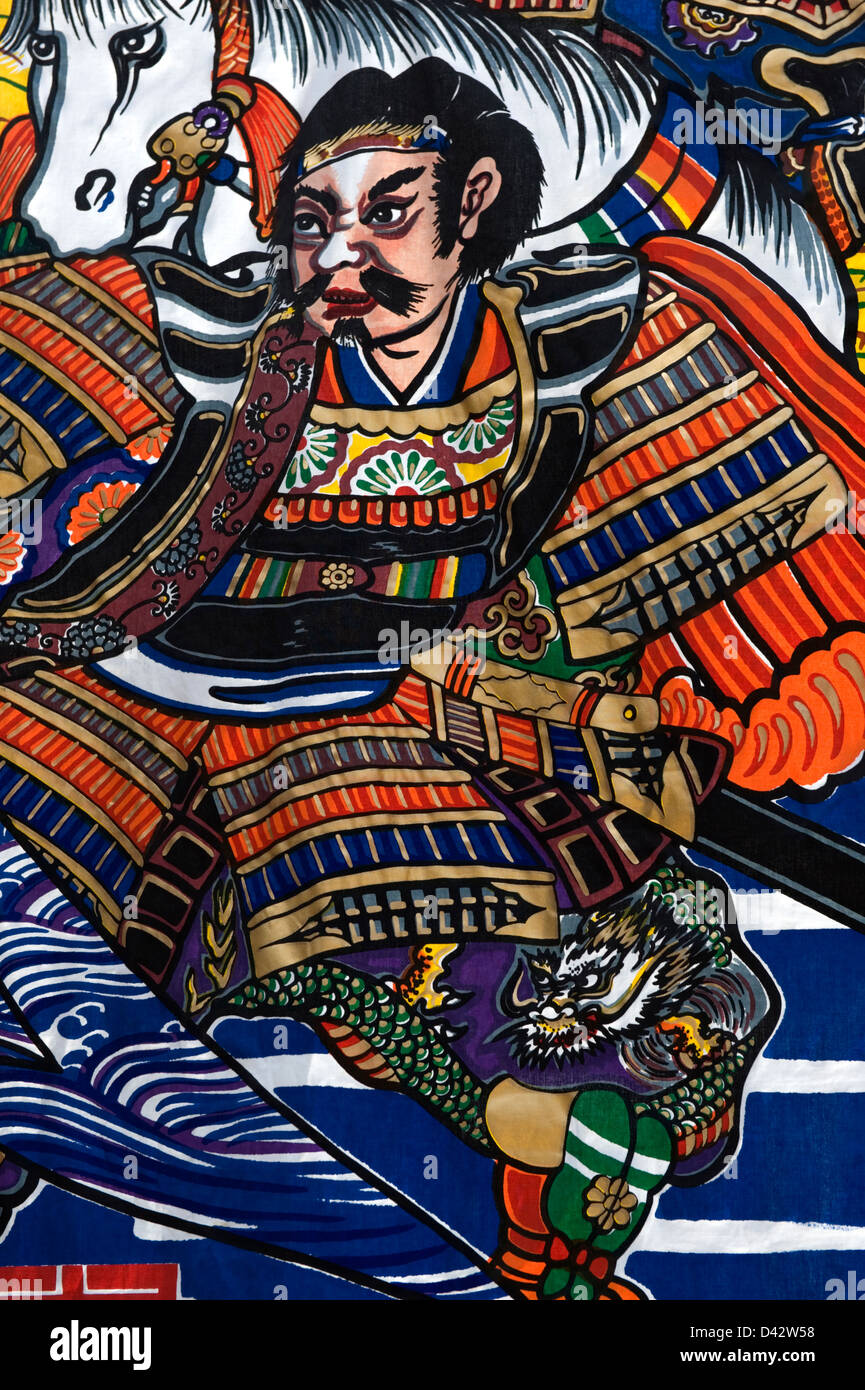 A painting on fabric of a samurai warrior in the heat of battle in the traditional style. Stock Photohttps://www.alamy.com/image-license-details/?v=1https://www.alamy.com/stock-photo-a-painting-on-fabric-of-a-samurai-warrior-in-the-heat-of-battle-in-54153380.html
A painting on fabric of a samurai warrior in the heat of battle in the traditional style. Stock Photohttps://www.alamy.com/image-license-details/?v=1https://www.alamy.com/stock-photo-a-painting-on-fabric-of-a-samurai-warrior-in-the-heat-of-battle-in-54153380.htmlRMD42W58–A painting on fabric of a samurai warrior in the heat of battle in the traditional style.
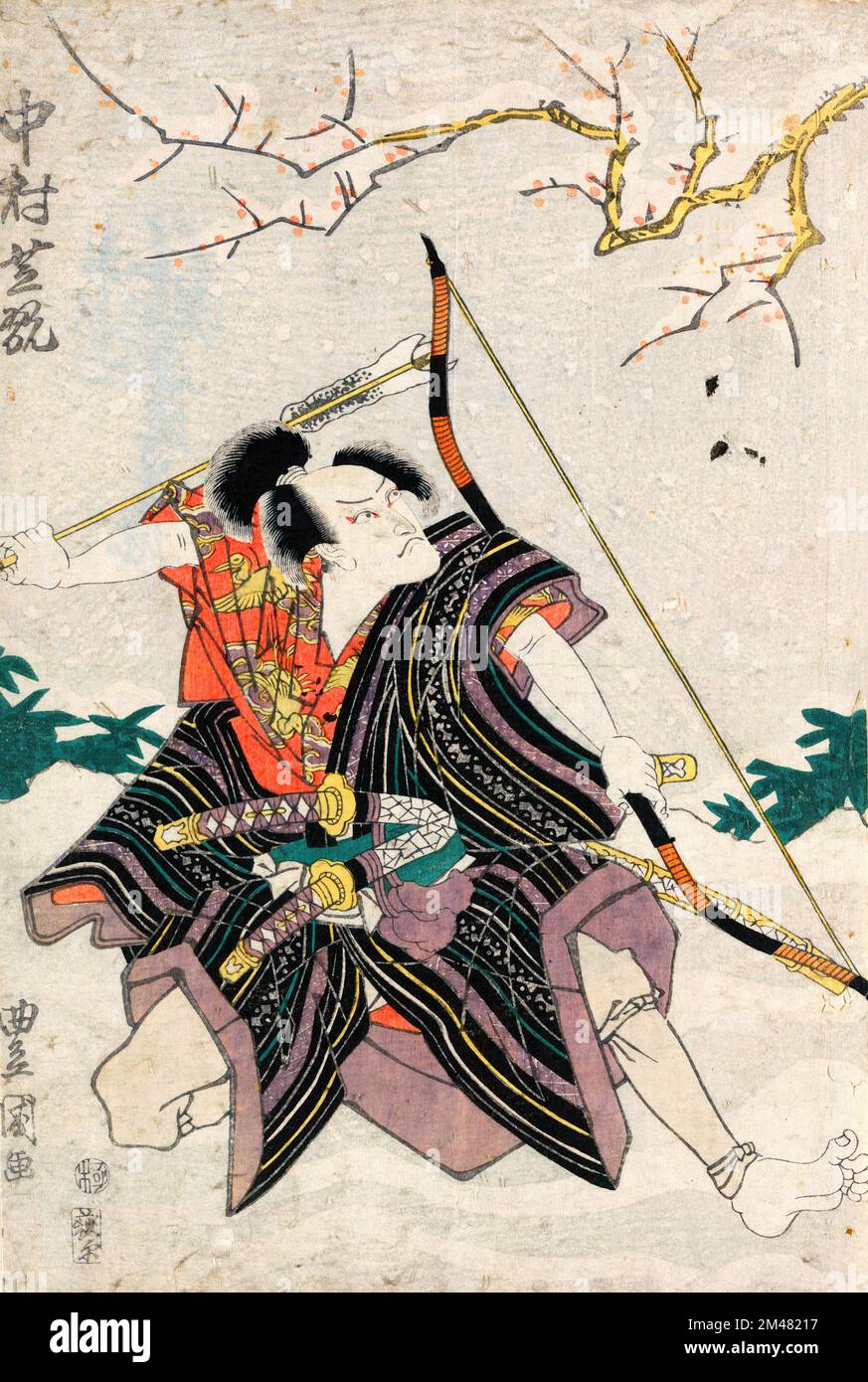 Samurai. Woodcut of the Japanese actor, Nakamura Shikan., dressed as a samurai, c. 1818-25 Stock Photohttps://www.alamy.com/image-license-details/?v=1https://www.alamy.com/samurai-woodcut-of-the-japanese-actor-nakamura-shikan-dressed-as-a-samurai-c-1818-25-image501736515.html
Samurai. Woodcut of the Japanese actor, Nakamura Shikan., dressed as a samurai, c. 1818-25 Stock Photohttps://www.alamy.com/image-license-details/?v=1https://www.alamy.com/samurai-woodcut-of-the-japanese-actor-nakamura-shikan-dressed-as-a-samurai-c-1818-25-image501736515.htmlRM2M48217–Samurai. Woodcut of the Japanese actor, Nakamura Shikan., dressed as a samurai, c. 1818-25
 Samurai on horseback; wearing armour and horned helmet; carrying bow and arrows Stock Photohttps://www.alamy.com/image-license-details/?v=1https://www.alamy.com/stock-photo-samurai-on-horseback-wearing-armour-and-horned-helmet-carrying-bow-76389543.html
Samurai on horseback; wearing armour and horned helmet; carrying bow and arrows Stock Photohttps://www.alamy.com/image-license-details/?v=1https://www.alamy.com/stock-photo-samurai-on-horseback-wearing-armour-and-horned-helmet-carrying-bow-76389543.htmlRMEC7RHY–Samurai on horseback; wearing armour and horned helmet; carrying bow and arrows
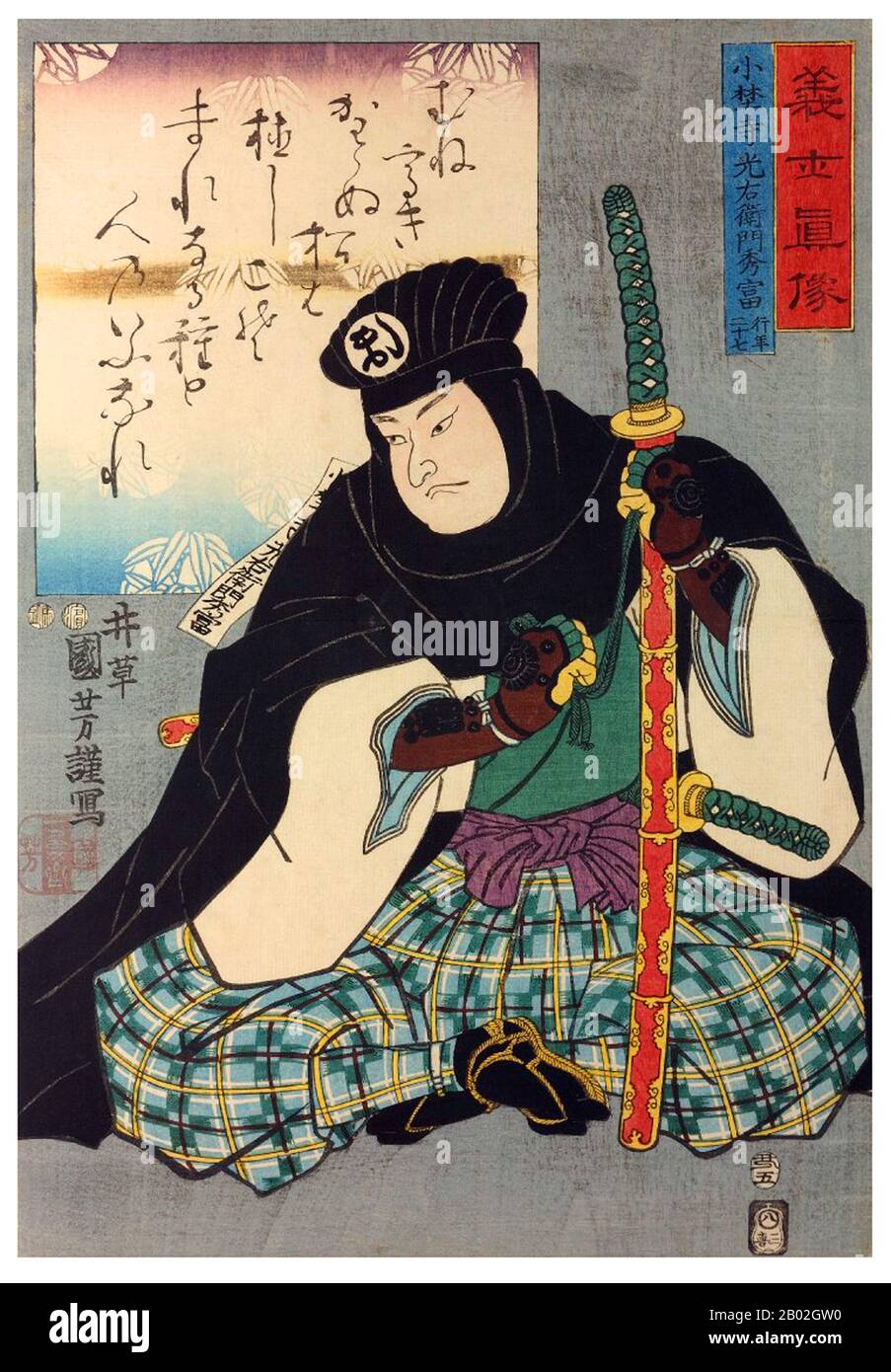 Samurai is the term for the military nobility of pre-industrial Japan. By the end of the 12th century, samurai became almost entirely synonymous with bushi, and the word was closely associated with the middle and upper echelons of the warrior class. The samurai followed a set of rules that came to be known as Bushidō. While they numbered less than ten percent of Japan's population, samurai teachings can still be found today in both everyday life and in martial arts such as Kendō, meaning the way of the sword. Stock Photohttps://www.alamy.com/image-license-details/?v=1https://www.alamy.com/samurai-is-the-term-for-the-military-nobility-of-pre-industrial-japan-by-the-end-of-the-12th-century-samurai-became-almost-entirely-synonymous-with-bushi-and-the-word-was-closely-associated-with-the-middle-and-upper-echelons-of-the-warrior-class-the-samurai-followed-a-set-of-rules-that-came-to-be-known-as-bushid-while-they-numbered-less-than-ten-percent-of-japans-population-samurai-teachings-can-still-be-found-today-in-both-everyday-life-and-in-martial-arts-such-as-kend-meaning-the-way-of-the-sword-image344264508.html
Samurai is the term for the military nobility of pre-industrial Japan. By the end of the 12th century, samurai became almost entirely synonymous with bushi, and the word was closely associated with the middle and upper echelons of the warrior class. The samurai followed a set of rules that came to be known as Bushidō. While they numbered less than ten percent of Japan's population, samurai teachings can still be found today in both everyday life and in martial arts such as Kendō, meaning the way of the sword. Stock Photohttps://www.alamy.com/image-license-details/?v=1https://www.alamy.com/samurai-is-the-term-for-the-military-nobility-of-pre-industrial-japan-by-the-end-of-the-12th-century-samurai-became-almost-entirely-synonymous-with-bushi-and-the-word-was-closely-associated-with-the-middle-and-upper-echelons-of-the-warrior-class-the-samurai-followed-a-set-of-rules-that-came-to-be-known-as-bushid-while-they-numbered-less-than-ten-percent-of-japans-population-samurai-teachings-can-still-be-found-today-in-both-everyday-life-and-in-martial-arts-such-as-kend-meaning-the-way-of-the-sword-image344264508.htmlRM2B02GW0–Samurai is the term for the military nobility of pre-industrial Japan. By the end of the 12th century, samurai became almost entirely synonymous with bushi, and the word was closely associated with the middle and upper echelons of the warrior class. The samurai followed a set of rules that came to be known as Bushidō. While they numbered less than ten percent of Japan's population, samurai teachings can still be found today in both everyday life and in martial arts such as Kendō, meaning the way of the sword.
 Faith in the Third-Day Moon - Yukimori, woodblock prints by Tsukioka Yoshitoshi. Stock Photohttps://www.alamy.com/image-license-details/?v=1https://www.alamy.com/faith-in-the-third-day-moon-yukimori-woodblock-prints-by-tsukioka-yoshitoshi-image331569754.html
Faith in the Third-Day Moon - Yukimori, woodblock prints by Tsukioka Yoshitoshi. Stock Photohttps://www.alamy.com/image-license-details/?v=1https://www.alamy.com/faith-in-the-third-day-moon-yukimori-woodblock-prints-by-tsukioka-yoshitoshi-image331569754.htmlRM2A7C8GX–Faith in the Third-Day Moon - Yukimori, woodblock prints by Tsukioka Yoshitoshi.
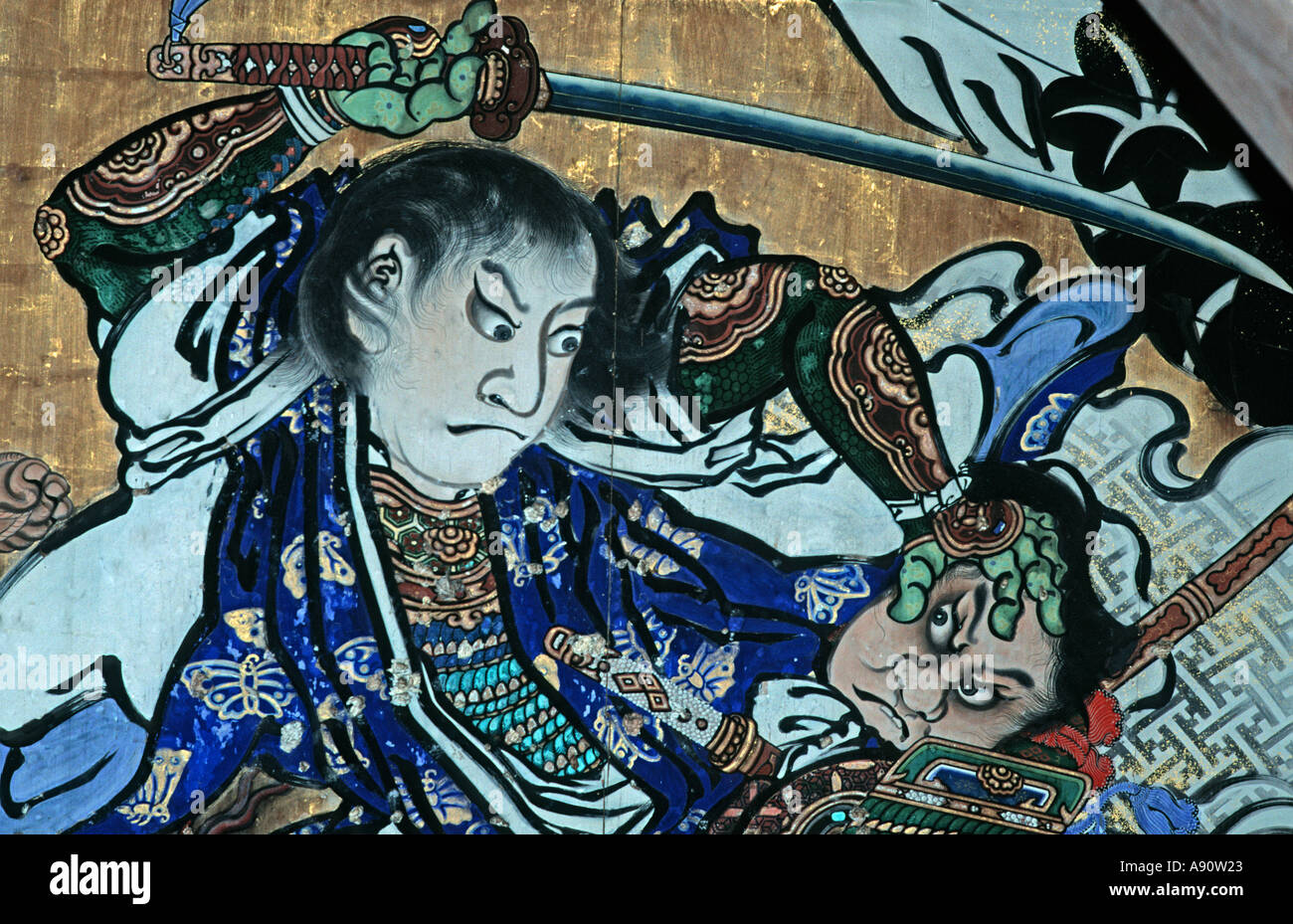 Antique painting of a Japanese warrior with Samurai sword Nara prefecture Japan Stock Photohttps://www.alamy.com/image-license-details/?v=1https://www.alamy.com/antique-painting-of-a-japanese-warrior-with-samurai-sword-nara-prefecture-image3987746.html
Antique painting of a Japanese warrior with Samurai sword Nara prefecture Japan Stock Photohttps://www.alamy.com/image-license-details/?v=1https://www.alamy.com/antique-painting-of-a-japanese-warrior-with-samurai-sword-nara-prefecture-image3987746.htmlRMA90W23–Antique painting of a Japanese warrior with Samurai sword Nara prefecture Japan
 Samurai I Stock Photohttps://www.alamy.com/image-license-details/?v=1https://www.alamy.com/samurai-i-image63512867.html
Samurai I Stock Photohttps://www.alamy.com/image-license-details/?v=1https://www.alamy.com/samurai-i-image63512867.htmlRMDK978K–Samurai I
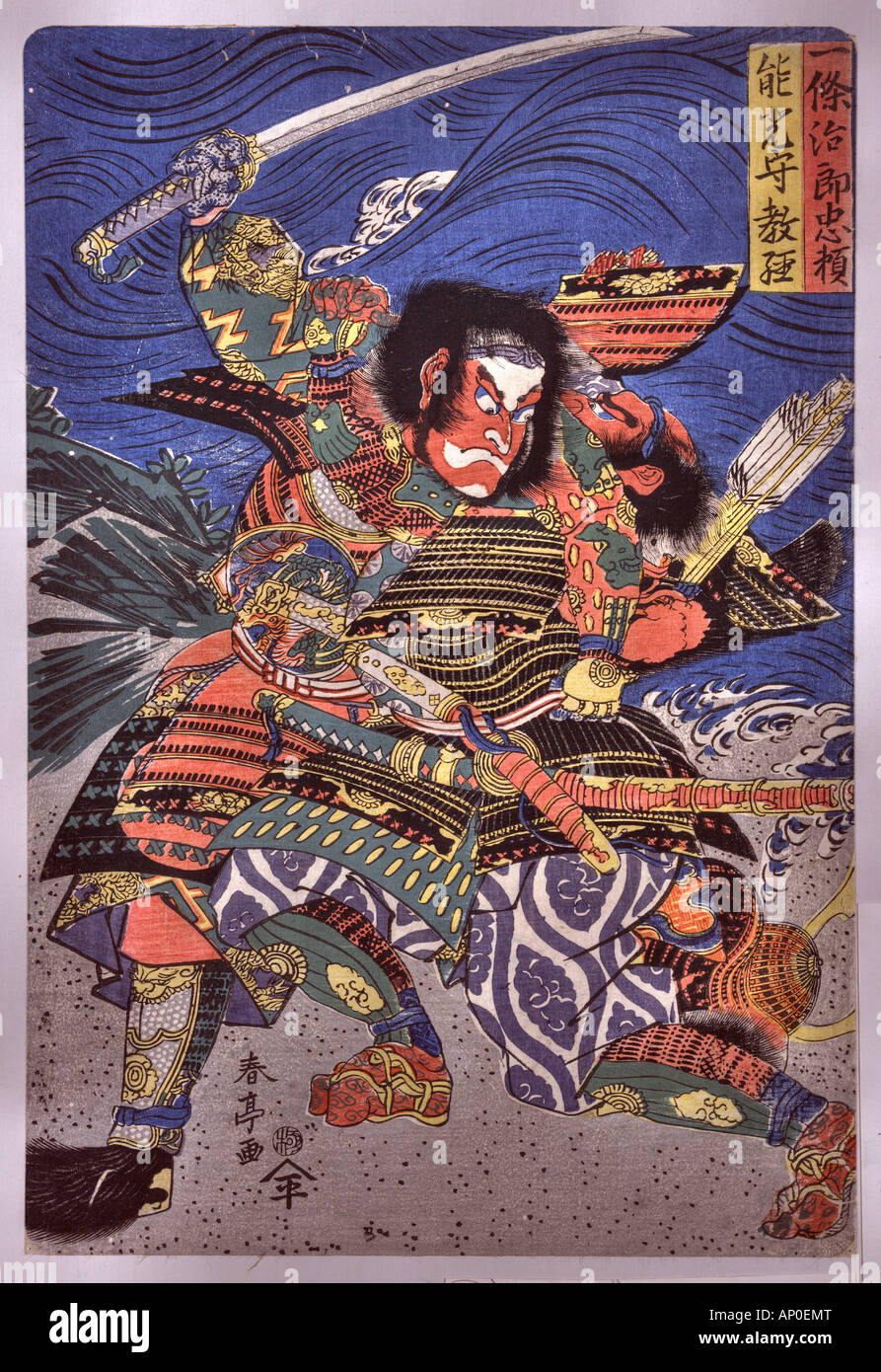 The samurai warriors Ichijo Jiro Tadanori and Notonokami Noritsune. Japan between 1818 and 1820 Stock Photohttps://www.alamy.com/image-license-details/?v=1https://www.alamy.com/stock-photo-the-samurai-warriors-ichijo-jiro-tadanori-and-notonokami-noritsune-15634775.html
The samurai warriors Ichijo Jiro Tadanori and Notonokami Noritsune. Japan between 1818 and 1820 Stock Photohttps://www.alamy.com/image-license-details/?v=1https://www.alamy.com/stock-photo-the-samurai-warriors-ichijo-jiro-tadanori-and-notonokami-noritsune-15634775.htmlRMAP0EMT–The samurai warriors Ichijo Jiro Tadanori and Notonokami Noritsune. Japan between 1818 and 1820
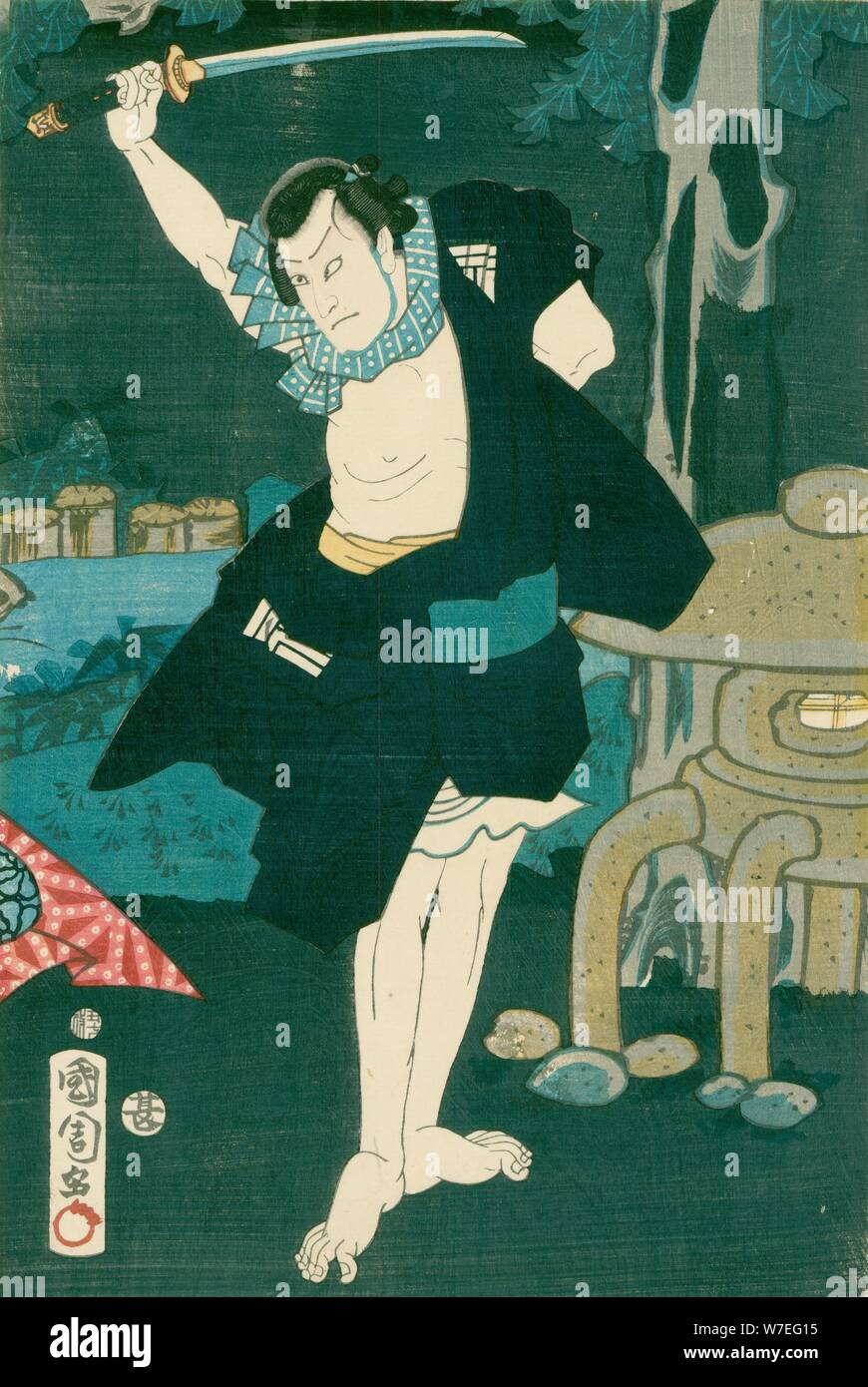 Samurai Warrior. Japanese painting on silk, in a traditional Japanese style. Artist: Unknown Stock Photohttps://www.alamy.com/image-license-details/?v=1https://www.alamy.com/samurai-warrior-japanese-painting-on-silk-in-a-traditional-japanese-style-artist-unknown-image262778017.html
Samurai Warrior. Japanese painting on silk, in a traditional Japanese style. Artist: Unknown Stock Photohttps://www.alamy.com/image-license-details/?v=1https://www.alamy.com/samurai-warrior-japanese-painting-on-silk-in-a-traditional-japanese-style-artist-unknown-image262778017.htmlRMW7EG15–Samurai Warrior. Japanese painting on silk, in a traditional Japanese style. Artist: Unknown
 Shinobugaoka Moon - Gyokuensai, Yoshitoshi, Tsukioka Stock Photohttps://www.alamy.com/image-license-details/?v=1https://www.alamy.com/shinobugaoka-moon-gyokuensai-yoshitoshi-tsukioka-image215546406.html
Shinobugaoka Moon - Gyokuensai, Yoshitoshi, Tsukioka Stock Photohttps://www.alamy.com/image-license-details/?v=1https://www.alamy.com/shinobugaoka-moon-gyokuensai-yoshitoshi-tsukioka-image215546406.htmlRMPEJYHX–Shinobugaoka Moon - Gyokuensai, Yoshitoshi, Tsukioka
 GRABADO JAPONES - GUERRERO SAMURAI CASTIGANDO A SU CRIADO. Location: PRIVATE COLLECTION. France. Stock Photohttps://www.alamy.com/image-license-details/?v=1https://www.alamy.com/grabado-japones-guerrero-samurai-castigando-a-su-criado-location-private-collection-france-image226535112.html
GRABADO JAPONES - GUERRERO SAMURAI CASTIGANDO A SU CRIADO. Location: PRIVATE COLLECTION. France. Stock Photohttps://www.alamy.com/image-license-details/?v=1https://www.alamy.com/grabado-japones-guerrero-samurai-castigando-a-su-criado-location-private-collection-france-image226535112.htmlRMR4FFRM–GRABADO JAPONES - GUERRERO SAMURAI CASTIGANDO A SU CRIADO. Location: PRIVATE COLLECTION. France.
 A decorative traditional samurai painting, by an unknown artist, on a merchants door near the Nakamise Shopping Street in Tokyo, Japan. Stock Photohttps://www.alamy.com/image-license-details/?v=1https://www.alamy.com/a-decorative-traditional-samurai-painting-by-an-unknown-artist-on-a-merchants-door-near-the-nakamise-shopping-street-in-tokyo-japan-image450479884.html
A decorative traditional samurai painting, by an unknown artist, on a merchants door near the Nakamise Shopping Street in Tokyo, Japan. Stock Photohttps://www.alamy.com/image-license-details/?v=1https://www.alamy.com/a-decorative-traditional-samurai-painting-by-an-unknown-artist-on-a-merchants-door-near-the-nakamise-shopping-street-in-tokyo-japan-image450479884.htmlRF2H4W3K8–A decorative traditional samurai painting, by an unknown artist, on a merchants door near the Nakamise Shopping Street in Tokyo, Japan.
 Twee samurai Rijksmuseum RP P 2008 207 Stock Photohttps://www.alamy.com/image-license-details/?v=1https://www.alamy.com/stock-photo-twee-samurai-rijksmuseum-rp-p-2008-207-140724443.html
Twee samurai Rijksmuseum RP P 2008 207 Stock Photohttps://www.alamy.com/image-license-details/?v=1https://www.alamy.com/stock-photo-twee-samurai-rijksmuseum-rp-p-2008-207-140724443.htmlRMJ4XFCY–Twee samurai Rijksmuseum RP P 2008 207
 Utagawa Kuniyoshi æŒå· 国芳 - Samurai Conquered Stock Photohttps://www.alamy.com/image-license-details/?v=1https://www.alamy.com/utagawa-kuniyoshi-samurai-conquered-image433665993.html
Utagawa Kuniyoshi æŒå· 国芳 - Samurai Conquered Stock Photohttps://www.alamy.com/image-license-details/?v=1https://www.alamy.com/utagawa-kuniyoshi-samurai-conquered-image433665993.htmlRF2G5F5B5–Utagawa Kuniyoshi æŒå· 国芳 - Samurai Conquered
 Samurai wearing a horo Stock Photohttps://www.alamy.com/image-license-details/?v=1https://www.alamy.com/stock-photo-samurai-wearing-a-horo-134883220.html
Samurai wearing a horo Stock Photohttps://www.alamy.com/image-license-details/?v=1https://www.alamy.com/stock-photo-samurai-wearing-a-horo-134883220.htmlRMHRCCWT–Samurai wearing a horo
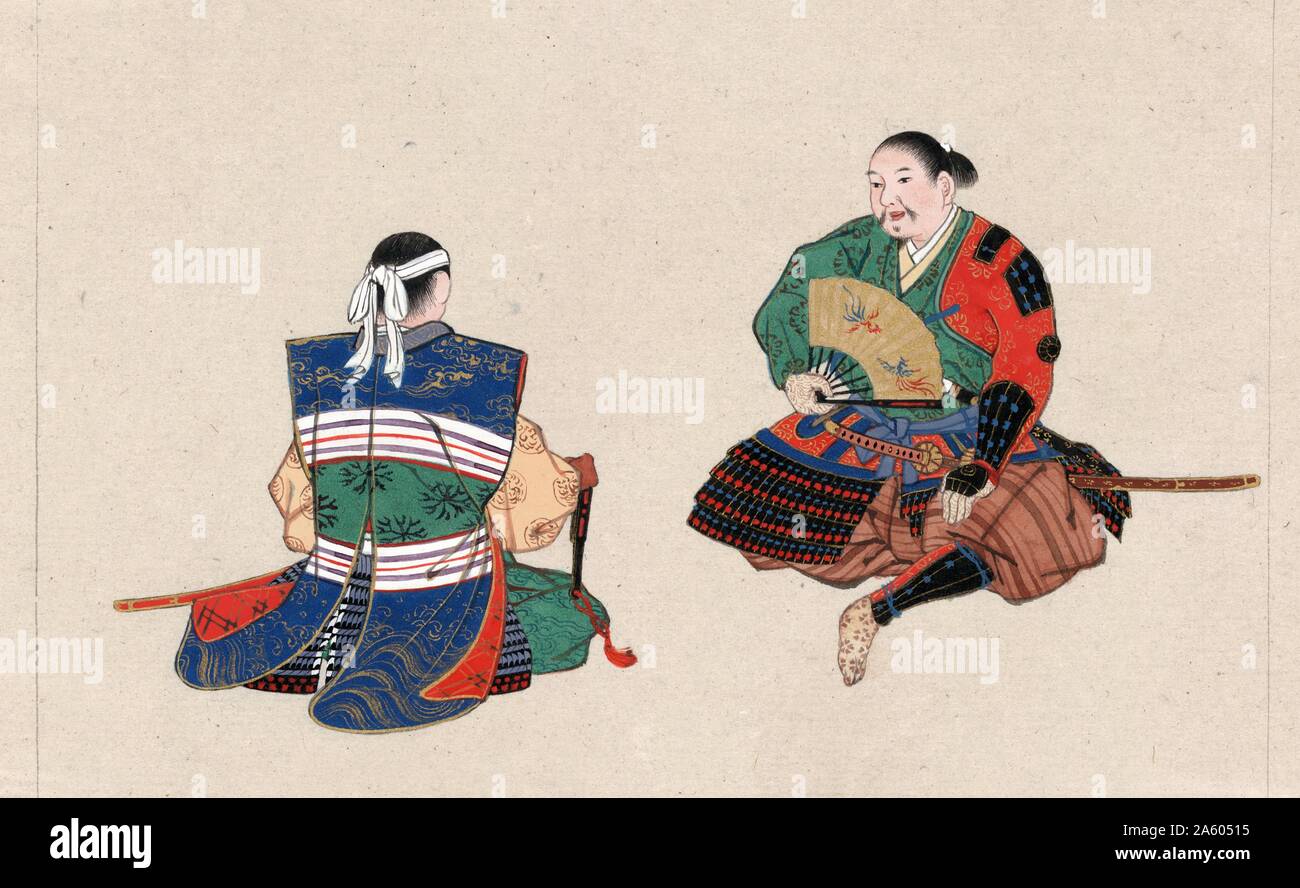 Front and back view of uniform and armour for samurai Stock Photohttps://www.alamy.com/image-license-details/?v=1https://www.alamy.com/front-and-back-view-of-uniform-and-armour-for-samurai-image330688881.html
Front and back view of uniform and armour for samurai Stock Photohttps://www.alamy.com/image-license-details/?v=1https://www.alamy.com/front-and-back-view-of-uniform-and-armour-for-samurai-image330688881.htmlRM2A60515–Front and back view of uniform and armour for samurai
 illustration samurai in black and white Stock Photohttps://www.alamy.com/image-license-details/?v=1https://www.alamy.com/illustration-samurai-in-black-and-white-image503137076.html
illustration samurai in black and white Stock Photohttps://www.alamy.com/image-license-details/?v=1https://www.alamy.com/illustration-samurai-in-black-and-white-image503137076.htmlRF2M6FTD8–illustration samurai in black and white
 Samurai standing on stairway in night forest with the red moon on background,illustration painting Stock Photohttps://www.alamy.com/image-license-details/?v=1https://www.alamy.com/stock-photo-samurai-standing-on-stairway-in-night-forest-with-the-red-moon-on-131461939.html
Samurai standing on stairway in night forest with the red moon on background,illustration painting Stock Photohttps://www.alamy.com/image-license-details/?v=1https://www.alamy.com/stock-photo-samurai-standing-on-stairway-in-night-forest-with-the-red-moon-on-131461939.htmlRFHHTH17–Samurai standing on stairway in night forest with the red moon on background,illustration painting
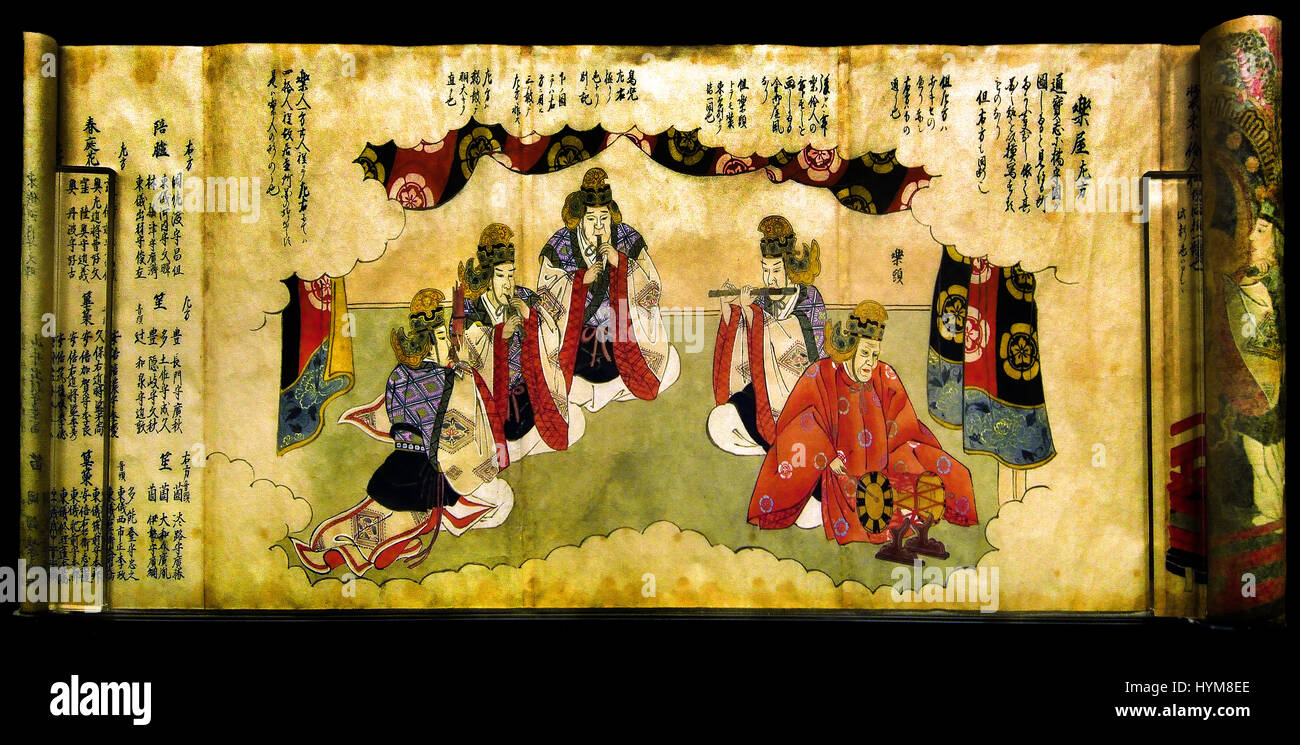 Court Dance ( Bugaku ) 1816 by Mizuno Rocho 1748-1836 Court dance was performed for the Shogun ruler in Edo . Japan ( Samurai ,Tokugawa family ) Stock Photohttps://www.alamy.com/image-license-details/?v=1https://www.alamy.com/stock-photo-court-dance-bugaku-1816-by-mizuno-rocho-1748-1836-court-dance-was-137514006.html
Court Dance ( Bugaku ) 1816 by Mizuno Rocho 1748-1836 Court dance was performed for the Shogun ruler in Edo . Japan ( Samurai ,Tokugawa family ) Stock Photohttps://www.alamy.com/image-license-details/?v=1https://www.alamy.com/stock-photo-court-dance-bugaku-1816-by-mizuno-rocho-1748-1836-court-dance-was-137514006.htmlRMHYM8EE–Court Dance ( Bugaku ) 1816 by Mizuno Rocho 1748-1836 Court dance was performed for the Shogun ruler in Edo . Japan ( Samurai ,Tokugawa family )
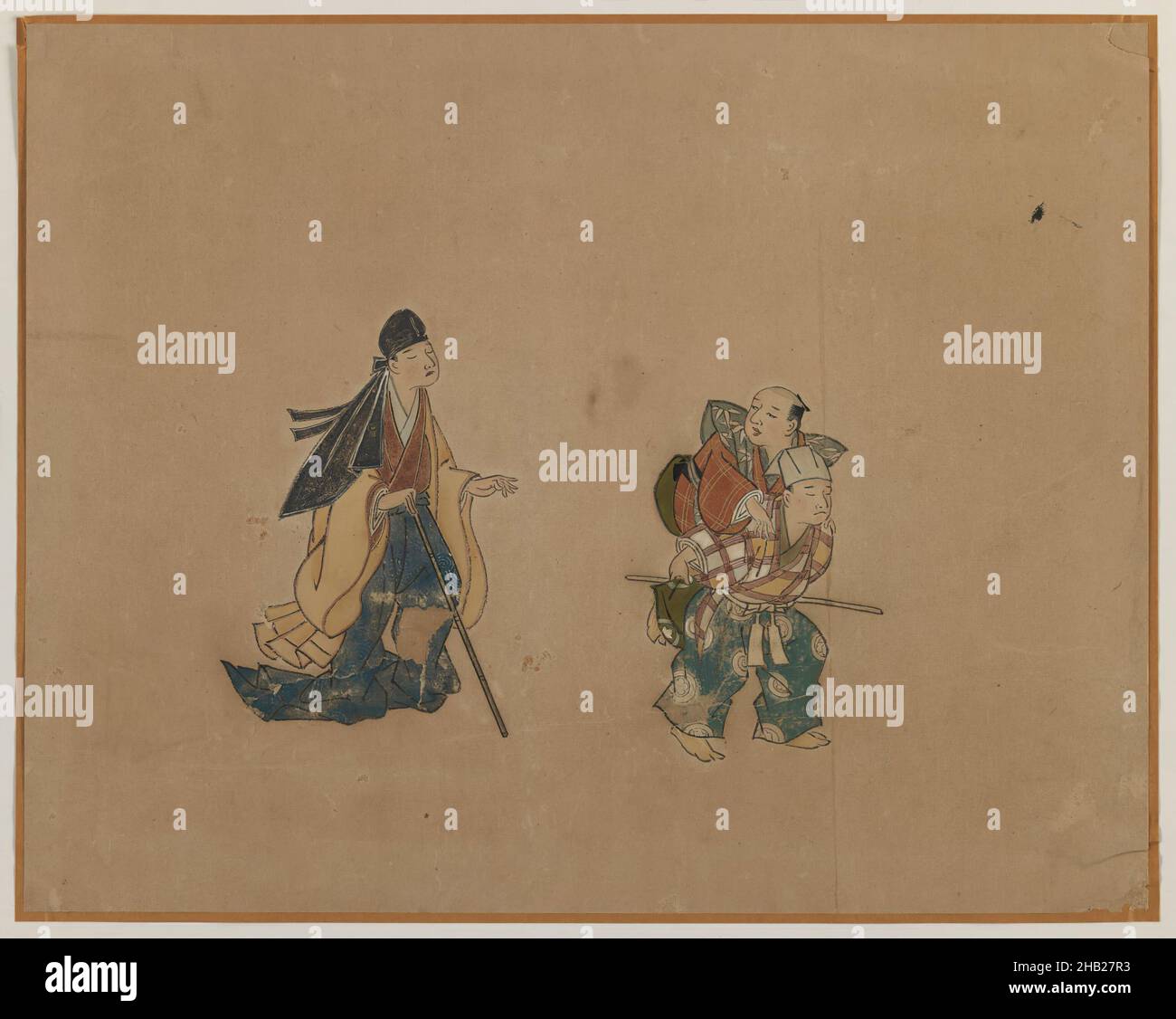 Samurai and Two Blindmen, Album Leaf Painting, Ink and color on paper, Japan, early 19th century, Edo Period, 10 3/4 x 13 5/8 in., 27.3 x 34.6 cm Stock Photohttps://www.alamy.com/image-license-details/?v=1https://www.alamy.com/samurai-and-two-blindmen-album-leaf-painting-ink-and-color-on-paper-japan-early-19th-century-edo-period-10-34-x-13-58-in-273-x-346-cm-image454280823.html
Samurai and Two Blindmen, Album Leaf Painting, Ink and color on paper, Japan, early 19th century, Edo Period, 10 3/4 x 13 5/8 in., 27.3 x 34.6 cm Stock Photohttps://www.alamy.com/image-license-details/?v=1https://www.alamy.com/samurai-and-two-blindmen-album-leaf-painting-ink-and-color-on-paper-japan-early-19th-century-edo-period-10-34-x-13-58-in-273-x-346-cm-image454280823.htmlRM2HB27R3–Samurai and Two Blindmen, Album Leaf Painting, Ink and color on paper, Japan, early 19th century, Edo Period, 10 3/4 x 13 5/8 in., 27.3 x 34.6 cm
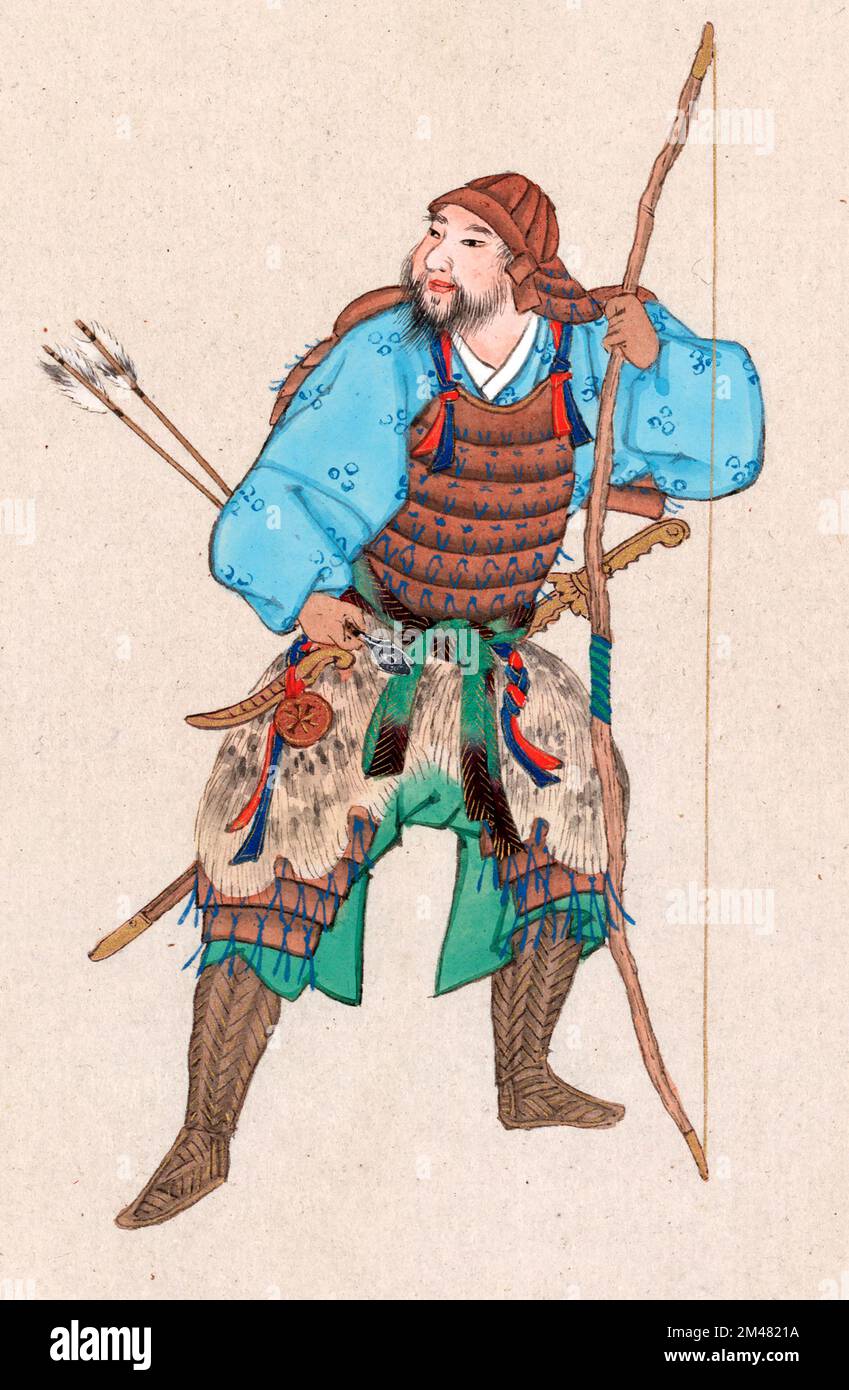 Samurai. Illustration of a samurai standing, facing left, wearing armor and holding a bow, ink drawing, c. 1878 Stock Photohttps://www.alamy.com/image-license-details/?v=1https://www.alamy.com/samurai-illustration-of-a-samurai-standing-facing-left-wearing-armor-and-holding-a-bow-ink-drawing-c-1878-image501736518.html
Samurai. Illustration of a samurai standing, facing left, wearing armor and holding a bow, ink drawing, c. 1878 Stock Photohttps://www.alamy.com/image-license-details/?v=1https://www.alamy.com/samurai-illustration-of-a-samurai-standing-facing-left-wearing-armor-and-holding-a-bow-ink-drawing-c-1878-image501736518.htmlRM2M4821A–Samurai. Illustration of a samurai standing, facing left, wearing armor and holding a bow, ink drawing, c. 1878
 Inspired by Samurai and Two Blindmen, Album Leaf Painting, Ink and color on paper, Japan, early 19th century, Edo Period, 10 3/4 x 13 5/8 in., 27.3 x 34.6 cm, Reimagined by Artotop. Classic art reinvented with a modern twist. Design of warm cheerful glowing of brightness and light ray radiance. Photography inspired by surrealism and futurism, embracing dynamic energy of modern technology, movement, speed and revolutionize culture Stock Photohttps://www.alamy.com/image-license-details/?v=1https://www.alamy.com/inspired-by-samurai-and-two-blindmen-album-leaf-painting-ink-and-color-on-paper-japan-early-19th-century-edo-period-10-34-x-13-58-in-273-x-346-cm-reimagined-by-artotop-classic-art-reinvented-with-a-modern-twist-design-of-warm-cheerful-glowing-of-brightness-and-light-ray-radiance-photography-inspired-by-surrealism-and-futurism-embracing-dynamic-energy-of-modern-technology-movement-speed-and-revolutionize-culture-image459261671.html
Inspired by Samurai and Two Blindmen, Album Leaf Painting, Ink and color on paper, Japan, early 19th century, Edo Period, 10 3/4 x 13 5/8 in., 27.3 x 34.6 cm, Reimagined by Artotop. Classic art reinvented with a modern twist. Design of warm cheerful glowing of brightness and light ray radiance. Photography inspired by surrealism and futurism, embracing dynamic energy of modern technology, movement, speed and revolutionize culture Stock Photohttps://www.alamy.com/image-license-details/?v=1https://www.alamy.com/inspired-by-samurai-and-two-blindmen-album-leaf-painting-ink-and-color-on-paper-japan-early-19th-century-edo-period-10-34-x-13-58-in-273-x-346-cm-reimagined-by-artotop-classic-art-reinvented-with-a-modern-twist-design-of-warm-cheerful-glowing-of-brightness-and-light-ray-radiance-photography-inspired-by-surrealism-and-futurism-embracing-dynamic-energy-of-modern-technology-movement-speed-and-revolutionize-culture-image459261671.htmlRF2HK54XF–Inspired by Samurai and Two Blindmen, Album Leaf Painting, Ink and color on paper, Japan, early 19th century, Edo Period, 10 3/4 x 13 5/8 in., 27.3 x 34.6 cm, Reimagined by Artotop. Classic art reinvented with a modern twist. Design of warm cheerful glowing of brightness and light ray radiance. Photography inspired by surrealism and futurism, embracing dynamic energy of modern technology, movement, speed and revolutionize culture
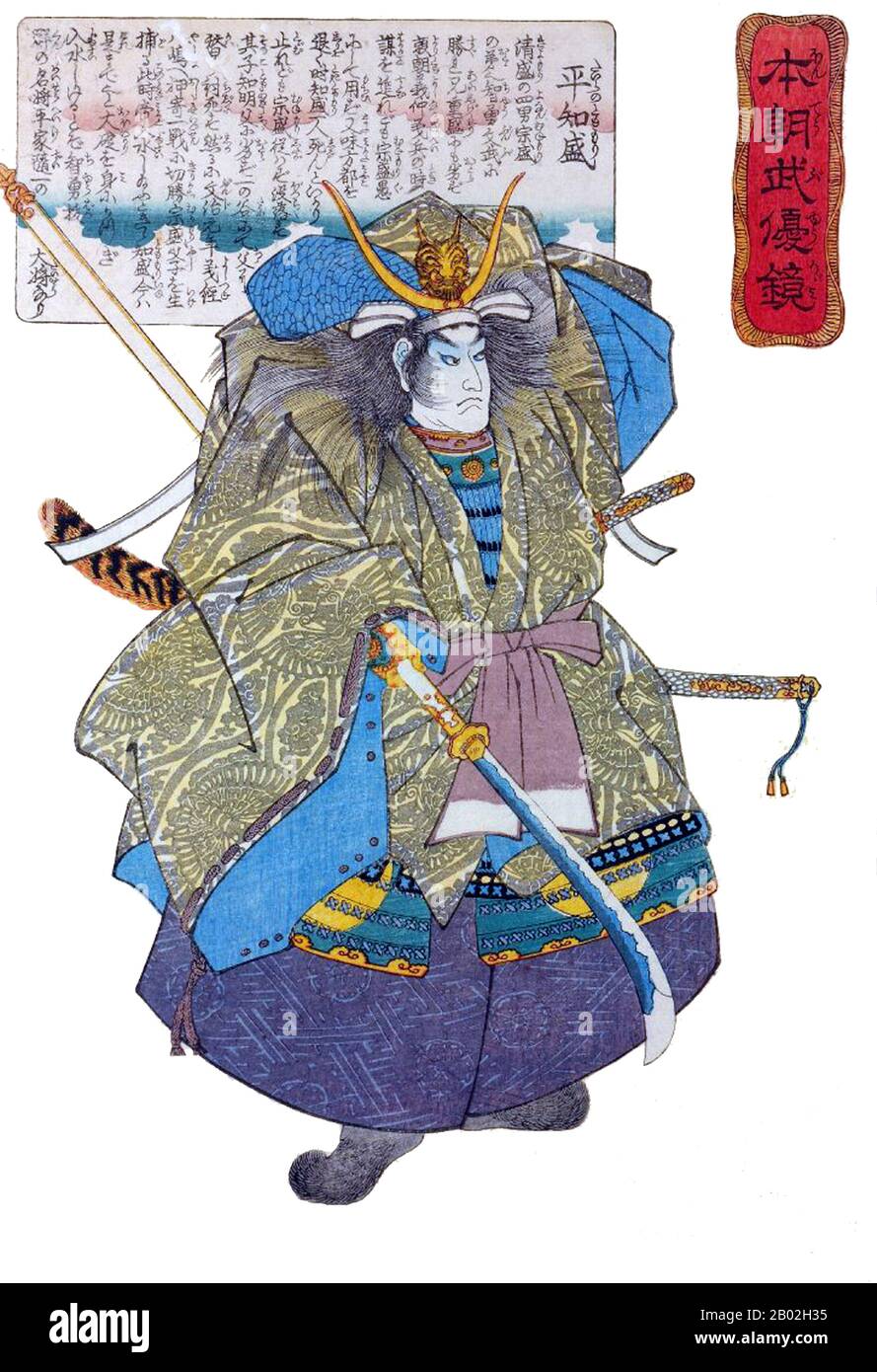 Samurai is the term for the military nobility of pre-industrial Japan. By the end of the 12th century, samurai became almost entirely synonymous with bushi, and the word was closely associated with the middle and upper echelons of the warrior class. The samurai followed a set of rules that came to be known as Bushidō. While they numbered less than ten percent of Japan's population, samurai teachings can still be found today in both everyday life and in martial arts such as Kendō, meaning the way of the sword. Stock Photohttps://www.alamy.com/image-license-details/?v=1https://www.alamy.com/samurai-is-the-term-for-the-military-nobility-of-pre-industrial-japan-by-the-end-of-the-12th-century-samurai-became-almost-entirely-synonymous-with-bushi-and-the-word-was-closely-associated-with-the-middle-and-upper-echelons-of-the-warrior-class-the-samurai-followed-a-set-of-rules-that-came-to-be-known-as-bushid-while-they-numbered-less-than-ten-percent-of-japans-population-samurai-teachings-can-still-be-found-today-in-both-everyday-life-and-in-martial-arts-such-as-kend-meaning-the-way-of-the-sword-image344264681.html
Samurai is the term for the military nobility of pre-industrial Japan. By the end of the 12th century, samurai became almost entirely synonymous with bushi, and the word was closely associated with the middle and upper echelons of the warrior class. The samurai followed a set of rules that came to be known as Bushidō. While they numbered less than ten percent of Japan's population, samurai teachings can still be found today in both everyday life and in martial arts such as Kendō, meaning the way of the sword. Stock Photohttps://www.alamy.com/image-license-details/?v=1https://www.alamy.com/samurai-is-the-term-for-the-military-nobility-of-pre-industrial-japan-by-the-end-of-the-12th-century-samurai-became-almost-entirely-synonymous-with-bushi-and-the-word-was-closely-associated-with-the-middle-and-upper-echelons-of-the-warrior-class-the-samurai-followed-a-set-of-rules-that-came-to-be-known-as-bushid-while-they-numbered-less-than-ten-percent-of-japans-population-samurai-teachings-can-still-be-found-today-in-both-everyday-life-and-in-martial-arts-such-as-kend-meaning-the-way-of-the-sword-image344264681.htmlRM2B02H35–Samurai is the term for the military nobility of pre-industrial Japan. By the end of the 12th century, samurai became almost entirely synonymous with bushi, and the word was closely associated with the middle and upper echelons of the warrior class. The samurai followed a set of rules that came to be known as Bushidō. While they numbered less than ten percent of Japan's population, samurai teachings can still be found today in both everyday life and in martial arts such as Kendō, meaning the way of the sword.
 SAMURAI A member of the Japanese warrior caste in a 1775 painting. The others shown are members of the Ainu ethnic group. Stock Photohttps://www.alamy.com/image-license-details/?v=1https://www.alamy.com/samurai-a-member-of-the-japanese-warrior-caste-in-a-1775-painting-the-others-shown-are-members-of-the-ainu-ethnic-group-image612953322.html
SAMURAI A member of the Japanese warrior caste in a 1775 painting. The others shown are members of the Ainu ethnic group. Stock Photohttps://www.alamy.com/image-license-details/?v=1https://www.alamy.com/samurai-a-member-of-the-japanese-warrior-caste-in-a-1775-painting-the-others-shown-are-members-of-the-ainu-ethnic-group-image612953322.htmlRM2XH6C62–SAMURAI A member of the Japanese warrior caste in a 1775 painting. The others shown are members of the Ainu ethnic group.
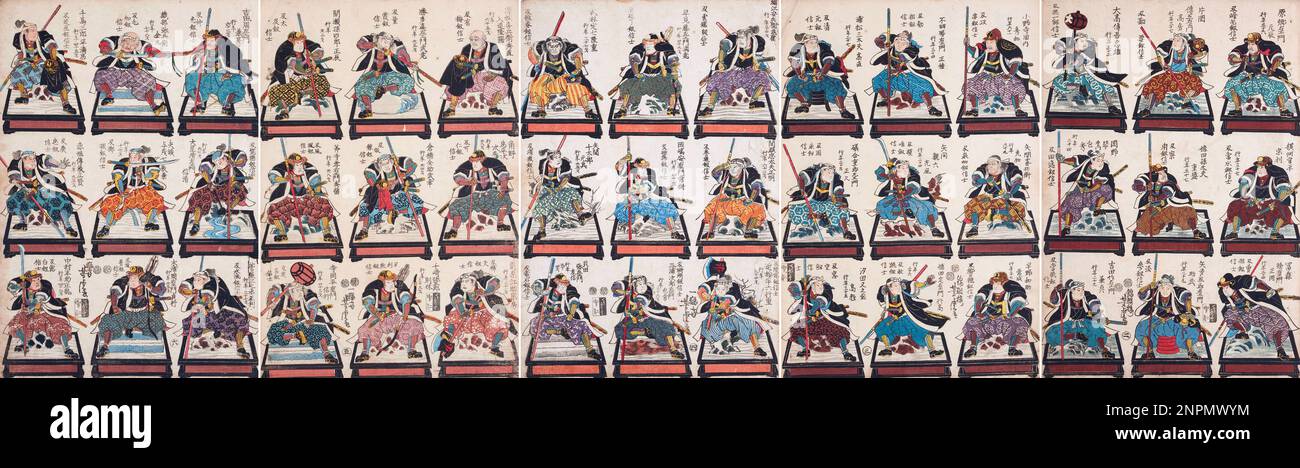 47 Ronin portraits by Utagawa Yoshitora. The revenge of the forty-seven rōnin or Akō incident or Akō vendetta, historical event in Japan in which a band of rōnin (lordless samurai) avenged the death of their master in 1703 Stock Photohttps://www.alamy.com/image-license-details/?v=1https://www.alamy.com/47-ronin-portraits-by-utagawa-yoshitora-the-revenge-of-the-forty-seven-rnin-or-ak-incident-or-ak-vendetta-historical-event-in-japan-in-which-a-band-of-rnin-lordless-samurai-avenged-the-death-of-their-master-in-1703-image530292888.html
47 Ronin portraits by Utagawa Yoshitora. The revenge of the forty-seven rōnin or Akō incident or Akō vendetta, historical event in Japan in which a band of rōnin (lordless samurai) avenged the death of their master in 1703 Stock Photohttps://www.alamy.com/image-license-details/?v=1https://www.alamy.com/47-ronin-portraits-by-utagawa-yoshitora-the-revenge-of-the-forty-seven-rnin-or-ak-incident-or-ak-vendetta-historical-event-in-japan-in-which-a-band-of-rnin-lordless-samurai-avenged-the-death-of-their-master-in-1703-image530292888.htmlRM2NPMWYM–47 Ronin portraits by Utagawa Yoshitora. The revenge of the forty-seven rōnin or Akō incident or Akō vendetta, historical event in Japan in which a band of rōnin (lordless samurai) avenged the death of their master in 1703
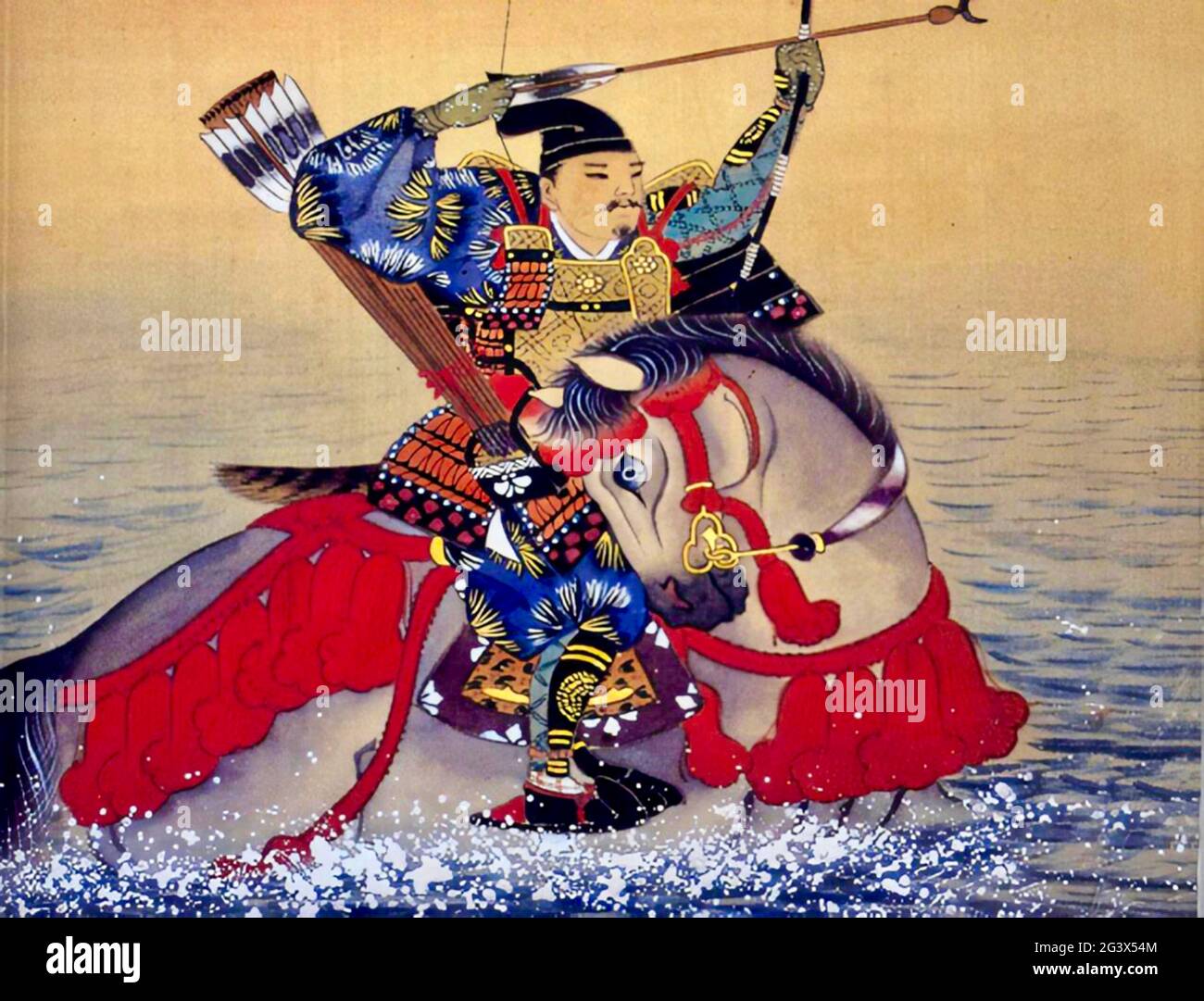 Painting of Nasu no Yoichi, a famous samurai archer, during the Battle of Yashima in 1184 Stock Photohttps://www.alamy.com/image-license-details/?v=1https://www.alamy.com/painting-of-nasu-no-yoichi-a-famous-samurai-archer-during-the-battle-of-yashima-in-1184-image432677972.html
Painting of Nasu no Yoichi, a famous samurai archer, during the Battle of Yashima in 1184 Stock Photohttps://www.alamy.com/image-license-details/?v=1https://www.alamy.com/painting-of-nasu-no-yoichi-a-famous-samurai-archer-during-the-battle-of-yashima-in-1184-image432677972.htmlRF2G3X54M–Painting of Nasu no Yoichi, a famous samurai archer, during the Battle of Yashima in 1184
 A japanese drawings with a samurai holding a sword Silk painting a beauty to look at Stock Photohttps://www.alamy.com/image-license-details/?v=1https://www.alamy.com/stock-photo-a-japanese-drawings-with-a-samurai-holding-a-sword-silk-painting-a-15556133.html
A japanese drawings with a samurai holding a sword Silk painting a beauty to look at Stock Photohttps://www.alamy.com/image-license-details/?v=1https://www.alamy.com/stock-photo-a-japanese-drawings-with-a-samurai-holding-a-sword-silk-painting-a-15556133.htmlRMANM4KJ–A japanese drawings with a samurai holding a sword Silk painting a beauty to look at
 Samurai Warrior riding a horse. A Japanese painting on silk, in a traditional Japanese style. Artist: Unknown Stock Photohttps://www.alamy.com/image-license-details/?v=1https://www.alamy.com/samurai-warrior-riding-a-horse-a-japanese-painting-on-silk-in-a-traditional-japanese-style-artist-unknown-image262778013.html
Samurai Warrior riding a horse. A Japanese painting on silk, in a traditional Japanese style. Artist: Unknown Stock Photohttps://www.alamy.com/image-license-details/?v=1https://www.alamy.com/samurai-warrior-riding-a-horse-a-japanese-painting-on-silk-in-a-traditional-japanese-style-artist-unknown-image262778013.htmlRMW7EG11–Samurai Warrior riding a horse. A Japanese painting on silk, in a traditional Japanese style. Artist: Unknown
 a green samurai with weapon painting background Stock Photohttps://www.alamy.com/image-license-details/?v=1https://www.alamy.com/stock-photo-a-green-samurai-with-weapon-painting-background-73720366.html
a green samurai with weapon painting background Stock Photohttps://www.alamy.com/image-license-details/?v=1https://www.alamy.com/stock-photo-a-green-samurai-with-weapon-painting-background-73720366.htmlRFE7X726–a green samurai with weapon painting background
 Vintage Stock Photohttps://www.alamy.com/image-license-details/?v=1https://www.alamy.com/vintage-image342405518.html
Vintage Stock Photohttps://www.alamy.com/image-license-details/?v=1https://www.alamy.com/vintage-image342405518.htmlRM2AW1WME–Vintage
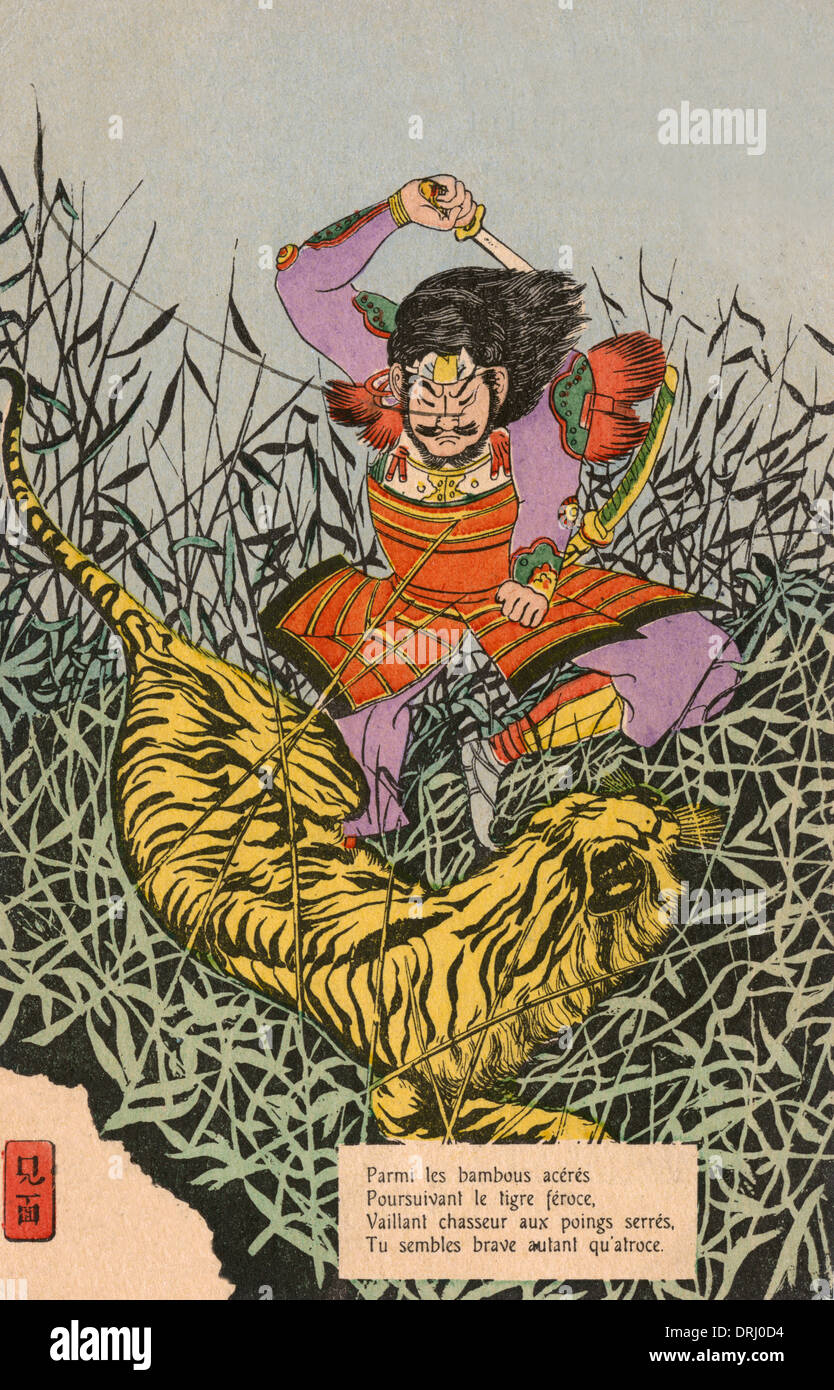 Japanese Samurai warrior hunting a tiger Stock Photohttps://www.alamy.com/image-license-details/?v=1https://www.alamy.com/japanese-samurai-warrior-hunting-a-tiger-image66163696.html
Japanese Samurai warrior hunting a tiger Stock Photohttps://www.alamy.com/image-license-details/?v=1https://www.alamy.com/japanese-samurai-warrior-hunting-a-tiger-image66163696.htmlRMDRJ0D4–Japanese Samurai warrior hunting a tiger
 Samurai bij rivier Rijksmuseum RP P 2008 148 Stock Photohttps://www.alamy.com/image-license-details/?v=1https://www.alamy.com/stock-photo-samurai-bij-rivier-rijksmuseum-rp-p-2008-148-140522484.html
Samurai bij rivier Rijksmuseum RP P 2008 148 Stock Photohttps://www.alamy.com/image-license-details/?v=1https://www.alamy.com/stock-photo-samurai-bij-rivier-rijksmuseum-rp-p-2008-148-140522484.htmlRMJ4H9T4–Samurai bij rivier Rijksmuseum RP P 2008 148
 Front and back view of uniform and armour for samurai Stock Photohttps://www.alamy.com/image-license-details/?v=1https://www.alamy.com/stock-photo-front-and-back-view-of-uniform-and-armour-for-samurai-76389547.html
Front and back view of uniform and armour for samurai Stock Photohttps://www.alamy.com/image-license-details/?v=1https://www.alamy.com/stock-photo-front-and-back-view-of-uniform-and-armour-for-samurai-76389547.htmlRMEC7RJ3–Front and back view of uniform and armour for samurai
 Utagawa Yoshitaki - The Actor Jitsukawa Enzaburo as a Samurai - Walters 9593 Stock Photohttps://www.alamy.com/image-license-details/?v=1https://www.alamy.com/stock-photo-utagawa-yoshitaki-the-actor-jitsukawa-enzaburo-as-a-samurai-walters-134801256.html
Utagawa Yoshitaki - The Actor Jitsukawa Enzaburo as a Samurai - Walters 9593 Stock Photohttps://www.alamy.com/image-license-details/?v=1https://www.alamy.com/stock-photo-utagawa-yoshitaki-the-actor-jitsukawa-enzaburo-as-a-samurai-walters-134801256.htmlRMHR8MAG–Utagawa Yoshitaki - The Actor Jitsukawa Enzaburo as a Samurai - Walters 9593
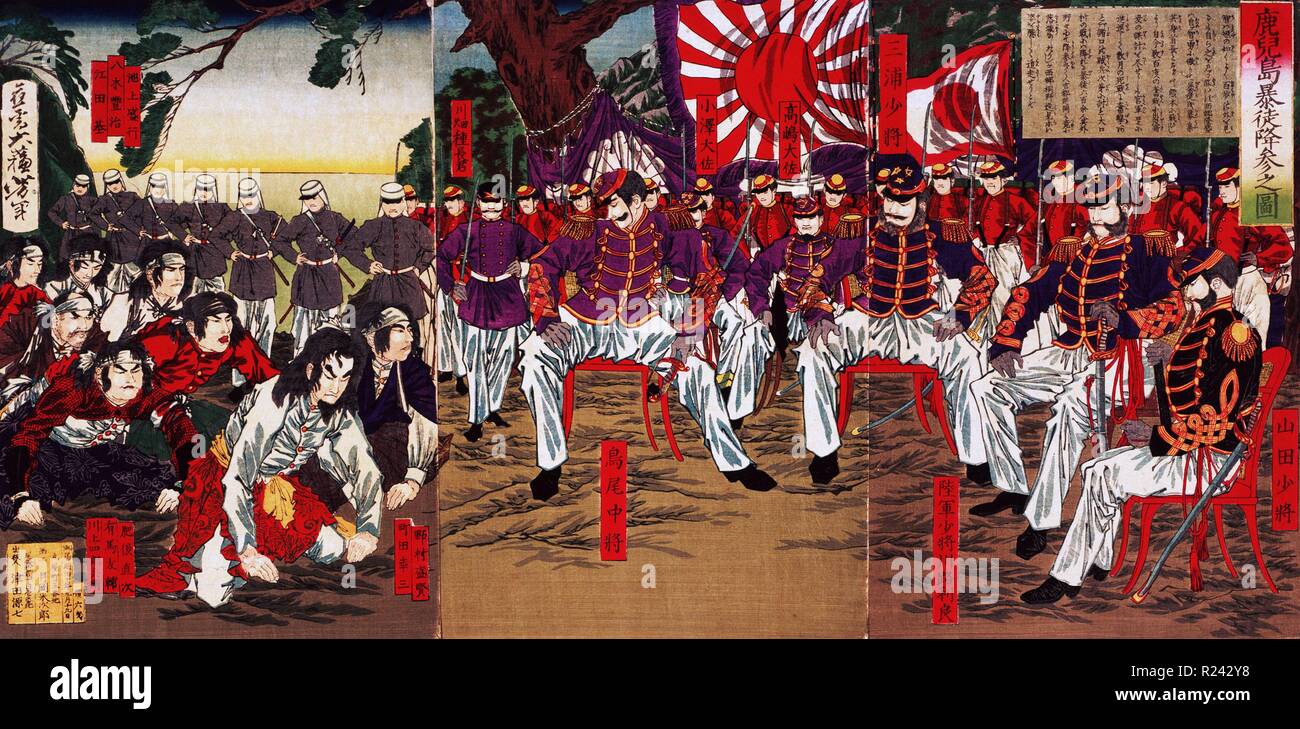 Satsuma Rebels, Satsuma samurai, 1877, Japan, Stock Photohttps://www.alamy.com/image-license-details/?v=1https://www.alamy.com/satsuma-rebels-satsuma-samurai-1877-japan-image225054236.html
Satsuma Rebels, Satsuma samurai, 1877, Japan, Stock Photohttps://www.alamy.com/image-license-details/?v=1https://www.alamy.com/satsuma-rebels-satsuma-samurai-1877-japan-image225054236.htmlRMR242Y8–Satsuma Rebels, Satsuma samurai, 1877, Japan,
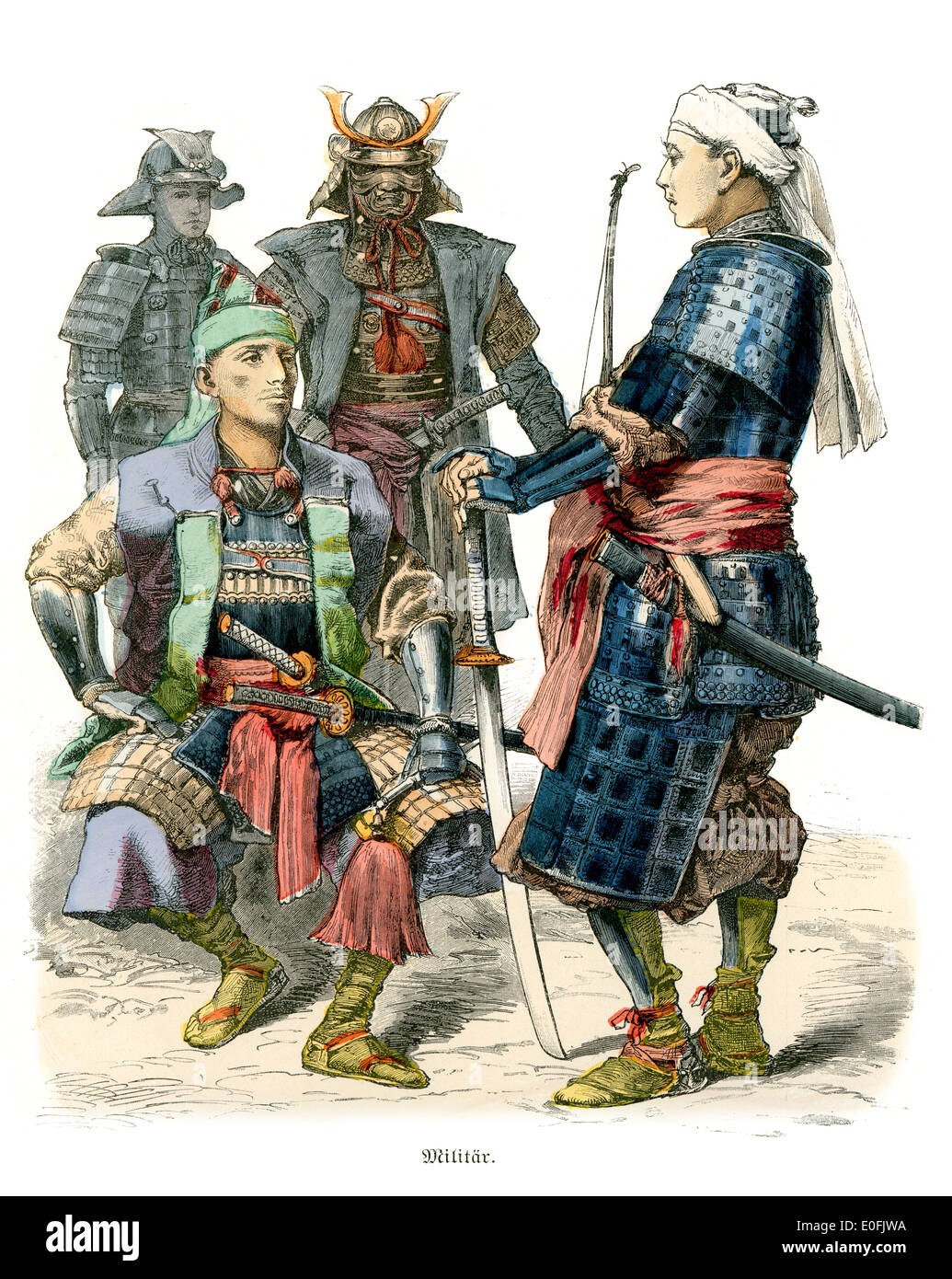 Traditional costumes of Japan, 19th Century. Samurai Stock Photohttps://www.alamy.com/image-license-details/?v=1https://www.alamy.com/traditional-costumes-of-japan-19th-century-samurai-image69185574.html
Traditional costumes of Japan, 19th Century. Samurai Stock Photohttps://www.alamy.com/image-license-details/?v=1https://www.alamy.com/traditional-costumes-of-japan-19th-century-samurai-image69185574.htmlRME0FJWA–Traditional costumes of Japan, 19th Century. Samurai
 samurai riding a horse in the autumn forest, digital art style, illustration painting Stock Photohttps://www.alamy.com/image-license-details/?v=1https://www.alamy.com/samurai-riding-a-horse-in-the-autumn-forest-digital-art-style-illustration-painting-image369019249.html
samurai riding a horse in the autumn forest, digital art style, illustration painting Stock Photohttps://www.alamy.com/image-license-details/?v=1https://www.alamy.com/samurai-riding-a-horse-in-the-autumn-forest-digital-art-style-illustration-painting-image369019249.htmlRF2CCA7PW–samurai riding a horse in the autumn forest, digital art style, illustration painting
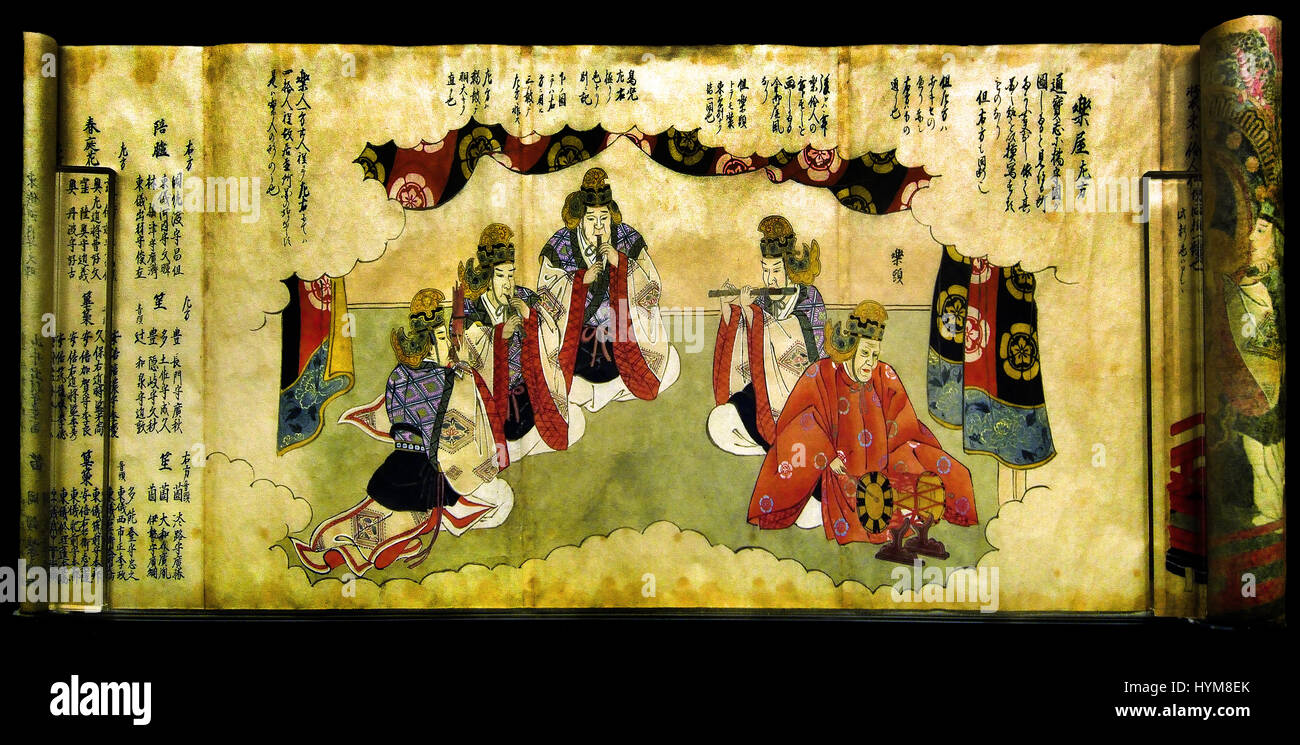 Court Dance ( Bugaku ) 1816 by Mizuno Rocho 1748-1836 Court dance was performed for the Shogun ruler in Edo . Japan ( Samurai ,Tokugawa family ) Stock Photohttps://www.alamy.com/image-license-details/?v=1https://www.alamy.com/stock-photo-court-dance-bugaku-1816-by-mizuno-rocho-1748-1836-court-dance-was-137514011.html
Court Dance ( Bugaku ) 1816 by Mizuno Rocho 1748-1836 Court dance was performed for the Shogun ruler in Edo . Japan ( Samurai ,Tokugawa family ) Stock Photohttps://www.alamy.com/image-license-details/?v=1https://www.alamy.com/stock-photo-court-dance-bugaku-1816-by-mizuno-rocho-1748-1836-court-dance-was-137514011.htmlRMHYM8EK–Court Dance ( Bugaku ) 1816 by Mizuno Rocho 1748-1836 Court dance was performed for the Shogun ruler in Edo . Japan ( Samurai ,Tokugawa family )
 Pair of Portraits of Samurai- Officials: Hirai Rinsei, 1776. Attributed to Tsukioka Settei (Japanese, 1710-1786), Jogen (Japanese). Hanging scroll; ink and color on silk; overall: 187.9 x 55.9 cm (74 x 22 in.); painting only: 96.5 x 35.5 cm (38 x 14 in Stock Photohttps://www.alamy.com/image-license-details/?v=1https://www.alamy.com/pair-of-portraits-of-samurai-officials-hirai-rinsei-1776-attributed-to-tsukioka-settei-japanese-1710-1786-jogen-japanese-hanging-scroll-ink-and-color-on-silk-overall-1879-x-559-cm-74-x-22-in-painting-only-965-x-355-cm-38-x-14-in-image240477216.html
Pair of Portraits of Samurai- Officials: Hirai Rinsei, 1776. Attributed to Tsukioka Settei (Japanese, 1710-1786), Jogen (Japanese). Hanging scroll; ink and color on silk; overall: 187.9 x 55.9 cm (74 x 22 in.); painting only: 96.5 x 35.5 cm (38 x 14 in Stock Photohttps://www.alamy.com/image-license-details/?v=1https://www.alamy.com/pair-of-portraits-of-samurai-officials-hirai-rinsei-1776-attributed-to-tsukioka-settei-japanese-1710-1786-jogen-japanese-hanging-scroll-ink-and-color-on-silk-overall-1879-x-559-cm-74-x-22-in-painting-only-965-x-355-cm-38-x-14-in-image240477216.htmlRMRY6K40–Pair of Portraits of Samurai- Officials: Hirai Rinsei, 1776. Attributed to Tsukioka Settei (Japanese, 1710-1786), Jogen (Japanese). Hanging scroll; ink and color on silk; overall: 187.9 x 55.9 cm (74 x 22 in.); painting only: 96.5 x 35.5 cm (38 x 14 in
 Samurai. Illustration of a samurai mounted on horseback, wearing armor and holding a bow, ink drawing, c. 1878 Stock Photohttps://www.alamy.com/image-license-details/?v=1https://www.alamy.com/samurai-illustration-of-a-samurai-mounted-on-horseback-wearing-armor-and-holding-a-bow-ink-drawing-c-1878-image501736519.html
Samurai. Illustration of a samurai mounted on horseback, wearing armor and holding a bow, ink drawing, c. 1878 Stock Photohttps://www.alamy.com/image-license-details/?v=1https://www.alamy.com/samurai-illustration-of-a-samurai-mounted-on-horseback-wearing-armor-and-holding-a-bow-ink-drawing-c-1878-image501736519.htmlRM2M4821B–Samurai. Illustration of a samurai mounted on horseback, wearing armor and holding a bow, ink drawing, c. 1878
 Art inspired by Samurai and Two Blindmen, Album Leaf Painting, Ink and color on paper, Japan, early 19th century, Edo Period, 10 3/4 x 13 5/8 in., 27.3 x 34.6 cm, Classic works modernized by Artotop with a splash of modernity. Shapes, color and value, eye-catching visual impact on art. Emotions through freedom of artworks in a contemporary way. A timeless message pursuing a wildly creative new direction. Artists turning to the digital medium and creating the Artotop NFT Stock Photohttps://www.alamy.com/image-license-details/?v=1https://www.alamy.com/art-inspired-by-samurai-and-two-blindmen-album-leaf-painting-ink-and-color-on-paper-japan-early-19th-century-edo-period-10-34-x-13-58-in-273-x-346-cm-classic-works-modernized-by-artotop-with-a-splash-of-modernity-shapes-color-and-value-eye-catching-visual-impact-on-art-emotions-through-freedom-of-artworks-in-a-contemporary-way-a-timeless-message-pursuing-a-wildly-creative-new-direction-artists-turning-to-the-digital-medium-and-creating-the-artotop-nft-image459572176.html
Art inspired by Samurai and Two Blindmen, Album Leaf Painting, Ink and color on paper, Japan, early 19th century, Edo Period, 10 3/4 x 13 5/8 in., 27.3 x 34.6 cm, Classic works modernized by Artotop with a splash of modernity. Shapes, color and value, eye-catching visual impact on art. Emotions through freedom of artworks in a contemporary way. A timeless message pursuing a wildly creative new direction. Artists turning to the digital medium and creating the Artotop NFT Stock Photohttps://www.alamy.com/image-license-details/?v=1https://www.alamy.com/art-inspired-by-samurai-and-two-blindmen-album-leaf-painting-ink-and-color-on-paper-japan-early-19th-century-edo-period-10-34-x-13-58-in-273-x-346-cm-classic-works-modernized-by-artotop-with-a-splash-of-modernity-shapes-color-and-value-eye-catching-visual-impact-on-art-emotions-through-freedom-of-artworks-in-a-contemporary-way-a-timeless-message-pursuing-a-wildly-creative-new-direction-artists-turning-to-the-digital-medium-and-creating-the-artotop-nft-image459572176.htmlRF2HKK900–Art inspired by Samurai and Two Blindmen, Album Leaf Painting, Ink and color on paper, Japan, early 19th century, Edo Period, 10 3/4 x 13 5/8 in., 27.3 x 34.6 cm, Classic works modernized by Artotop with a splash of modernity. Shapes, color and value, eye-catching visual impact on art. Emotions through freedom of artworks in a contemporary way. A timeless message pursuing a wildly creative new direction. Artists turning to the digital medium and creating the Artotop NFT
 Japan: 'Ichikawa Ebizo V as Benkei'. Ukiyo-e woodblock print by Utagawa Kuniyoshi (1 January 1798 - 14 April 1861), 1840. Ichikawa Ebizō V as Benkei, in the March 1840 Edo Kawarazaki-za premiere production of Kanjinchō. Utagawa Kuniyoshi was one of the last great masters of the Japanese ukiyo-e style of woodblock prints and painting. He is associated with the Utagawa school. The range of Kuniyoshi's preferred subjects included many genres: landscapes, beautiful women, Kabuki actors, cats, and mythical animals. He is known for depictions of the battles of samurai and legendary heroes. Stock Photohttps://www.alamy.com/image-license-details/?v=1https://www.alamy.com/japan-ichikawa-ebizo-v-as-benkei-ukiyo-e-woodblock-print-by-utagawa-kuniyoshi-1-january-1798-14-april-1861-1840-ichikawa-ebiz-v-as-benkei-in-the-march-1840-edo-kawarazaki-za-premiere-production-of-kanjinch-utagawa-kuniyoshi-was-one-of-the-last-great-masters-of-the-japanese-ukiyo-e-style-of-woodblock-prints-and-painting-he-is-associated-with-the-utagawa-school-the-range-of-kuniyoshis-preferred-subjects-included-many-genres-landscapes-beautiful-women-kabuki-actors-cats-and-mythical-animals-he-is-known-for-depictions-of-the-battles-of-samurai-and-legendary-heroes-image344234413.html
Japan: 'Ichikawa Ebizo V as Benkei'. Ukiyo-e woodblock print by Utagawa Kuniyoshi (1 January 1798 - 14 April 1861), 1840. Ichikawa Ebizō V as Benkei, in the March 1840 Edo Kawarazaki-za premiere production of Kanjinchō. Utagawa Kuniyoshi was one of the last great masters of the Japanese ukiyo-e style of woodblock prints and painting. He is associated with the Utagawa school. The range of Kuniyoshi's preferred subjects included many genres: landscapes, beautiful women, Kabuki actors, cats, and mythical animals. He is known for depictions of the battles of samurai and legendary heroes. Stock Photohttps://www.alamy.com/image-license-details/?v=1https://www.alamy.com/japan-ichikawa-ebizo-v-as-benkei-ukiyo-e-woodblock-print-by-utagawa-kuniyoshi-1-january-1798-14-april-1861-1840-ichikawa-ebiz-v-as-benkei-in-the-march-1840-edo-kawarazaki-za-premiere-production-of-kanjinch-utagawa-kuniyoshi-was-one-of-the-last-great-masters-of-the-japanese-ukiyo-e-style-of-woodblock-prints-and-painting-he-is-associated-with-the-utagawa-school-the-range-of-kuniyoshis-preferred-subjects-included-many-genres-landscapes-beautiful-women-kabuki-actors-cats-and-mythical-animals-he-is-known-for-depictions-of-the-battles-of-samurai-and-legendary-heroes-image344234413.htmlRM2B016E5–Japan: 'Ichikawa Ebizo V as Benkei'. Ukiyo-e woodblock print by Utagawa Kuniyoshi (1 January 1798 - 14 April 1861), 1840. Ichikawa Ebizō V as Benkei, in the March 1840 Edo Kawarazaki-za premiere production of Kanjinchō. Utagawa Kuniyoshi was one of the last great masters of the Japanese ukiyo-e style of woodblock prints and painting. He is associated with the Utagawa school. The range of Kuniyoshi's preferred subjects included many genres: landscapes, beautiful women, Kabuki actors, cats, and mythical animals. He is known for depictions of the battles of samurai and legendary heroes.
 Samurai Illustration Stock Photohttps://www.alamy.com/image-license-details/?v=1https://www.alamy.com/samurai-illustration-image239587871.html
Samurai Illustration Stock Photohttps://www.alamy.com/image-license-details/?v=1https://www.alamy.com/samurai-illustration-image239587871.htmlRFRWP4NK–Samurai Illustration
 The artist Masanobu Okumura in glasses signing his name to a folding-screen painting while a courtesan passes a letter to a samurai. Woodblock print by Masanobu Okumura (1686-1764) from Fuzoku Emakimono, Picture Scroll of the Water Trade, Tokyo, reprint circa 1880. Stock Photohttps://www.alamy.com/image-license-details/?v=1https://www.alamy.com/the-artist-masanobu-okumura-in-glasses-signing-his-name-to-a-folding-screen-painting-while-a-courtesan-passes-a-letter-to-a-samurai-woodblock-print-by-masanobu-okumura-1686-1764-from-fuzoku-emakimono-picture-scroll-of-the-water-trade-tokyo-reprint-circa-1880-image212444493.html
The artist Masanobu Okumura in glasses signing his name to a folding-screen painting while a courtesan passes a letter to a samurai. Woodblock print by Masanobu Okumura (1686-1764) from Fuzoku Emakimono, Picture Scroll of the Water Trade, Tokyo, reprint circa 1880. Stock Photohttps://www.alamy.com/image-license-details/?v=1https://www.alamy.com/the-artist-masanobu-okumura-in-glasses-signing-his-name-to-a-folding-screen-painting-while-a-courtesan-passes-a-letter-to-a-samurai-woodblock-print-by-masanobu-okumura-1686-1764-from-fuzoku-emakimono-picture-scroll-of-the-water-trade-tokyo-reprint-circa-1880-image212444493.htmlRMP9HK39–The artist Masanobu Okumura in glasses signing his name to a folding-screen painting while a courtesan passes a letter to a samurai. Woodblock print by Masanobu Okumura (1686-1764) from Fuzoku Emakimono, Picture Scroll of the Water Trade, Tokyo, reprint circa 1880.
 Kamisaka Sekka - Mount Fuji - Snow covered peak - 1909-1910 Stock Photohttps://www.alamy.com/image-license-details/?v=1https://www.alamy.com/kamisaka-sekka-mount-fuji-snow-covered-peak-1909-1910-image463534682.html
Kamisaka Sekka - Mount Fuji - Snow covered peak - 1909-1910 Stock Photohttps://www.alamy.com/image-license-details/?v=1https://www.alamy.com/kamisaka-sekka-mount-fuji-snow-covered-peak-1909-1910-image463534682.htmlRF2HX3R62–Kamisaka Sekka - Mount Fuji - Snow covered peak - 1909-1910
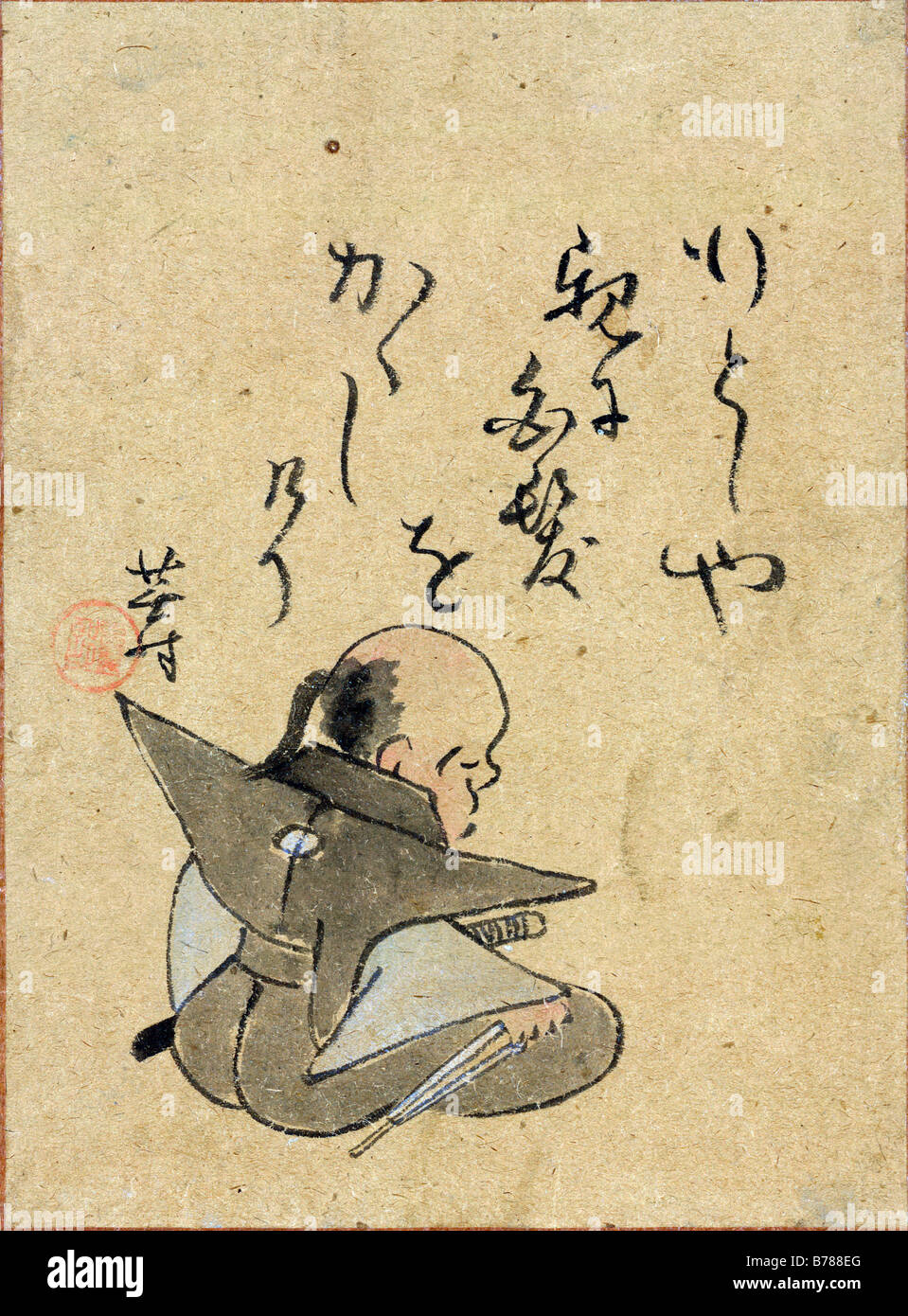 Sitting samurai meditating - Art painting Stock Photohttps://www.alamy.com/image-license-details/?v=1https://www.alamy.com/stock-photo-sitting-samurai-meditating-art-painting-21695256.html
Sitting samurai meditating - Art painting Stock Photohttps://www.alamy.com/image-license-details/?v=1https://www.alamy.com/stock-photo-sitting-samurai-meditating-art-painting-21695256.htmlRMB788EG–Sitting samurai meditating - Art painting
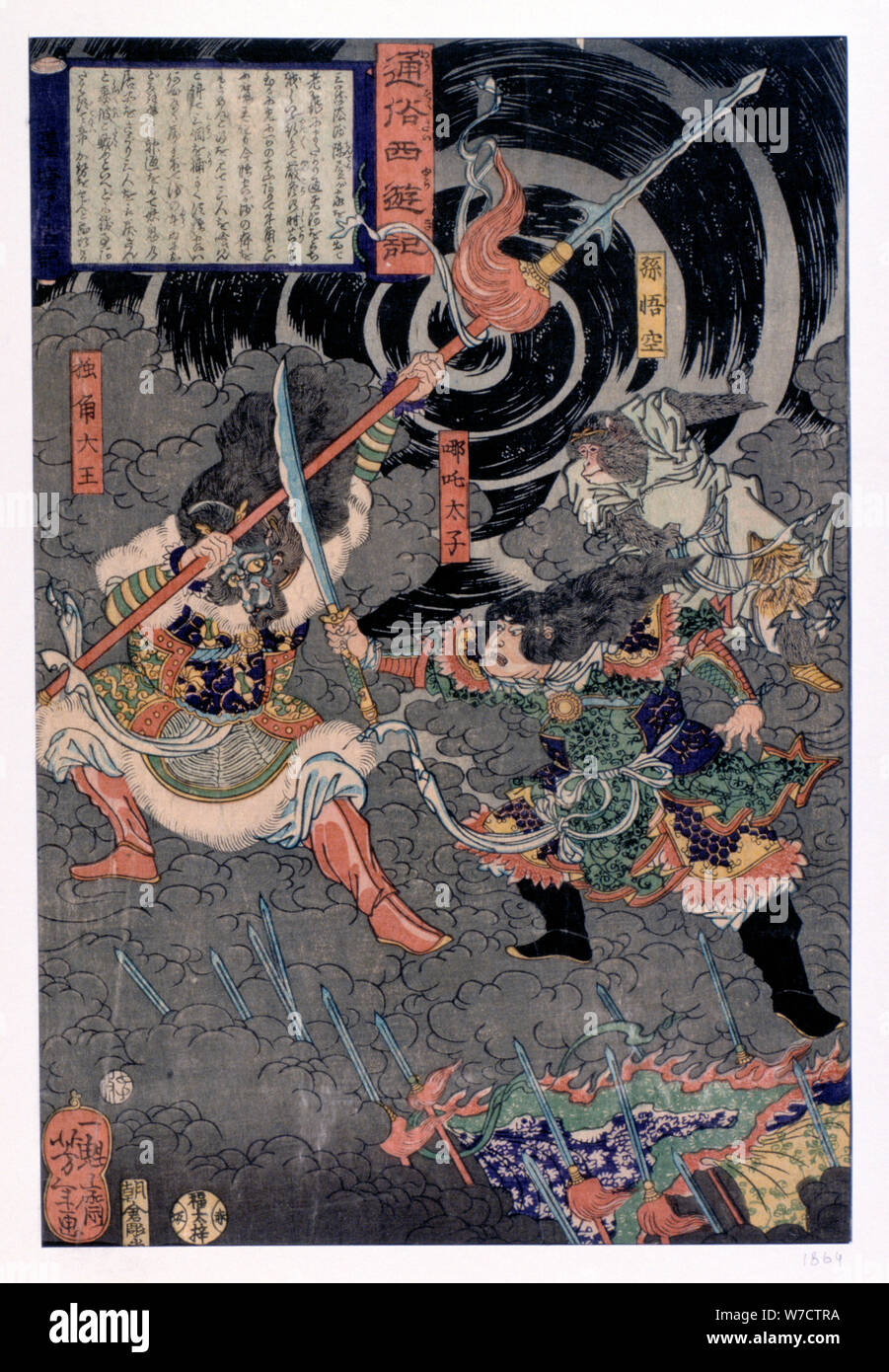 Samurai fighting against monkeys, 19th century. Artist: Unknown Stock Photohttps://www.alamy.com/image-license-details/?v=1https://www.alamy.com/samurai-fighting-against-monkeys-19th-century-artist-unknown-image262741006.html
Samurai fighting against monkeys, 19th century. Artist: Unknown Stock Photohttps://www.alamy.com/image-license-details/?v=1https://www.alamy.com/samurai-fighting-against-monkeys-19th-century-artist-unknown-image262741006.htmlRMW7CTRA–Samurai fighting against monkeys, 19th century. Artist: Unknown
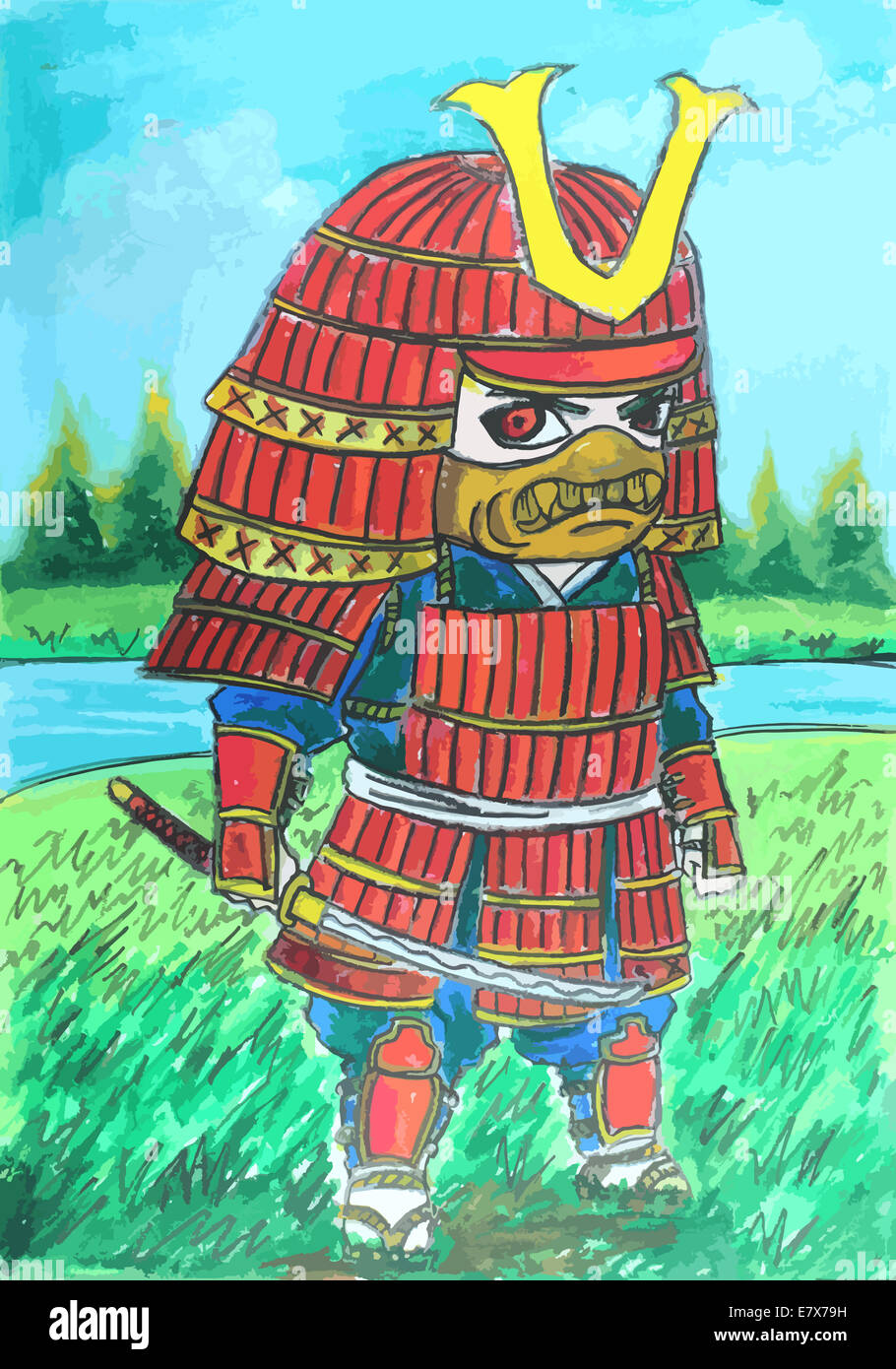 a red samurai with weapon painting background Stock Photohttps://www.alamy.com/image-license-details/?v=1https://www.alamy.com/stock-photo-a-red-samurai-with-weapon-painting-background-73720573.html
a red samurai with weapon painting background Stock Photohttps://www.alamy.com/image-license-details/?v=1https://www.alamy.com/stock-photo-a-red-samurai-with-weapon-painting-background-73720573.htmlRFE7X79H–a red samurai with weapon painting background
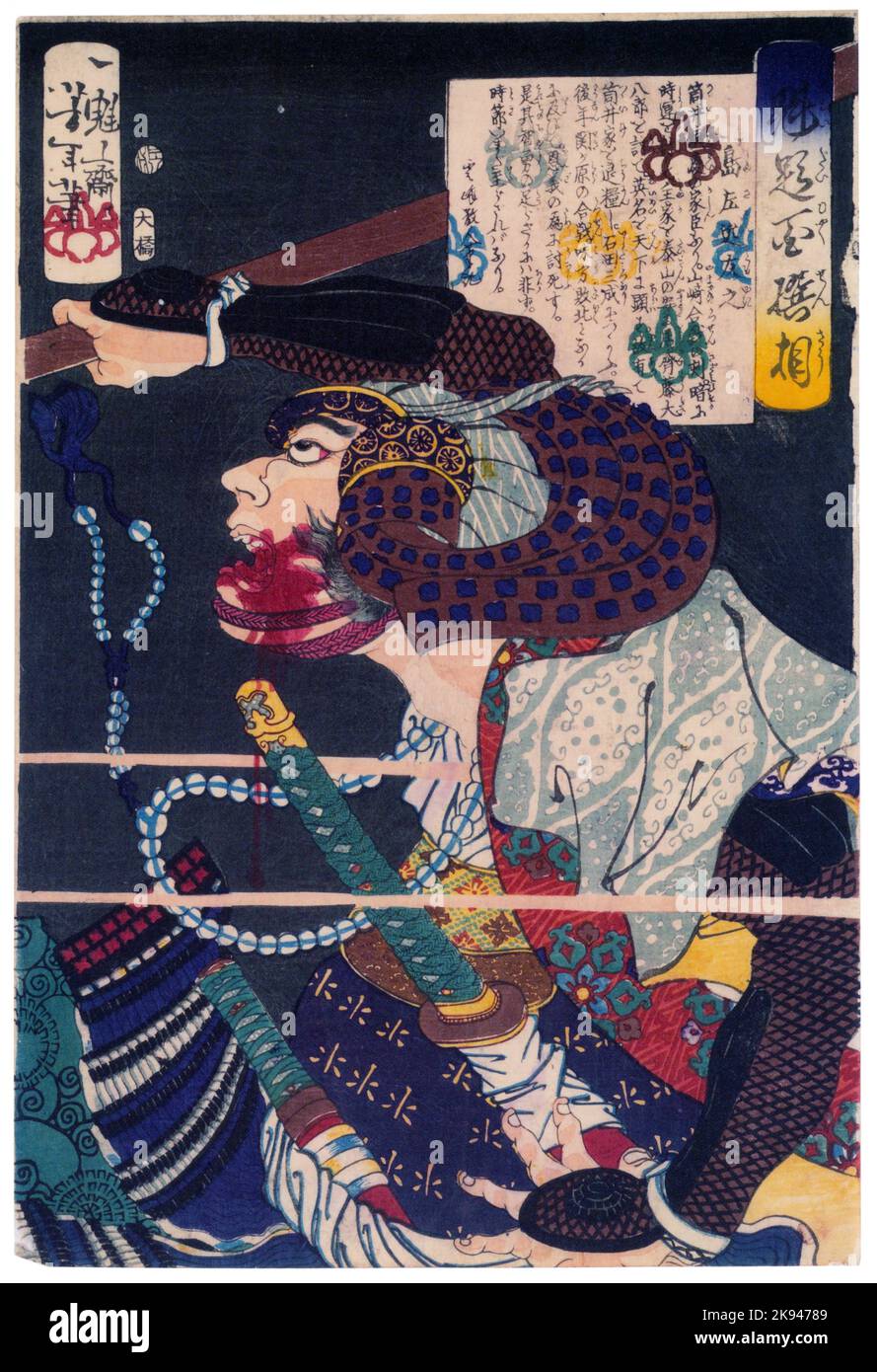 Tsukioka Yoshitoshi – Shima Sakon Tomoyuki from Yoshitoshi’s Selection of One Hundred Warrior Stock Photohttps://www.alamy.com/image-license-details/?v=1https://www.alamy.com/tsukioka-yoshitoshi-shima-sakon-tomoyuki-from-yoshitoshis-selection-of-one-hundred-warrior-image487515737.html
Tsukioka Yoshitoshi – Shima Sakon Tomoyuki from Yoshitoshi’s Selection of One Hundred Warrior Stock Photohttps://www.alamy.com/image-license-details/?v=1https://www.alamy.com/tsukioka-yoshitoshi-shima-sakon-tomoyuki-from-yoshitoshis-selection-of-one-hundred-warrior-image487515737.htmlRM2K94789–Tsukioka Yoshitoshi – Shima Sakon Tomoyuki from Yoshitoshi’s Selection of One Hundred Warrior
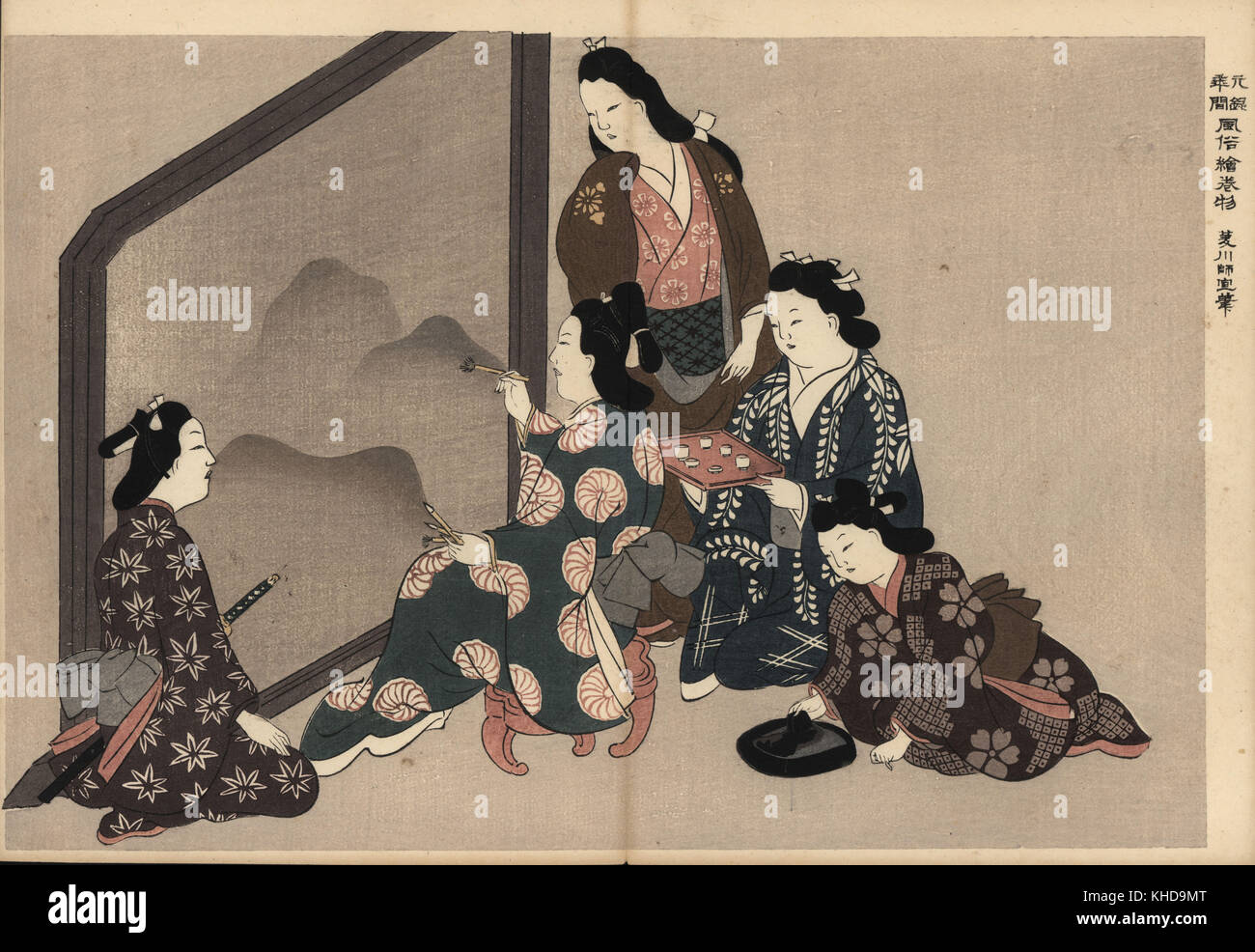 Courtesans painting a large sumi-e (ink-wash painting). A samurai customer watches, and a kamuro maid prepares the ink. Woodblock print by Moronobu Hishikawa (1618-1694) from Fuzoku Emakimono, Picture Scroll of the Water Trade, Tokyo, reprint circa 1880. Stock Photohttps://www.alamy.com/image-license-details/?v=1https://www.alamy.com/stock-image-courtesans-painting-a-large-sumi-e-ink-wash-painting-a-samurai-customer-165635480.html
Courtesans painting a large sumi-e (ink-wash painting). A samurai customer watches, and a kamuro maid prepares the ink. Woodblock print by Moronobu Hishikawa (1618-1694) from Fuzoku Emakimono, Picture Scroll of the Water Trade, Tokyo, reprint circa 1880. Stock Photohttps://www.alamy.com/image-license-details/?v=1https://www.alamy.com/stock-image-courtesans-painting-a-large-sumi-e-ink-wash-painting-a-samurai-customer-165635480.htmlRMKHD9MT–Courtesans painting a large sumi-e (ink-wash painting). A samurai customer watches, and a kamuro maid prepares the ink. Woodblock print by Moronobu Hishikawa (1618-1694) from Fuzoku Emakimono, Picture Scroll of the Water Trade, Tokyo, reprint circa 1880.
 Samurai Aoyama en het spook Okiku. Rijksmuseum RP P 1994 55C Stock Photohttps://www.alamy.com/image-license-details/?v=1https://www.alamy.com/stock-photo-samurai-aoyama-en-het-spook-okiku-rijksmuseum-rp-p-1994-55c-140522547.html
Samurai Aoyama en het spook Okiku. Rijksmuseum RP P 1994 55C Stock Photohttps://www.alamy.com/image-license-details/?v=1https://www.alamy.com/stock-photo-samurai-aoyama-en-het-spook-okiku-rijksmuseum-rp-p-1994-55c-140522547.htmlRMJ4H9XB–Samurai Aoyama en het spook Okiku. Rijksmuseum RP P 1994 55C
 Satsuma Rebels, Satsuma samurai, 1877, Japan, Stock Photohttps://www.alamy.com/image-license-details/?v=1https://www.alamy.com/stock-photo-satsuma-rebels-satsuma-samurai-1877-japan-84969934.html
Satsuma Rebels, Satsuma samurai, 1877, Japan, Stock Photohttps://www.alamy.com/image-license-details/?v=1https://www.alamy.com/stock-photo-satsuma-rebels-satsuma-samurai-1877-japan-84969934.htmlRMEX6M0E–Satsuma Rebels, Satsuma samurai, 1877, Japan,
 Samurai in gala costume Stock Photohttps://www.alamy.com/image-license-details/?v=1https://www.alamy.com/stock-photo-samurai-in-gala-costume-136620975.html
Samurai in gala costume Stock Photohttps://www.alamy.com/image-license-details/?v=1https://www.alamy.com/stock-photo-samurai-in-gala-costume-136620975.htmlRMHX7HCF–Samurai in gala costume
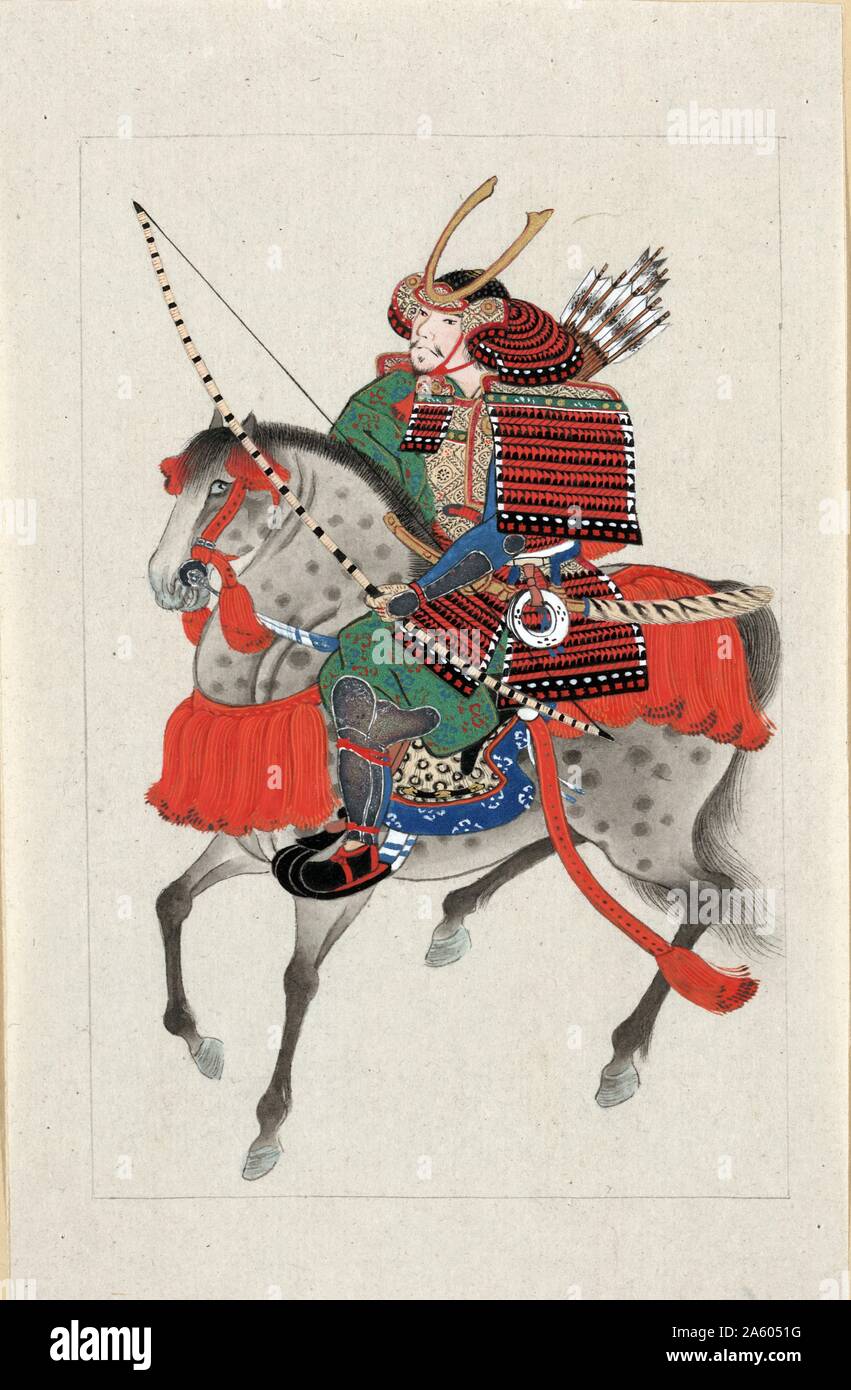 Samurai on horseback; wearing armour and horned helmet; carrying bow and arrows Stock Photohttps://www.alamy.com/image-license-details/?v=1https://www.alamy.com/samurai-on-horseback-wearing-armour-and-horned-helmet-carrying-bow-and-arrows-image330688892.html
Samurai on horseback; wearing armour and horned helmet; carrying bow and arrows Stock Photohttps://www.alamy.com/image-license-details/?v=1https://www.alamy.com/samurai-on-horseback-wearing-armour-and-horned-helmet-carrying-bow-and-arrows-image330688892.htmlRM2A6051G–Samurai on horseback; wearing armour and horned helmet; carrying bow and arrows
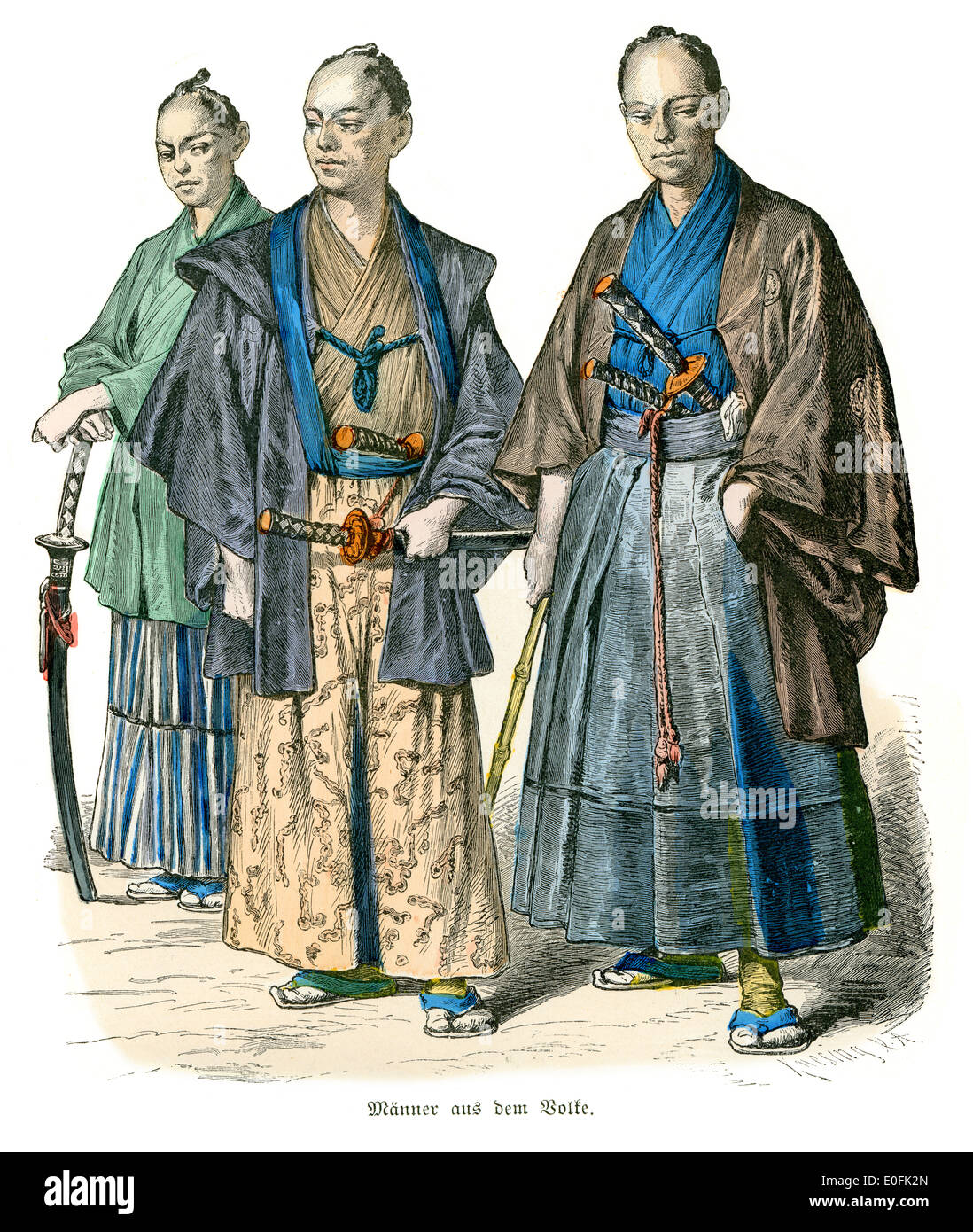 Traditional costumes of Japan, 19th Century. Samurai Stock Photohttps://www.alamy.com/image-license-details/?v=1https://www.alamy.com/traditional-costumes-of-japan-19th-century-samurai-image69185725.html
Traditional costumes of Japan, 19th Century. Samurai Stock Photohttps://www.alamy.com/image-license-details/?v=1https://www.alamy.com/traditional-costumes-of-japan-19th-century-samurai-image69185725.htmlRME0FK2N–Traditional costumes of Japan, 19th Century. Samurai
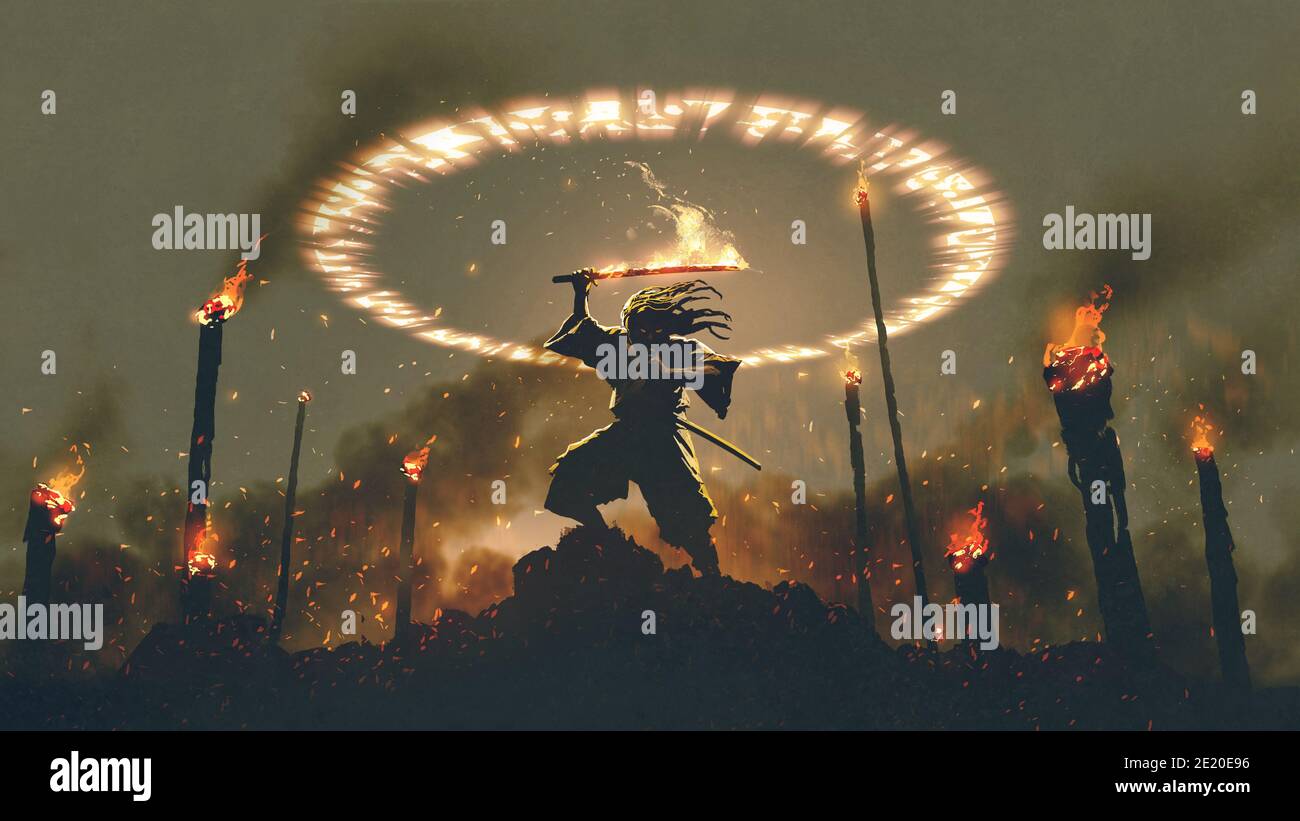 scene of samurai with fire sword standing on the rock, digital art style, illustration painting Stock Photohttps://www.alamy.com/image-license-details/?v=1https://www.alamy.com/scene-of-samurai-with-fire-sword-standing-on-the-rock-digital-art-style-illustration-painting-image397079010.html
scene of samurai with fire sword standing on the rock, digital art style, illustration painting Stock Photohttps://www.alamy.com/image-license-details/?v=1https://www.alamy.com/scene-of-samurai-with-fire-sword-standing-on-the-rock-digital-art-style-illustration-painting-image397079010.htmlRF2E20E96–scene of samurai with fire sword standing on the rock, digital art style, illustration painting
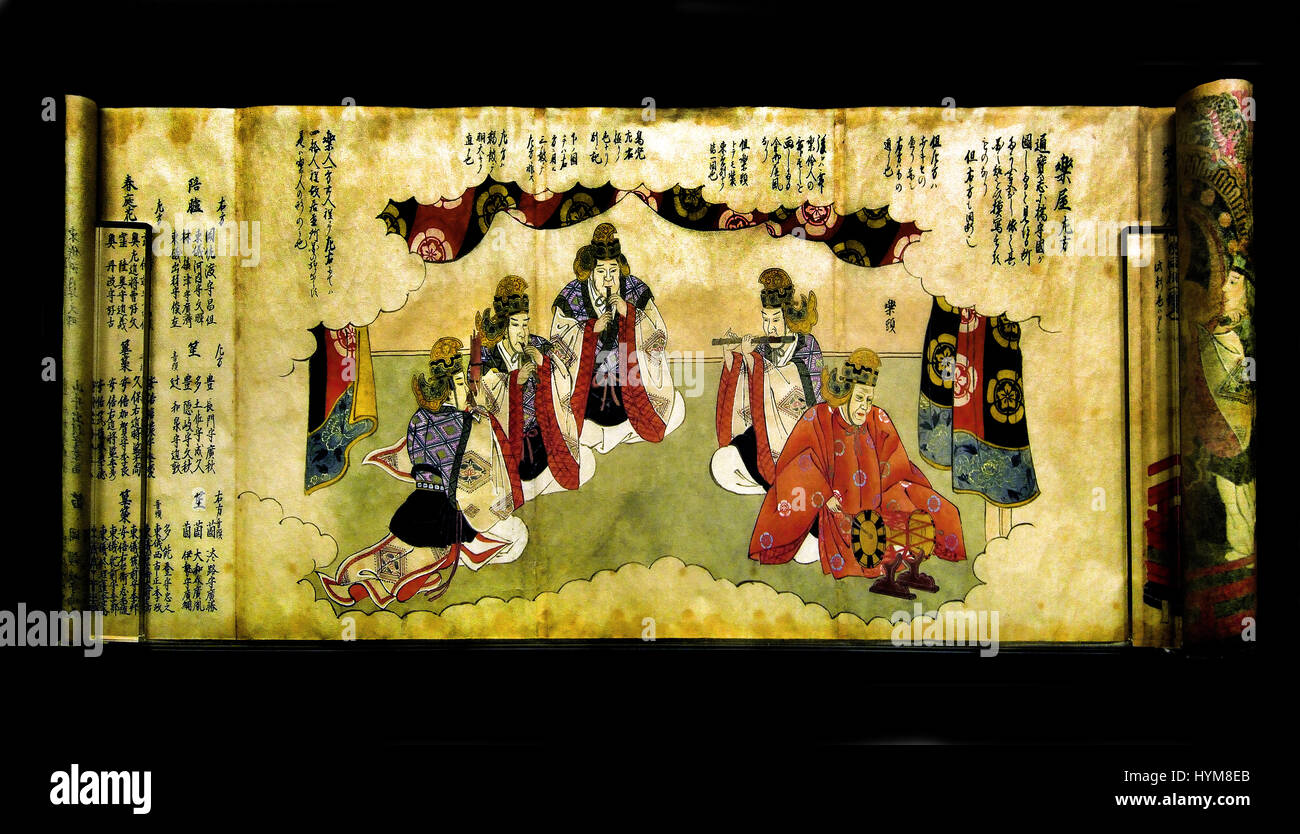 Court Dance ( Bugaku ) 1816 by Mizuno Rocho 1748-1836 Court dance was performed for the Shogun ruler in Edo . Japan ( Samurai ,Tokugawa family ) Stock Photohttps://www.alamy.com/image-license-details/?v=1https://www.alamy.com/stock-photo-court-dance-bugaku-1816-by-mizuno-rocho-1748-1836-court-dance-was-137514003.html
Court Dance ( Bugaku ) 1816 by Mizuno Rocho 1748-1836 Court dance was performed for the Shogun ruler in Edo . Japan ( Samurai ,Tokugawa family ) Stock Photohttps://www.alamy.com/image-license-details/?v=1https://www.alamy.com/stock-photo-court-dance-bugaku-1816-by-mizuno-rocho-1748-1836-court-dance-was-137514003.htmlRMHYM8EB–Court Dance ( Bugaku ) 1816 by Mizuno Rocho 1748-1836 Court dance was performed for the Shogun ruler in Edo . Japan ( Samurai ,Tokugawa family )
 Pair of Portraits of Samurai-Officials: Hirai Kyosei, 1776. Tsukioka Settei (Japanese, 1710-1786), Sando Hyosho (Japanese). Hanging scroll; ink and color on silk; overall: 187.9 x 55.9 cm (74 x 22 in.); painting only: 96.5 x 38.3 cm (38 x 15 1/16 in Stock Photohttps://www.alamy.com/image-license-details/?v=1https://www.alamy.com/pair-of-portraits-of-samurai-officials-hirai-kyosei-1776-tsukioka-settei-japanese-1710-1786-sando-hyosho-japanese-hanging-scroll-ink-and-color-on-silk-overall-1879-x-559-cm-74-x-22-in-painting-only-965-x-383-cm-38-x-15-116-in-image240477213.html
Pair of Portraits of Samurai-Officials: Hirai Kyosei, 1776. Tsukioka Settei (Japanese, 1710-1786), Sando Hyosho (Japanese). Hanging scroll; ink and color on silk; overall: 187.9 x 55.9 cm (74 x 22 in.); painting only: 96.5 x 38.3 cm (38 x 15 1/16 in Stock Photohttps://www.alamy.com/image-license-details/?v=1https://www.alamy.com/pair-of-portraits-of-samurai-officials-hirai-kyosei-1776-tsukioka-settei-japanese-1710-1786-sando-hyosho-japanese-hanging-scroll-ink-and-color-on-silk-overall-1879-x-559-cm-74-x-22-in-painting-only-965-x-383-cm-38-x-15-116-in-image240477213.htmlRMRY6K3W–Pair of Portraits of Samurai-Officials: Hirai Kyosei, 1776. Tsukioka Settei (Japanese, 1710-1786), Sando Hyosho (Japanese). Hanging scroll; ink and color on silk; overall: 187.9 x 55.9 cm (74 x 22 in.); painting only: 96.5 x 38.3 cm (38 x 15 1/16 in
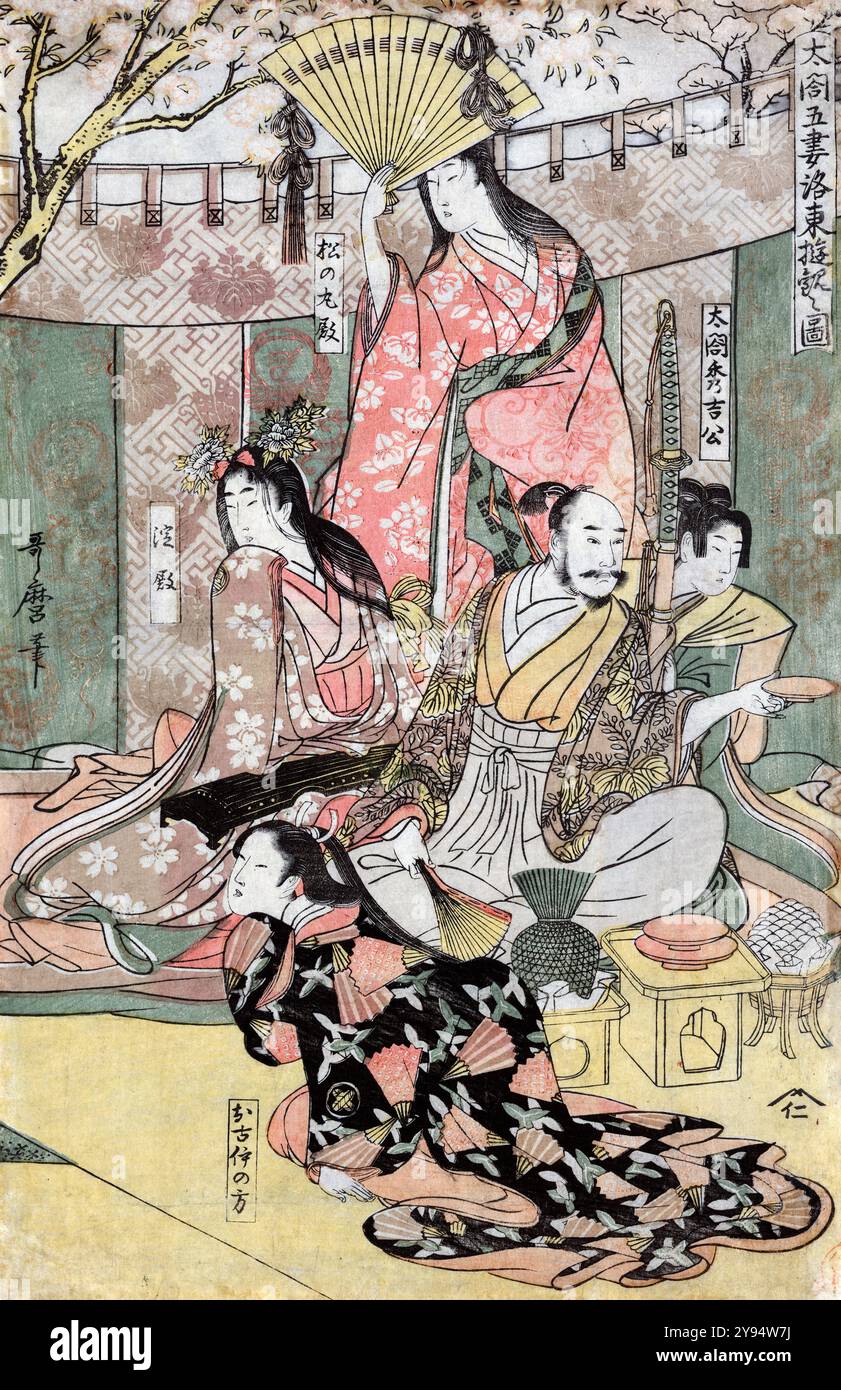 Toyotomi Hideyoshi. Portrait of the Japanese samurai and daimyō (feudal lord) of the late Sengoku period, Toyotomi Hideyoshi (1537-1598) sitting with his wives and concubines Stock Photohttps://www.alamy.com/image-license-details/?v=1https://www.alamy.com/toyotomi-hideyoshi-portrait-of-the-japanese-samurai-and-daimy-feudal-lord-of-the-late-sengoku-period-toyotomi-hideyoshi-1537-1598-sitting-with-his-wives-and-concubines-image625212774.html
Toyotomi Hideyoshi. Portrait of the Japanese samurai and daimyō (feudal lord) of the late Sengoku period, Toyotomi Hideyoshi (1537-1598) sitting with his wives and concubines Stock Photohttps://www.alamy.com/image-license-details/?v=1https://www.alamy.com/toyotomi-hideyoshi-portrait-of-the-japanese-samurai-and-daimy-feudal-lord-of-the-late-sengoku-period-toyotomi-hideyoshi-1537-1598-sitting-with-his-wives-and-concubines-image625212774.htmlRM2Y94W7J–Toyotomi Hideyoshi. Portrait of the Japanese samurai and daimyō (feudal lord) of the late Sengoku period, Toyotomi Hideyoshi (1537-1598) sitting with his wives and concubines
 Portrait of Sato Issai at 70, color on silk, by Tsubaki Chinzan, Edo period, 1841 Stock Photohttps://www.alamy.com/image-license-details/?v=1https://www.alamy.com/portrait-of-sato-issai-at-70-color-on-silk-by-tsubaki-chinzan-edo-period-1841-image261226451.html
Portrait of Sato Issai at 70, color on silk, by Tsubaki Chinzan, Edo period, 1841 Stock Photohttps://www.alamy.com/image-license-details/?v=1https://www.alamy.com/portrait-of-sato-issai-at-70-color-on-silk-by-tsubaki-chinzan-edo-period-1841-image261226451.htmlRFW4YW03–Portrait of Sato Issai at 70, color on silk, by Tsubaki Chinzan, Edo period, 1841
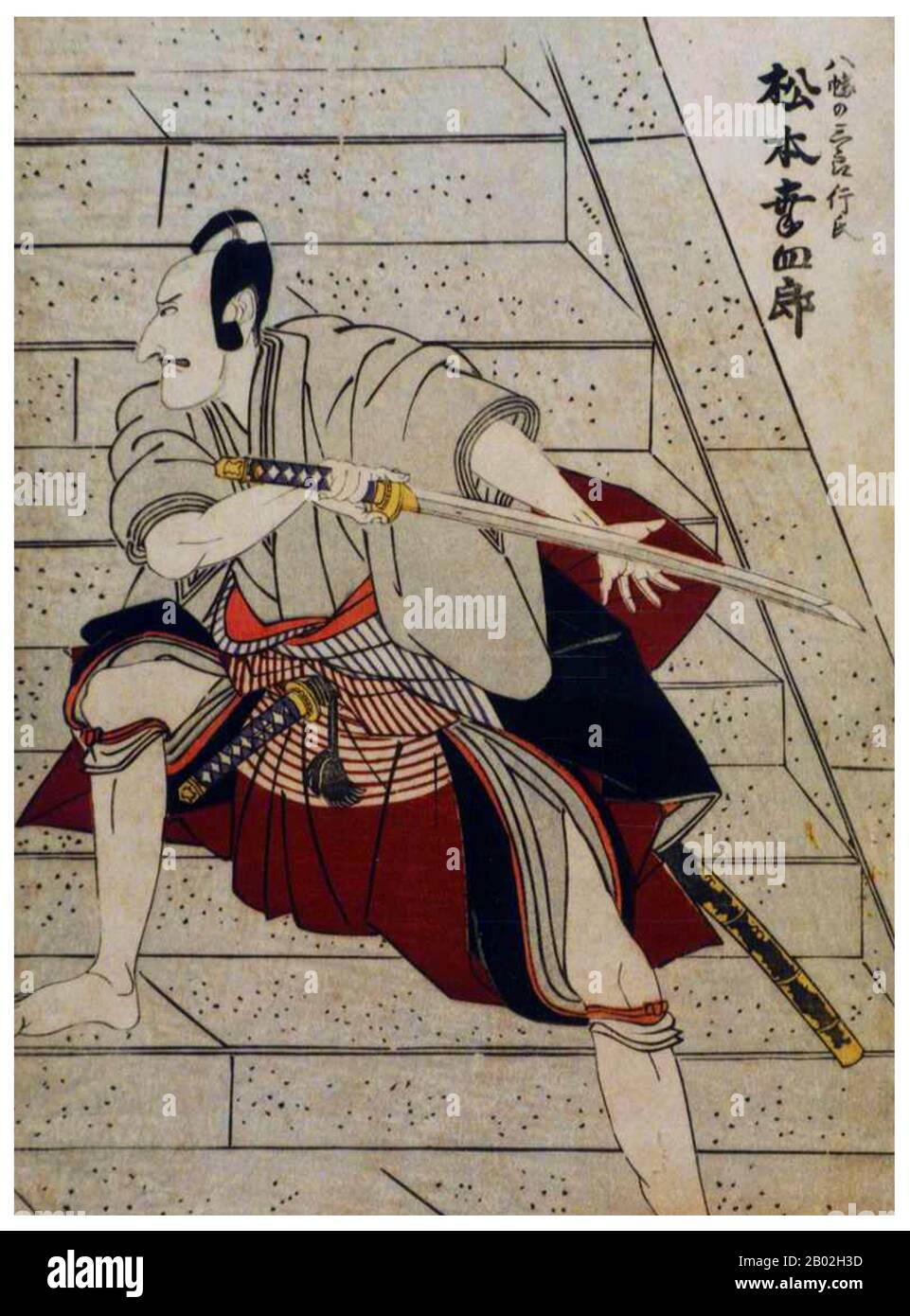 Samurai is the term for the military nobility of pre-industrial Japan. By the end of the 12th century, samurai became almost entirely synonymous with bushi, and the word was closely associated with the middle and upper echelons of the warrior class. The samurai followed a set of rules that came to be known as Bushidō. While they numbered less than ten percent of Japan's population, samurai teachings can still be found today in both everyday life and in martial arts such as Kendō, meaning the way of the sword. Stock Photohttps://www.alamy.com/image-license-details/?v=1https://www.alamy.com/samurai-is-the-term-for-the-military-nobility-of-pre-industrial-japan-by-the-end-of-the-12th-century-samurai-became-almost-entirely-synonymous-with-bushi-and-the-word-was-closely-associated-with-the-middle-and-upper-echelons-of-the-warrior-class-the-samurai-followed-a-set-of-rules-that-came-to-be-known-as-bushid-while-they-numbered-less-than-ten-percent-of-japans-population-samurai-teachings-can-still-be-found-today-in-both-everyday-life-and-in-martial-arts-such-as-kend-meaning-the-way-of-the-sword-image344264689.html
Samurai is the term for the military nobility of pre-industrial Japan. By the end of the 12th century, samurai became almost entirely synonymous with bushi, and the word was closely associated with the middle and upper echelons of the warrior class. The samurai followed a set of rules that came to be known as Bushidō. While they numbered less than ten percent of Japan's population, samurai teachings can still be found today in both everyday life and in martial arts such as Kendō, meaning the way of the sword. Stock Photohttps://www.alamy.com/image-license-details/?v=1https://www.alamy.com/samurai-is-the-term-for-the-military-nobility-of-pre-industrial-japan-by-the-end-of-the-12th-century-samurai-became-almost-entirely-synonymous-with-bushi-and-the-word-was-closely-associated-with-the-middle-and-upper-echelons-of-the-warrior-class-the-samurai-followed-a-set-of-rules-that-came-to-be-known-as-bushid-while-they-numbered-less-than-ten-percent-of-japans-population-samurai-teachings-can-still-be-found-today-in-both-everyday-life-and-in-martial-arts-such-as-kend-meaning-the-way-of-the-sword-image344264689.htmlRM2B02H3D–Samurai is the term for the military nobility of pre-industrial Japan. By the end of the 12th century, samurai became almost entirely synonymous with bushi, and the word was closely associated with the middle and upper echelons of the warrior class. The samurai followed a set of rules that came to be known as Bushidō. While they numbered less than ten percent of Japan's population, samurai teachings can still be found today in both everyday life and in martial arts such as Kendō, meaning the way of the sword.
 Samurai Illustration Stock Photohttps://www.alamy.com/image-license-details/?v=1https://www.alamy.com/samurai-illustration-image239404343.html
Samurai Illustration Stock Photohttps://www.alamy.com/image-license-details/?v=1https://www.alamy.com/samurai-illustration-image239404343.htmlRFRWDPK3–Samurai Illustration
 Courtesans painting a large sumi-e (ink-wash painting). A samurai customer watches, and a kamuro maid prepares the ink. Woodblock print by Moronobu Hishikawa (1618-1694) from Fuzoku Emakimono, Picture Scroll of the Water Trade, Tokyo, reprint circa 1880. Stock Photohttps://www.alamy.com/image-license-details/?v=1https://www.alamy.com/courtesans-painting-a-large-sumi-e-ink-wash-painting-a-samurai-customer-watches-and-a-kamuro-maid-prepares-the-ink-woodblock-print-by-moronobu-hishikawa-1618-1694-from-fuzoku-emakimono-picture-scroll-of-the-water-trade-tokyo-reprint-circa-1880-image212437589.html
Courtesans painting a large sumi-e (ink-wash painting). A samurai customer watches, and a kamuro maid prepares the ink. Woodblock print by Moronobu Hishikawa (1618-1694) from Fuzoku Emakimono, Picture Scroll of the Water Trade, Tokyo, reprint circa 1880. Stock Photohttps://www.alamy.com/image-license-details/?v=1https://www.alamy.com/courtesans-painting-a-large-sumi-e-ink-wash-painting-a-samurai-customer-watches-and-a-kamuro-maid-prepares-the-ink-woodblock-print-by-moronobu-hishikawa-1618-1694-from-fuzoku-emakimono-picture-scroll-of-the-water-trade-tokyo-reprint-circa-1880-image212437589.htmlRMP9HA8N–Courtesans painting a large sumi-e (ink-wash painting). A samurai customer watches, and a kamuro maid prepares the ink. Woodblock print by Moronobu Hishikawa (1618-1694) from Fuzoku Emakimono, Picture Scroll of the Water Trade, Tokyo, reprint circa 1880.
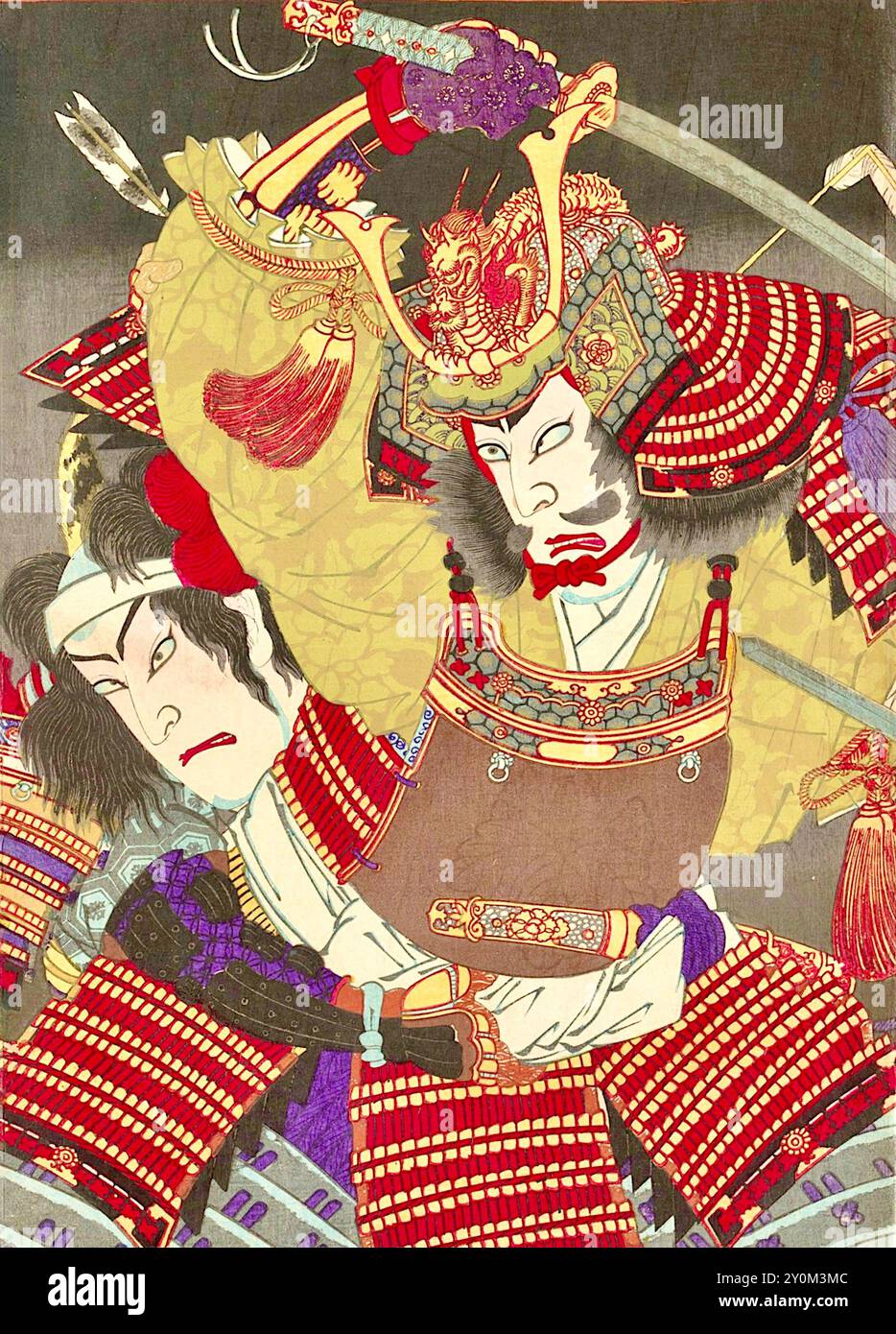 Toyohara Kunichika - Ichikawa Sadanji I as Imagawa Yoshimoto and Onoe Kikugorō V as Mōri Shinsuke (Mōri Yoshikatsu) in The Battles of Okehazama - 1884 Stock Photohttps://www.alamy.com/image-license-details/?v=1https://www.alamy.com/toyohara-kunichika-ichikawa-sadanji-i-as-imagawa-yoshimoto-and-onoe-kikugor-v-as-mri-shinsuke-mri-yoshikatsu-in-the-battles-of-okehazama-1884-image620015212.html
Toyohara Kunichika - Ichikawa Sadanji I as Imagawa Yoshimoto and Onoe Kikugorō V as Mōri Shinsuke (Mōri Yoshikatsu) in The Battles of Okehazama - 1884 Stock Photohttps://www.alamy.com/image-license-details/?v=1https://www.alamy.com/toyohara-kunichika-ichikawa-sadanji-i-as-imagawa-yoshimoto-and-onoe-kikugor-v-as-mri-shinsuke-mri-yoshikatsu-in-the-battles-of-okehazama-1884-image620015212.htmlRF2Y0M3MC–Toyohara Kunichika - Ichikawa Sadanji I as Imagawa Yoshimoto and Onoe Kikugorō V as Mōri Shinsuke (Mōri Yoshikatsu) in The Battles of Okehazama - 1884
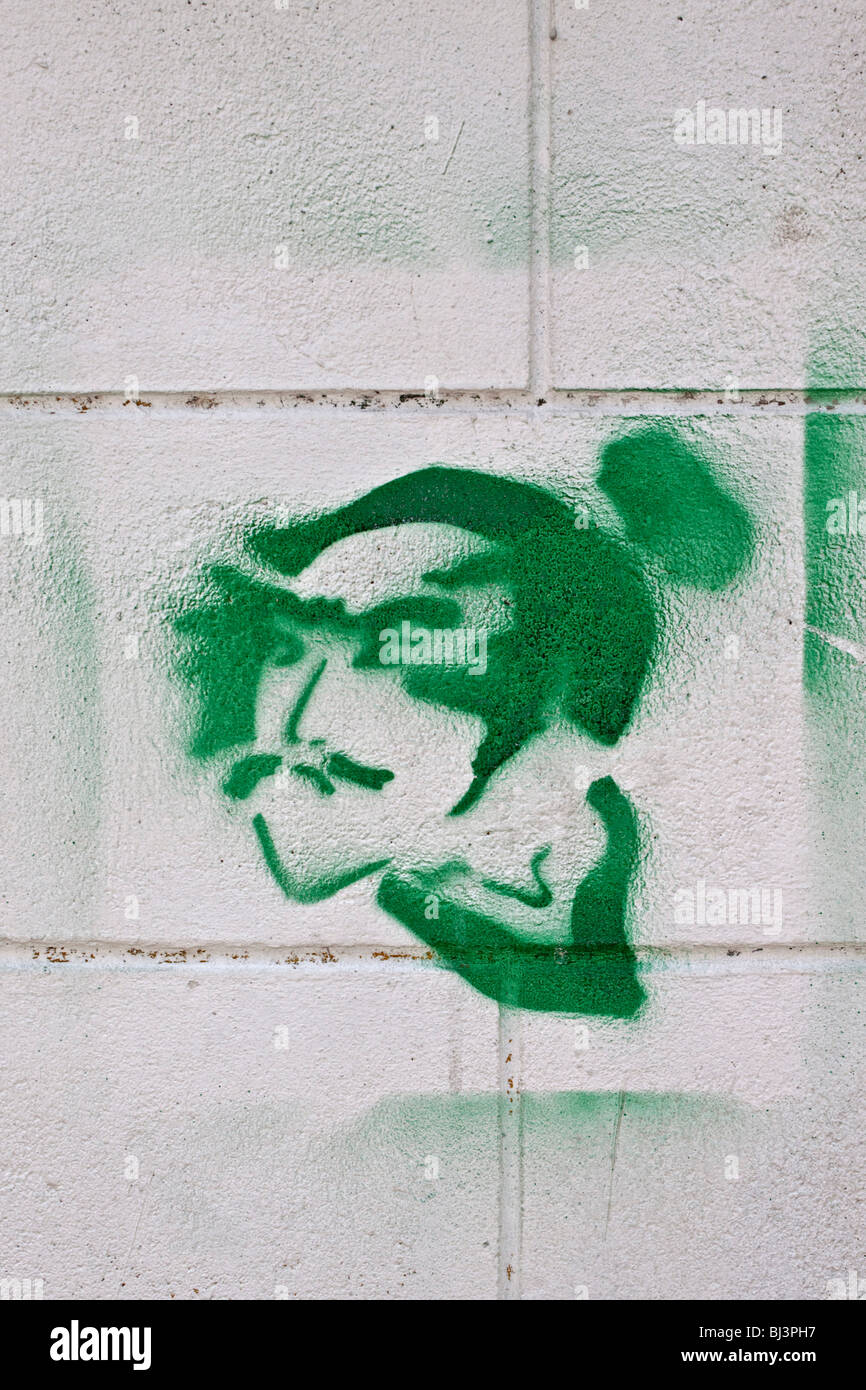 Samurai warriors, graffiti on a wall Stock Photohttps://www.alamy.com/image-license-details/?v=1https://www.alamy.com/stock-photo-samurai-warriors-graffiti-on-a-wall-28357763.html
Samurai warriors, graffiti on a wall Stock Photohttps://www.alamy.com/image-license-details/?v=1https://www.alamy.com/stock-photo-samurai-warriors-graffiti-on-a-wall-28357763.htmlRFBJ3PH7–Samurai warriors, graffiti on a wall
 Great War of Ko Etsu Kawanakajima, samurai of the army of Usami Sunpu No Kami, popular card by th… Stock Photohttps://www.alamy.com/image-license-details/?v=1https://www.alamy.com/great-war-of-ko-etsu-kawanakajima-samurai-of-the-army-of-usami-sunpu-no-kami-popular-card-by-th-image212422258.html
Great War of Ko Etsu Kawanakajima, samurai of the army of Usami Sunpu No Kami, popular card by th… Stock Photohttps://www.alamy.com/image-license-details/?v=1https://www.alamy.com/great-war-of-ko-etsu-kawanakajima-samurai-of-the-army-of-usami-sunpu-no-kami-popular-card-by-th-image212422258.htmlRMP9GJN6–Great War of Ko Etsu Kawanakajima, samurai of the army of Usami Sunpu No Kami, popular card by th…
 a white samurai with weapon painting background Stock Photohttps://www.alamy.com/image-license-details/?v=1https://www.alamy.com/stock-photo-a-white-samurai-with-weapon-painting-background-73720370.html
a white samurai with weapon painting background Stock Photohttps://www.alamy.com/image-license-details/?v=1https://www.alamy.com/stock-photo-a-white-samurai-with-weapon-painting-background-73720370.htmlRFE7X72A–a white samurai with weapon painting background
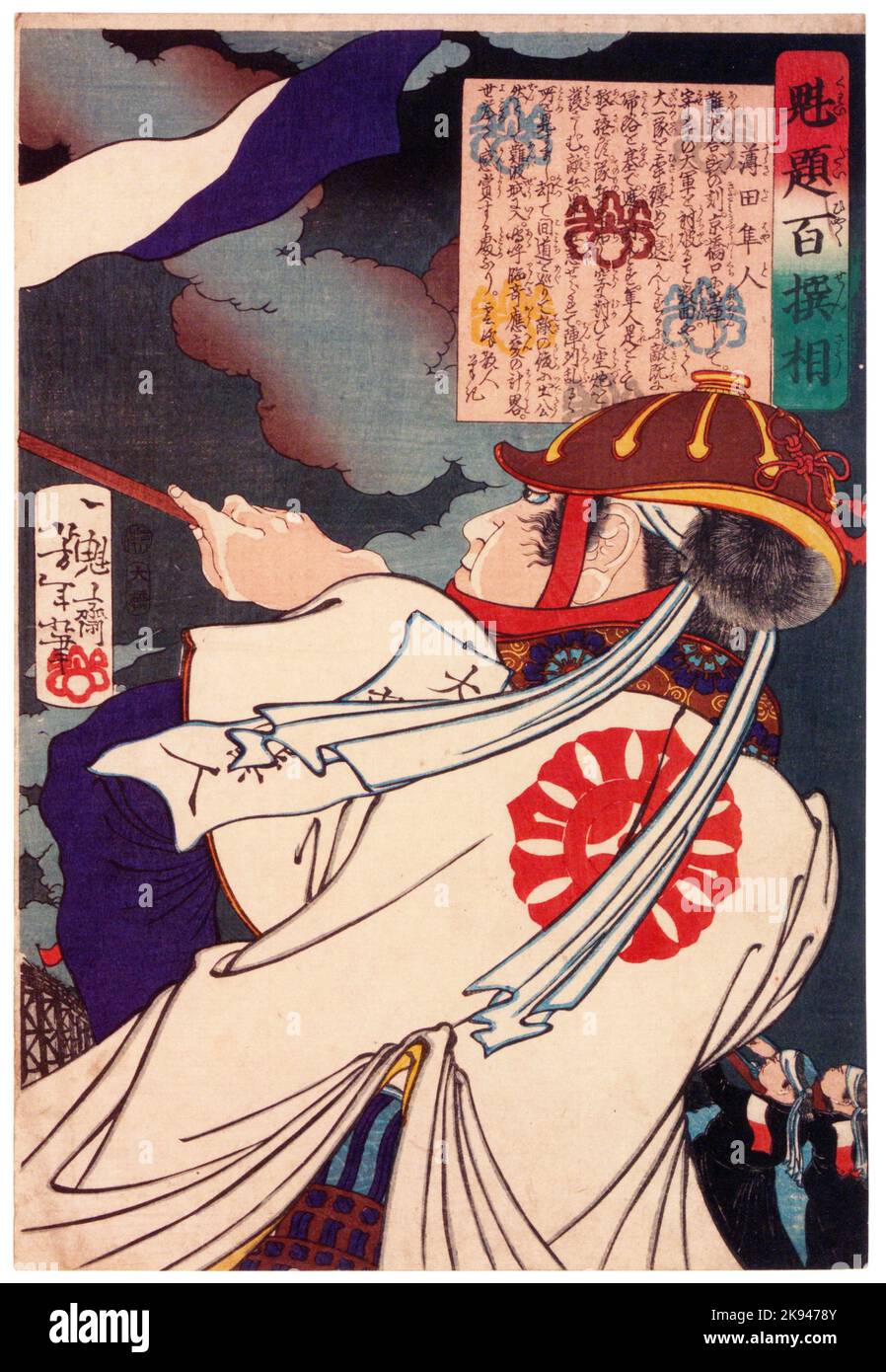 Tsukioka Yoshitoshi – Susukida Hayato from Yoshitoshi’s Selection of One Hundred Warrior Stock Photohttps://www.alamy.com/image-license-details/?v=1https://www.alamy.com/tsukioka-yoshitoshi-susukida-hayato-from-yoshitoshis-selection-of-one-hundred-warrior-image487515755.html
Tsukioka Yoshitoshi – Susukida Hayato from Yoshitoshi’s Selection of One Hundred Warrior Stock Photohttps://www.alamy.com/image-license-details/?v=1https://www.alamy.com/tsukioka-yoshitoshi-susukida-hayato-from-yoshitoshis-selection-of-one-hundred-warrior-image487515755.htmlRM2K9478Y–Tsukioka Yoshitoshi – Susukida Hayato from Yoshitoshi’s Selection of One Hundred Warrior
 The artist Masanobu Okumura in glasses signing his name to a folding-screen painting while a courtesan passes a letter to a samurai. Woodblock print by Masanobu Okumura (1686-1764) from Fuzoku Emakimono, Picture Scroll of the Water Trade, Tokyo, reprint circa 1880. Stock Photohttps://www.alamy.com/image-license-details/?v=1https://www.alamy.com/stock-image-the-artist-masanobu-okumura-in-glasses-signing-his-name-to-a-folding-165635539.html
The artist Masanobu Okumura in glasses signing his name to a folding-screen painting while a courtesan passes a letter to a samurai. Woodblock print by Masanobu Okumura (1686-1764) from Fuzoku Emakimono, Picture Scroll of the Water Trade, Tokyo, reprint circa 1880. Stock Photohttps://www.alamy.com/image-license-details/?v=1https://www.alamy.com/stock-image-the-artist-masanobu-okumura-in-glasses-signing-his-name-to-a-folding-165635539.htmlRMKHD9PY–The artist Masanobu Okumura in glasses signing his name to a folding-screen painting while a courtesan passes a letter to a samurai. Woodblock print by Masanobu Okumura (1686-1764) from Fuzoku Emakimono, Picture Scroll of the Water Trade, Tokyo, reprint circa 1880.
 Onoe Kikugorô III als samurai-Rijksmuseum RP-P-1958-470 Stock Photohttps://www.alamy.com/image-license-details/?v=1https://www.alamy.com/stock-photo-onoe-kikugor-iii-als-samurai-rijksmuseum-rp-p-1958-470-147610741.html
Onoe Kikugorô III als samurai-Rijksmuseum RP-P-1958-470 Stock Photohttps://www.alamy.com/image-license-details/?v=1https://www.alamy.com/stock-photo-onoe-kikugor-iii-als-samurai-rijksmuseum-rp-p-1958-470-147610741.htmlRMJG4705–Onoe Kikugorô III als samurai-Rijksmuseum RP-P-1958-470
 Traditional Ukiyo-e style painted artwork adorns a retail shop shutter in the old entertainment district of Asakusa, Tokyo. Stock Photohttps://www.alamy.com/image-license-details/?v=1https://www.alamy.com/stock-photo-traditional-ukiyo-e-style-painted-artwork-adorns-a-retail-shop-shutter-54153164.html
Traditional Ukiyo-e style painted artwork adorns a retail shop shutter in the old entertainment district of Asakusa, Tokyo. Stock Photohttps://www.alamy.com/image-license-details/?v=1https://www.alamy.com/stock-photo-traditional-ukiyo-e-style-painted-artwork-adorns-a-retail-shop-shutter-54153164.htmlRMD42TWG–Traditional Ukiyo-e style painted artwork adorns a retail shop shutter in the old entertainment district of Asakusa, Tokyo.
 Brooklyn Museum Samurai and Two Blindmen Album Leaf Painting Stock Photohttps://www.alamy.com/image-license-details/?v=1https://www.alamy.com/stock-photo-brooklyn-museum-samurai-and-two-blindmen-album-leaf-painting-132482292.html
Brooklyn Museum Samurai and Two Blindmen Album Leaf Painting Stock Photohttps://www.alamy.com/image-license-details/?v=1https://www.alamy.com/stock-photo-brooklyn-museum-samurai-and-two-blindmen-album-leaf-painting-132482292.htmlRMHKF2EC–Brooklyn Museum Samurai and Two Blindmen Album Leaf Painting
 Baby samurai Stock Photohttps://www.alamy.com/image-license-details/?v=1https://www.alamy.com/stock-photo-baby-samurai-50336821.html
Baby samurai Stock Photohttps://www.alamy.com/image-license-details/?v=1https://www.alamy.com/stock-photo-baby-samurai-50336821.htmlRFCWW13H–Baby samurai
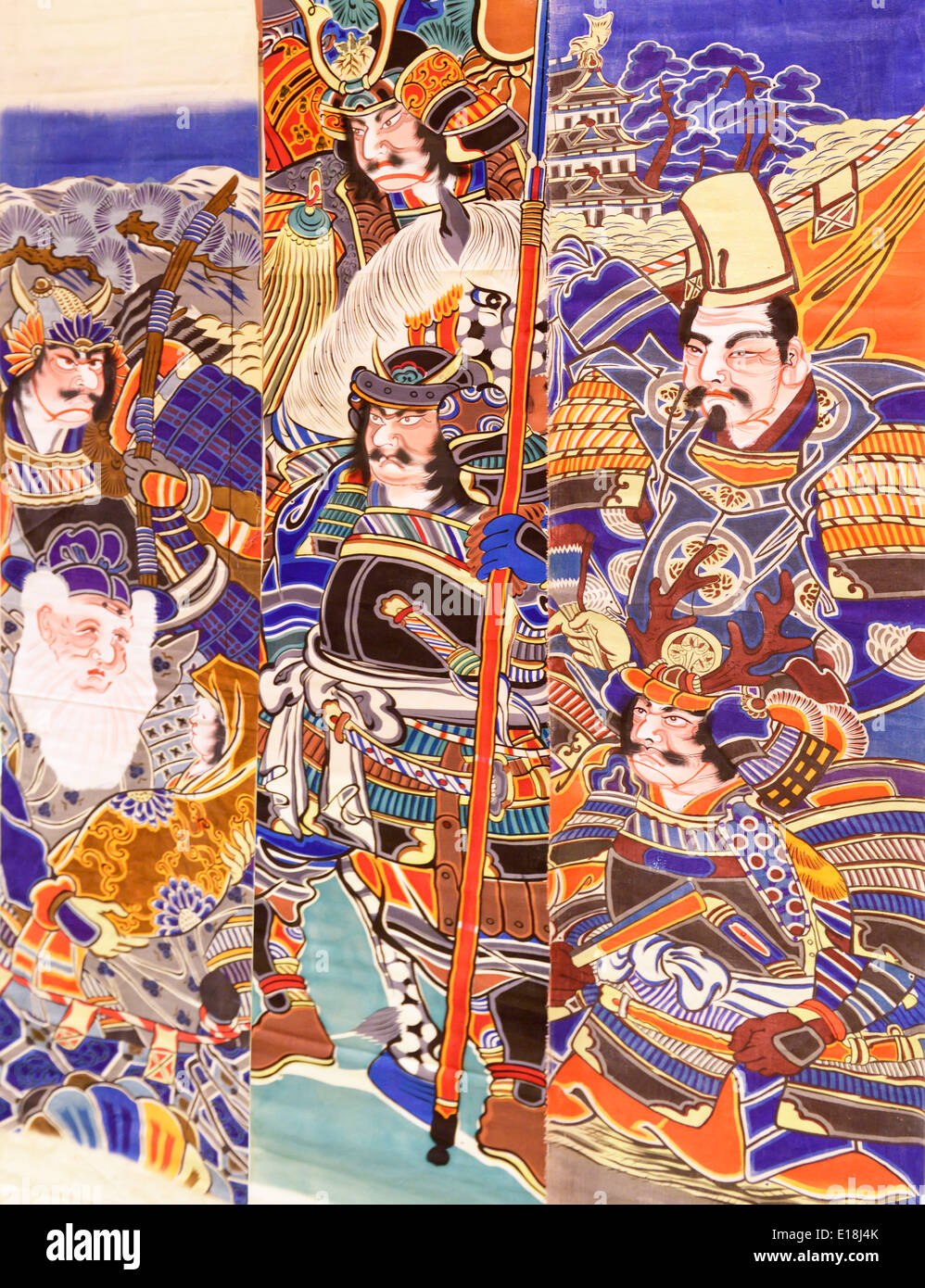 Japanese Samurai tapestry wall art Stock Photohttps://www.alamy.com/image-license-details/?v=1https://www.alamy.com/japanese-samurai-tapestry-wall-art-image69645987.html
Japanese Samurai tapestry wall art Stock Photohttps://www.alamy.com/image-license-details/?v=1https://www.alamy.com/japanese-samurai-tapestry-wall-art-image69645987.htmlRME18J4K–Japanese Samurai tapestry wall art
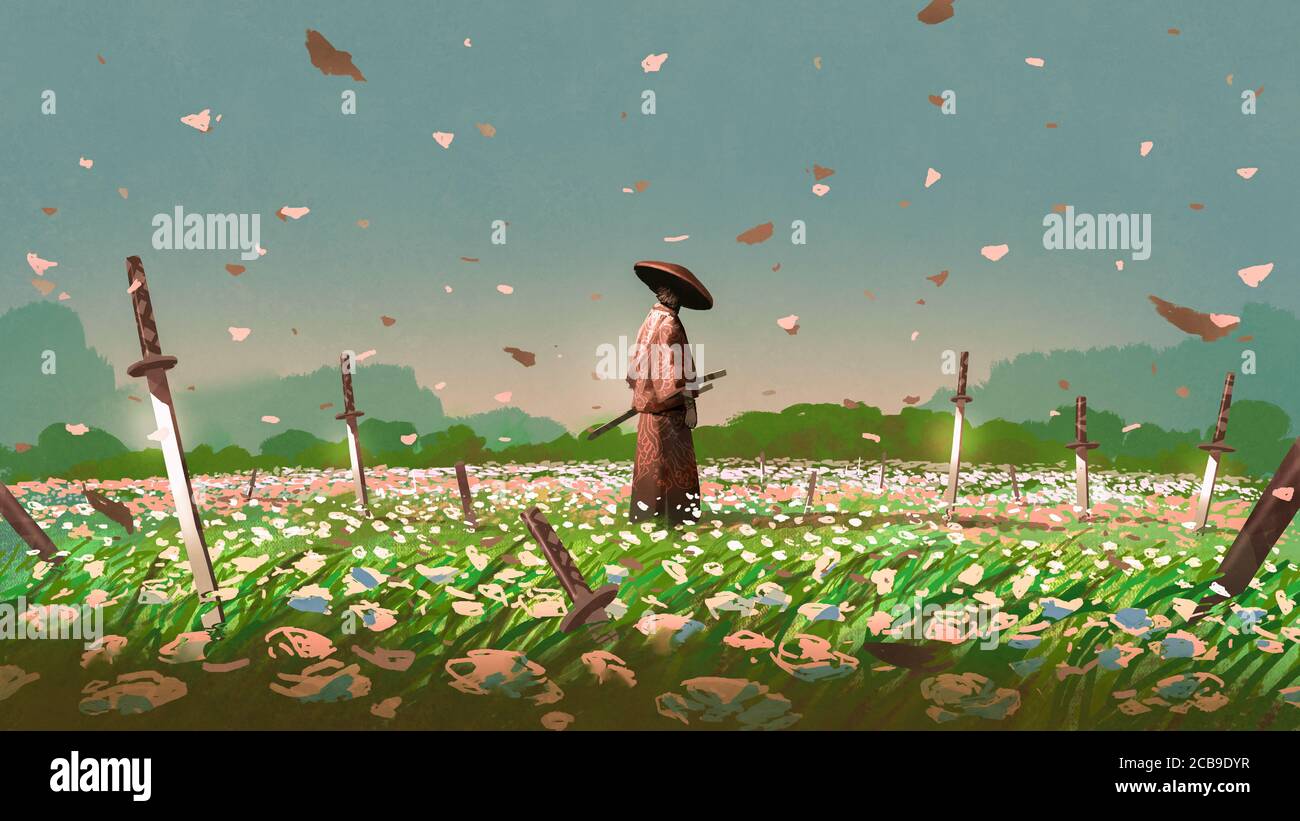 samurai standing among the swords impaled on the ground in the flower fields, digital art style, illustration painting Stock Photohttps://www.alamy.com/image-license-details/?v=1https://www.alamy.com/samurai-standing-among-the-swords-impaled-on-the-ground-in-the-flower-fields-digital-art-style-illustration-painting-image368387483.html
samurai standing among the swords impaled on the ground in the flower fields, digital art style, illustration painting Stock Photohttps://www.alamy.com/image-license-details/?v=1https://www.alamy.com/samurai-standing-among-the-swords-impaled-on-the-ground-in-the-flower-fields-digital-art-style-illustration-painting-image368387483.htmlRF2CB9DYR–samurai standing among the swords impaled on the ground in the flower fields, digital art style, illustration painting
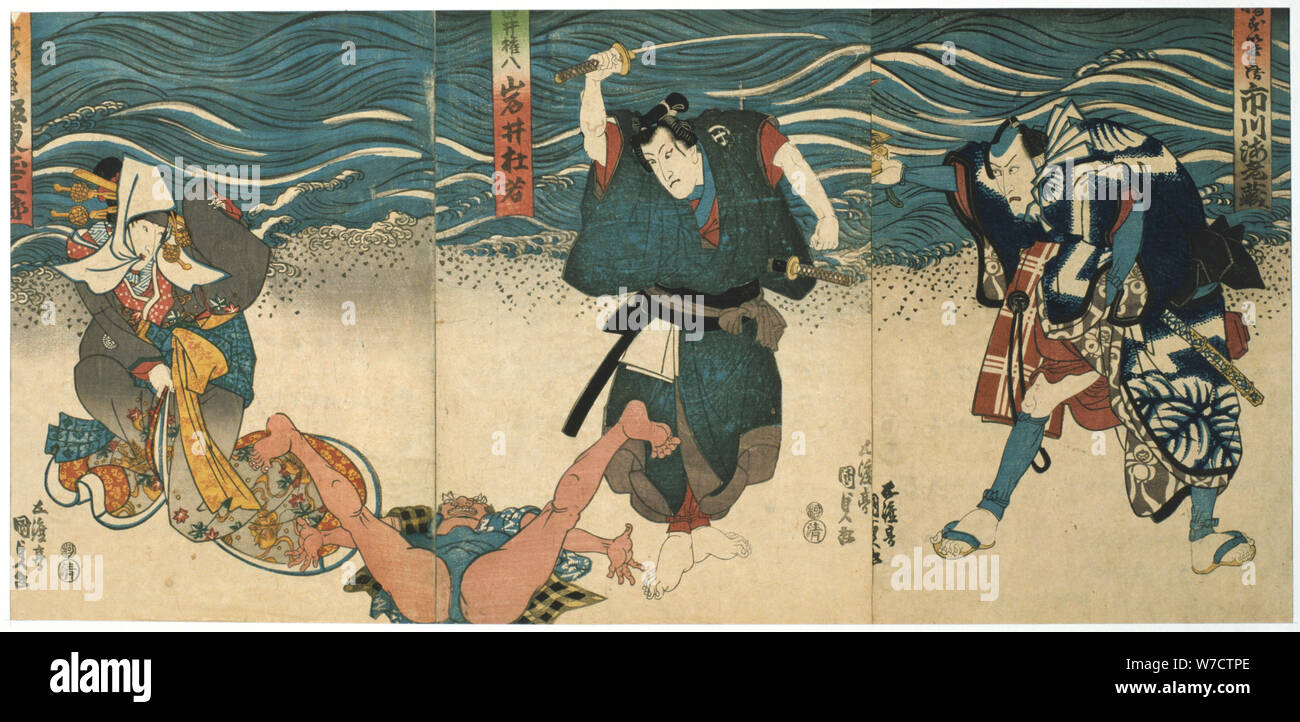 'Theatre Scene', 1844. Artist: Utagawa Kunisada Stock Photohttps://www.alamy.com/image-license-details/?v=1https://www.alamy.com/theatre-scene-1844-artist-utagawa-kunisada-image262740982.html
'Theatre Scene', 1844. Artist: Utagawa Kunisada Stock Photohttps://www.alamy.com/image-license-details/?v=1https://www.alamy.com/theatre-scene-1844-artist-utagawa-kunisada-image262740982.htmlRMW7CTPE–'Theatre Scene', 1844. Artist: Utagawa Kunisada
 Young Samurai with Hawk on His Wrist, c. 1767-1768, Suzuki Harunobu, Japanese, 1725 - 1770, 27 15/16 × 5 1/4 in. (70.9 × 13.4 cm) (image, sheet, hashira-e), Woodblock print (nishiki-e); ink and color on paper, Japan, 18th century, Training predatory birds for hunting was a significant pastime of the Japanese aristocracy and a favorite painting subject. Master falconers (takajō) received a special rank within the samurai hierarchy during the Edo period (1603-1868). In this visual parody, Suzuki Harunobu depicts a falconer as an urban dandy (wakashu) with elegant green jacket, purple-and-pink Stock Photohttps://www.alamy.com/image-license-details/?v=1https://www.alamy.com/young-samurai-with-hawk-on-his-wrist-c-1767-1768-suzuki-harunobu-japanese-1725-1770-27-1516-5-14-in-709-134-cm-image-sheet-hashira-e-woodblock-print-nishiki-e-ink-and-color-on-paper-japan-18th-century-training-predatory-birds-for-hunting-was-a-significant-pastime-of-the-japanese-aristocracy-and-a-favorite-painting-subject-master-falconers-takaj-received-a-special-rank-within-the-samurai-hierarchy-during-the-edo-period-1603-1868-in-this-visual-parody-suzuki-harunobu-depicts-a-falconer-as-an-urban-dandy-wakashu-with-elegant-green-jacket-purple-and-pink-image573494256.html
Young Samurai with Hawk on His Wrist, c. 1767-1768, Suzuki Harunobu, Japanese, 1725 - 1770, 27 15/16 × 5 1/4 in. (70.9 × 13.4 cm) (image, sheet, hashira-e), Woodblock print (nishiki-e); ink and color on paper, Japan, 18th century, Training predatory birds for hunting was a significant pastime of the Japanese aristocracy and a favorite painting subject. Master falconers (takajō) received a special rank within the samurai hierarchy during the Edo period (1603-1868). In this visual parody, Suzuki Harunobu depicts a falconer as an urban dandy (wakashu) with elegant green jacket, purple-and-pink Stock Photohttps://www.alamy.com/image-license-details/?v=1https://www.alamy.com/young-samurai-with-hawk-on-his-wrist-c-1767-1768-suzuki-harunobu-japanese-1725-1770-27-1516-5-14-in-709-134-cm-image-sheet-hashira-e-woodblock-print-nishiki-e-ink-and-color-on-paper-japan-18th-century-training-predatory-birds-for-hunting-was-a-significant-pastime-of-the-japanese-aristocracy-and-a-favorite-painting-subject-master-falconers-takaj-received-a-special-rank-within-the-samurai-hierarchy-during-the-edo-period-1603-1868-in-this-visual-parody-suzuki-harunobu-depicts-a-falconer-as-an-urban-dandy-wakashu-with-elegant-green-jacket-purple-and-pink-image573494256.htmlRM2T90WNM–Young Samurai with Hawk on His Wrist, c. 1767-1768, Suzuki Harunobu, Japanese, 1725 - 1770, 27 15/16 × 5 1/4 in. (70.9 × 13.4 cm) (image, sheet, hashira-e), Woodblock print (nishiki-e); ink and color on paper, Japan, 18th century, Training predatory birds for hunting was a significant pastime of the Japanese aristocracy and a favorite painting subject. Master falconers (takajō) received a special rank within the samurai hierarchy during the Edo period (1603-1868). In this visual parody, Suzuki Harunobu depicts a falconer as an urban dandy (wakashu) with elegant green jacket, purple-and-pink
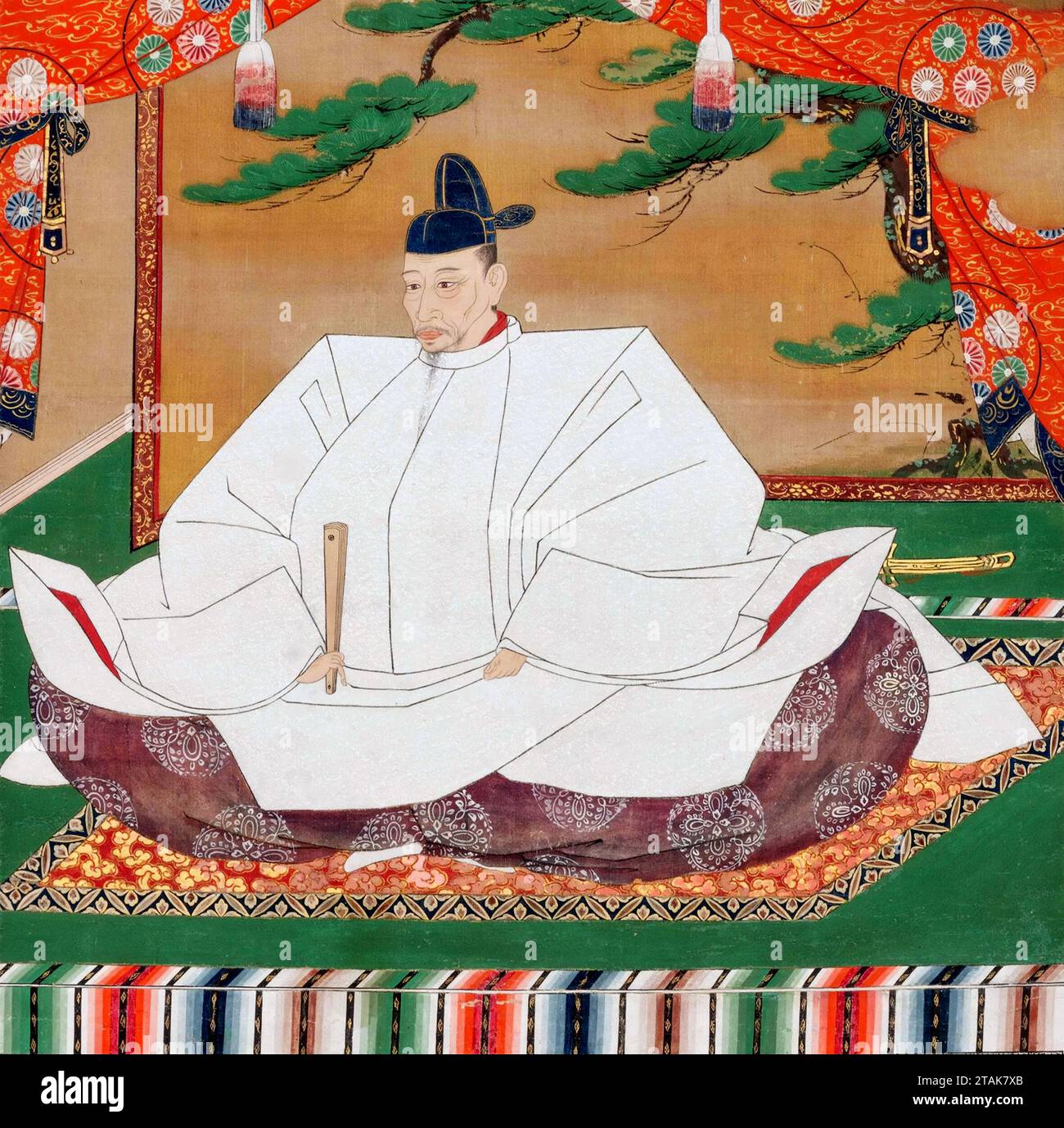 Toyotomi Hideyoshi. Portrait of the Japanese samurai and daimyō (feudal lord) of the late Sengoku period, Toyotomi Hideyoshi (1537-1598) by Kanō Mitsunobu, c. 1598 Stock Photohttps://www.alamy.com/image-license-details/?v=1https://www.alamy.com/toyotomi-hideyoshi-portrait-of-the-japanese-samurai-and-daimy-feudal-lord-of-the-late-sengoku-period-toyotomi-hideyoshi-1537-1598-by-kan-mitsunobu-c-1598-image574512019.html
Toyotomi Hideyoshi. Portrait of the Japanese samurai and daimyō (feudal lord) of the late Sengoku period, Toyotomi Hideyoshi (1537-1598) by Kanō Mitsunobu, c. 1598 Stock Photohttps://www.alamy.com/image-license-details/?v=1https://www.alamy.com/toyotomi-hideyoshi-portrait-of-the-japanese-samurai-and-daimy-feudal-lord-of-the-late-sengoku-period-toyotomi-hideyoshi-1537-1598-by-kan-mitsunobu-c-1598-image574512019.htmlRM2TAK7XB–Toyotomi Hideyoshi. Portrait of the Japanese samurai and daimyō (feudal lord) of the late Sengoku period, Toyotomi Hideyoshi (1537-1598) by Kanō Mitsunobu, c. 1598
 Portrait of Sato Issai at 70, color on silk, by Tsubaki Chinzan, Edo period, 1841 Stock Photohttps://www.alamy.com/image-license-details/?v=1https://www.alamy.com/portrait-of-sato-issai-at-70-color-on-silk-by-tsubaki-chinzan-edo-period-1841-image261226389.html
Portrait of Sato Issai at 70, color on silk, by Tsubaki Chinzan, Edo period, 1841 Stock Photohttps://www.alamy.com/image-license-details/?v=1https://www.alamy.com/portrait-of-sato-issai-at-70-color-on-silk-by-tsubaki-chinzan-edo-period-1841-image261226389.htmlRFW4YTWW–Portrait of Sato Issai at 70, color on silk, by Tsubaki Chinzan, Edo period, 1841
 Samurai is the term for the military nobility of pre-industrial Japan. By the end of the 12th century, samurai became almost entirely synonymous with bushi, and the word was closely associated with the middle and upper echelons of the warrior class. The samurai followed a set of rules that came to be known as Bushidō. While they numbered less than ten percent of Japan's population, samurai teachings can still be found today in both everyday life and in martial arts such as Kendō, meaning the way of the sword. Stock Photohttps://www.alamy.com/image-license-details/?v=1https://www.alamy.com/samurai-is-the-term-for-the-military-nobility-of-pre-industrial-japan-by-the-end-of-the-12th-century-samurai-became-almost-entirely-synonymous-with-bushi-and-the-word-was-closely-associated-with-the-middle-and-upper-echelons-of-the-warrior-class-the-samurai-followed-a-set-of-rules-that-came-to-be-known-as-bushid-while-they-numbered-less-than-ten-percent-of-japans-population-samurai-teachings-can-still-be-found-today-in-both-everyday-life-and-in-martial-arts-such-as-kend-meaning-the-way-of-the-sword-image344264564.html
Samurai is the term for the military nobility of pre-industrial Japan. By the end of the 12th century, samurai became almost entirely synonymous with bushi, and the word was closely associated with the middle and upper echelons of the warrior class. The samurai followed a set of rules that came to be known as Bushidō. While they numbered less than ten percent of Japan's population, samurai teachings can still be found today in both everyday life and in martial arts such as Kendō, meaning the way of the sword. Stock Photohttps://www.alamy.com/image-license-details/?v=1https://www.alamy.com/samurai-is-the-term-for-the-military-nobility-of-pre-industrial-japan-by-the-end-of-the-12th-century-samurai-became-almost-entirely-synonymous-with-bushi-and-the-word-was-closely-associated-with-the-middle-and-upper-echelons-of-the-warrior-class-the-samurai-followed-a-set-of-rules-that-came-to-be-known-as-bushid-while-they-numbered-less-than-ten-percent-of-japans-population-samurai-teachings-can-still-be-found-today-in-both-everyday-life-and-in-martial-arts-such-as-kend-meaning-the-way-of-the-sword-image344264564.htmlRM2B02GY0–Samurai is the term for the military nobility of pre-industrial Japan. By the end of the 12th century, samurai became almost entirely synonymous with bushi, and the word was closely associated with the middle and upper echelons of the warrior class. The samurai followed a set of rules that came to be known as Bushidō. While they numbered less than ten percent of Japan's population, samurai teachings can still be found today in both everyday life and in martial arts such as Kendō, meaning the way of the sword.
 Samurai Illustration Stock Photohttps://www.alamy.com/image-license-details/?v=1https://www.alamy.com/samurai-illustration-image239405077.html
Samurai Illustration Stock Photohttps://www.alamy.com/image-license-details/?v=1https://www.alamy.com/samurai-illustration-image239405077.htmlRFRWDRH9–Samurai Illustration
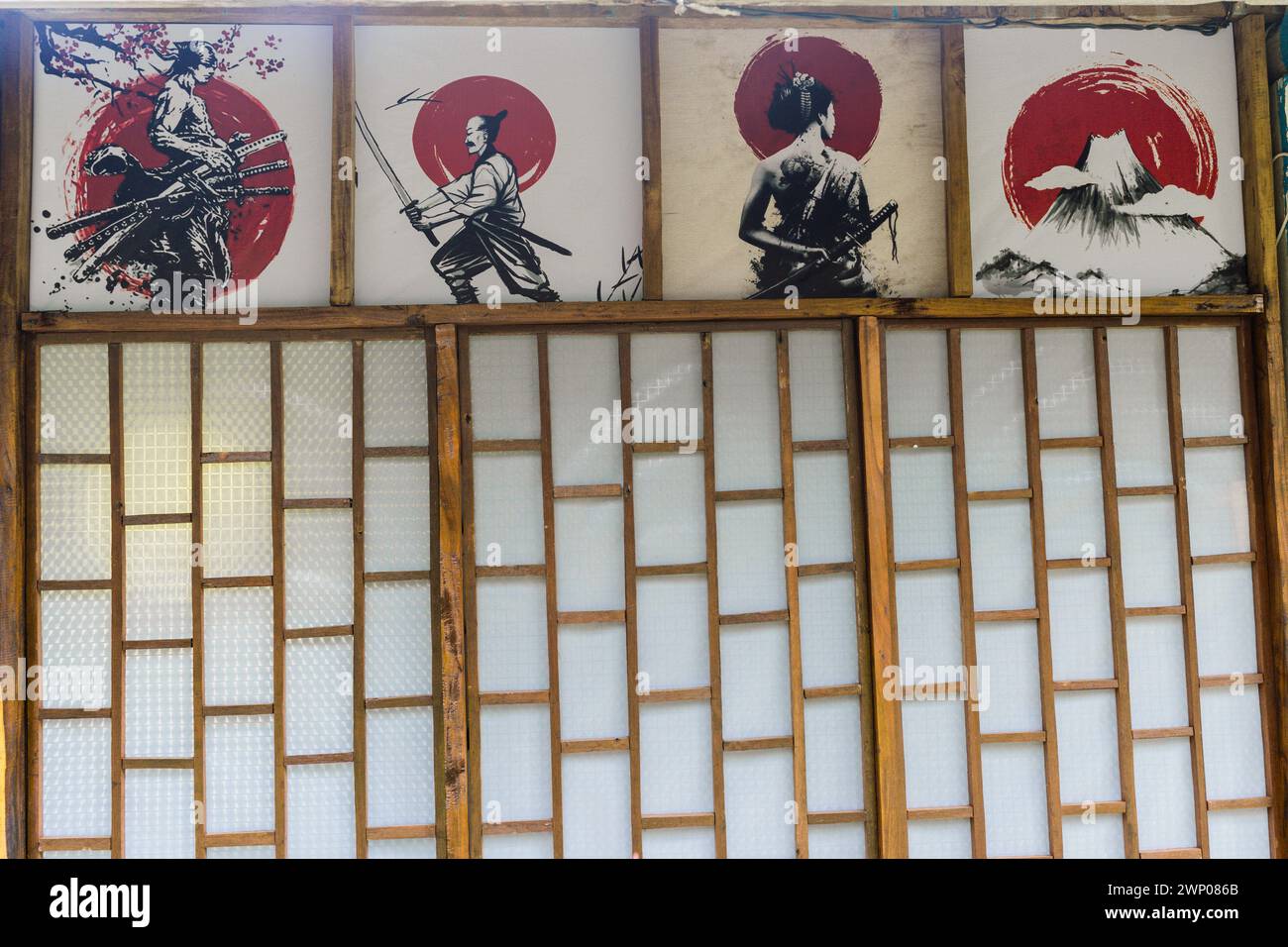 Palembang 22 Feb 2024 - Shoji, texture of traditional Japanese sliding paper door Shoji with hand draw samurai art painting decoration. Stock Photohttps://www.alamy.com/image-license-details/?v=1https://www.alamy.com/palembang-22-feb-2024-shoji-texture-of-traditional-japanese-sliding-paper-door-shoji-with-hand-draw-samurai-art-painting-decoration-image598681395.html
Palembang 22 Feb 2024 - Shoji, texture of traditional Japanese sliding paper door Shoji with hand draw samurai art painting decoration. Stock Photohttps://www.alamy.com/image-license-details/?v=1https://www.alamy.com/palembang-22-feb-2024-shoji-texture-of-traditional-japanese-sliding-paper-door-shoji-with-hand-draw-samurai-art-painting-decoration-image598681395.htmlRF2WP086B–Palembang 22 Feb 2024 - Shoji, texture of traditional Japanese sliding paper door Shoji with hand draw samurai art painting decoration.
 Myochin Muneakira - Samurai Mask Stock Photohttps://www.alamy.com/image-license-details/?v=1https://www.alamy.com/myochin-muneakira-samurai-mask-image633139583.html
Myochin Muneakira - Samurai Mask Stock Photohttps://www.alamy.com/image-license-details/?v=1https://www.alamy.com/myochin-muneakira-samurai-mask-image633139583.htmlRF2YP1YYY–Myochin Muneakira - Samurai Mask
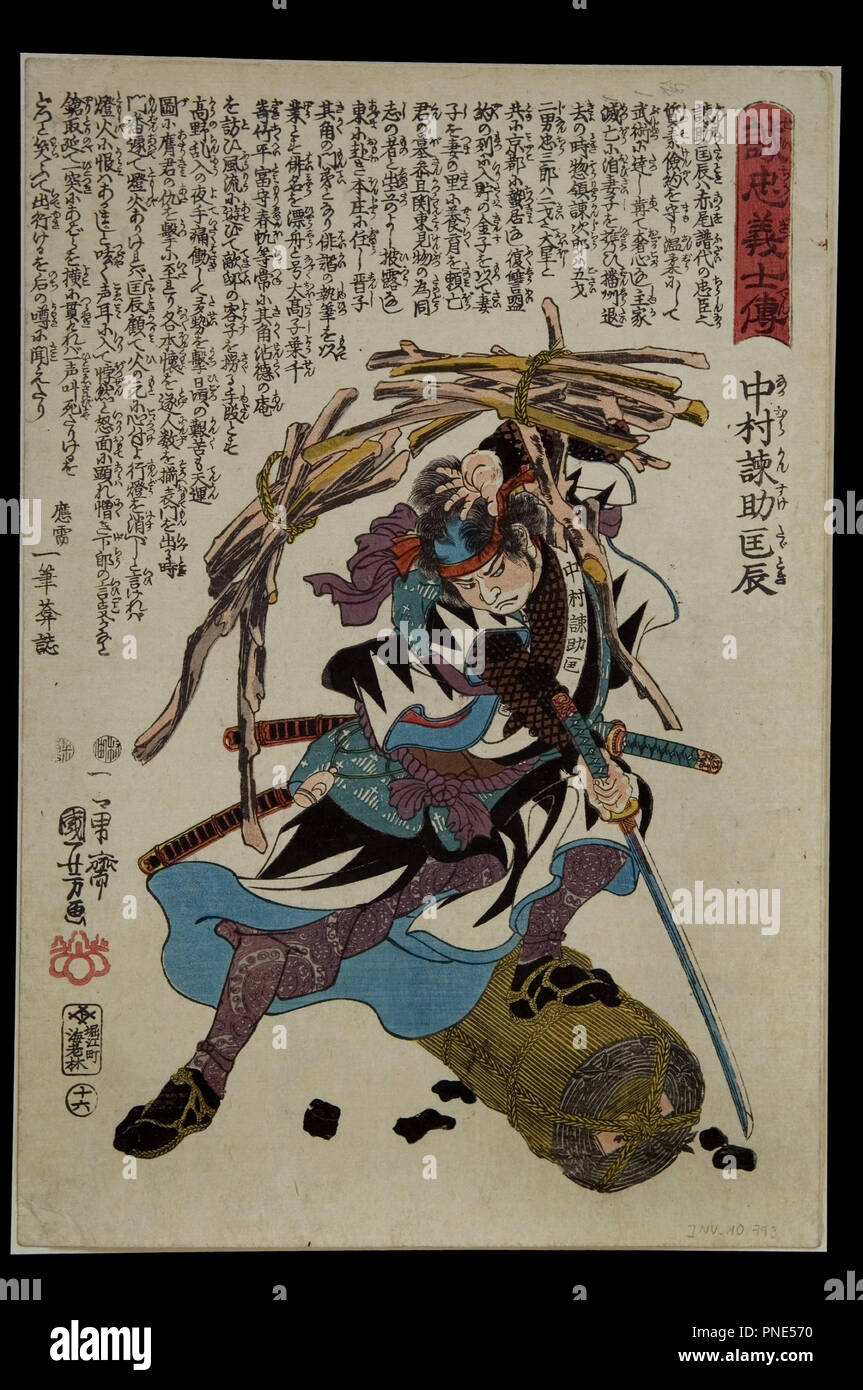 Japanese Print. Date/Period: 1847/1848. Width: 25.5 cm. Height: 36.6 cm (Complete). Author: UTAGAWA KUNIYOSHI. Stock Photohttps://www.alamy.com/image-license-details/?v=1https://www.alamy.com/japanese-print-dateperiod-18471848-width-255-cm-height-366-cm-complete-author-utagawa-kuniyoshi-image219743636.html
Japanese Print. Date/Period: 1847/1848. Width: 25.5 cm. Height: 36.6 cm (Complete). Author: UTAGAWA KUNIYOSHI. Stock Photohttps://www.alamy.com/image-license-details/?v=1https://www.alamy.com/japanese-print-dateperiod-18471848-width-255-cm-height-366-cm-complete-author-utagawa-kuniyoshi-image219743636.htmlRMPNE570–Japanese Print. Date/Period: 1847/1848. Width: 25.5 cm. Height: 36.6 cm (Complete). Author: UTAGAWA KUNIYOSHI.
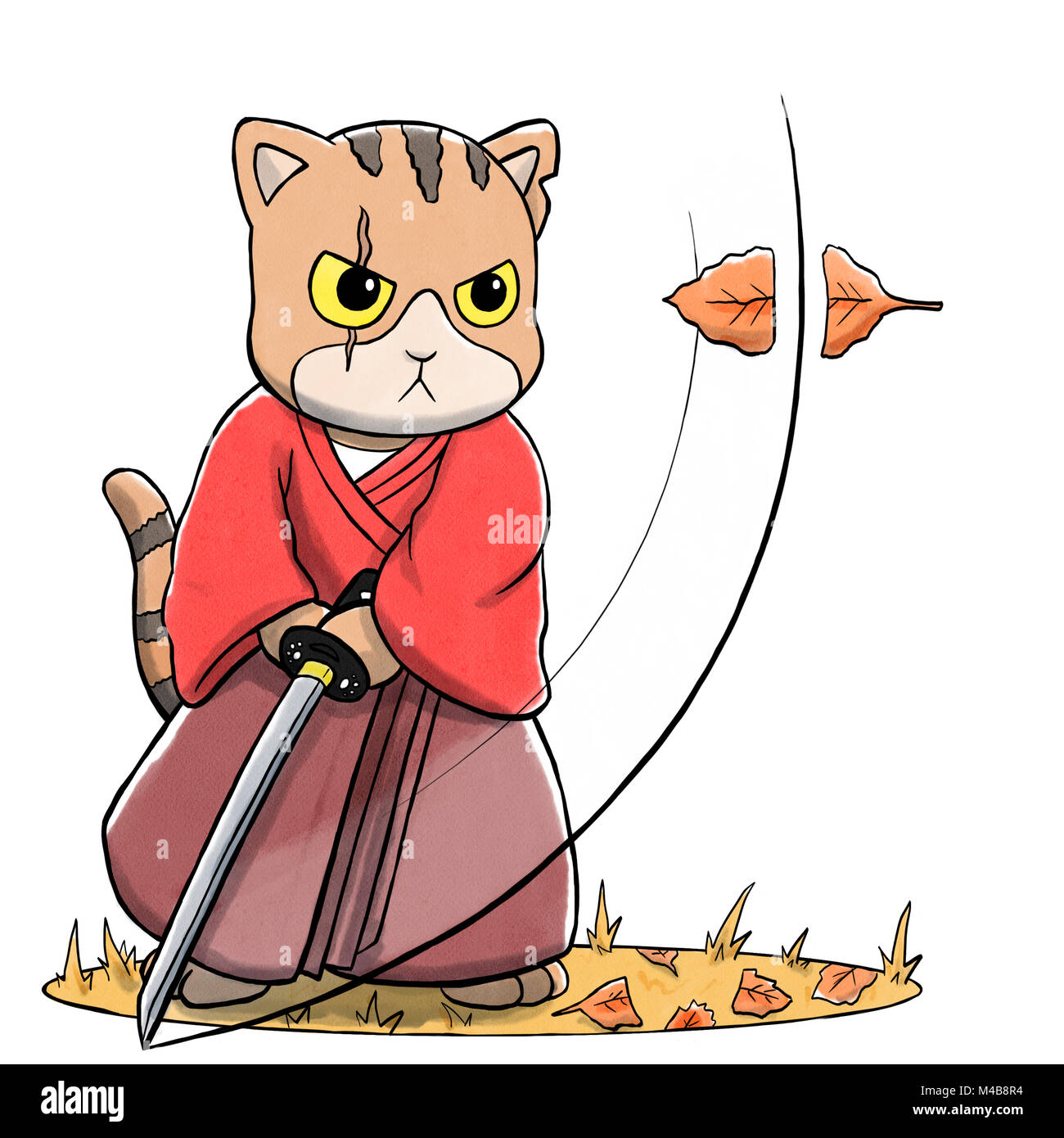 Samurai Cat Cutting Falling Leaf with Sword Stock Photohttps://www.alamy.com/image-license-details/?v=1https://www.alamy.com/stock-photo-samurai-cat-cutting-falling-leaf-with-sword-174810696.html
Samurai Cat Cutting Falling Leaf with Sword Stock Photohttps://www.alamy.com/image-license-details/?v=1https://www.alamy.com/stock-photo-samurai-cat-cutting-falling-leaf-with-sword-174810696.htmlRFM4B8R4–Samurai Cat Cutting Falling Leaf with Sword
 The Saddlery of a Samurai Warrior, created 1810 Stock Photohttps://www.alamy.com/image-license-details/?v=1https://www.alamy.com/stock-photo-the-saddlery-of-a-samurai-warrior-created-1810-15631433.html
The Saddlery of a Samurai Warrior, created 1810 Stock Photohttps://www.alamy.com/image-license-details/?v=1https://www.alamy.com/stock-photo-the-saddlery-of-a-samurai-warrior-created-1810-15631433.htmlRMAP04PJ–The Saddlery of a Samurai Warrior, created 1810
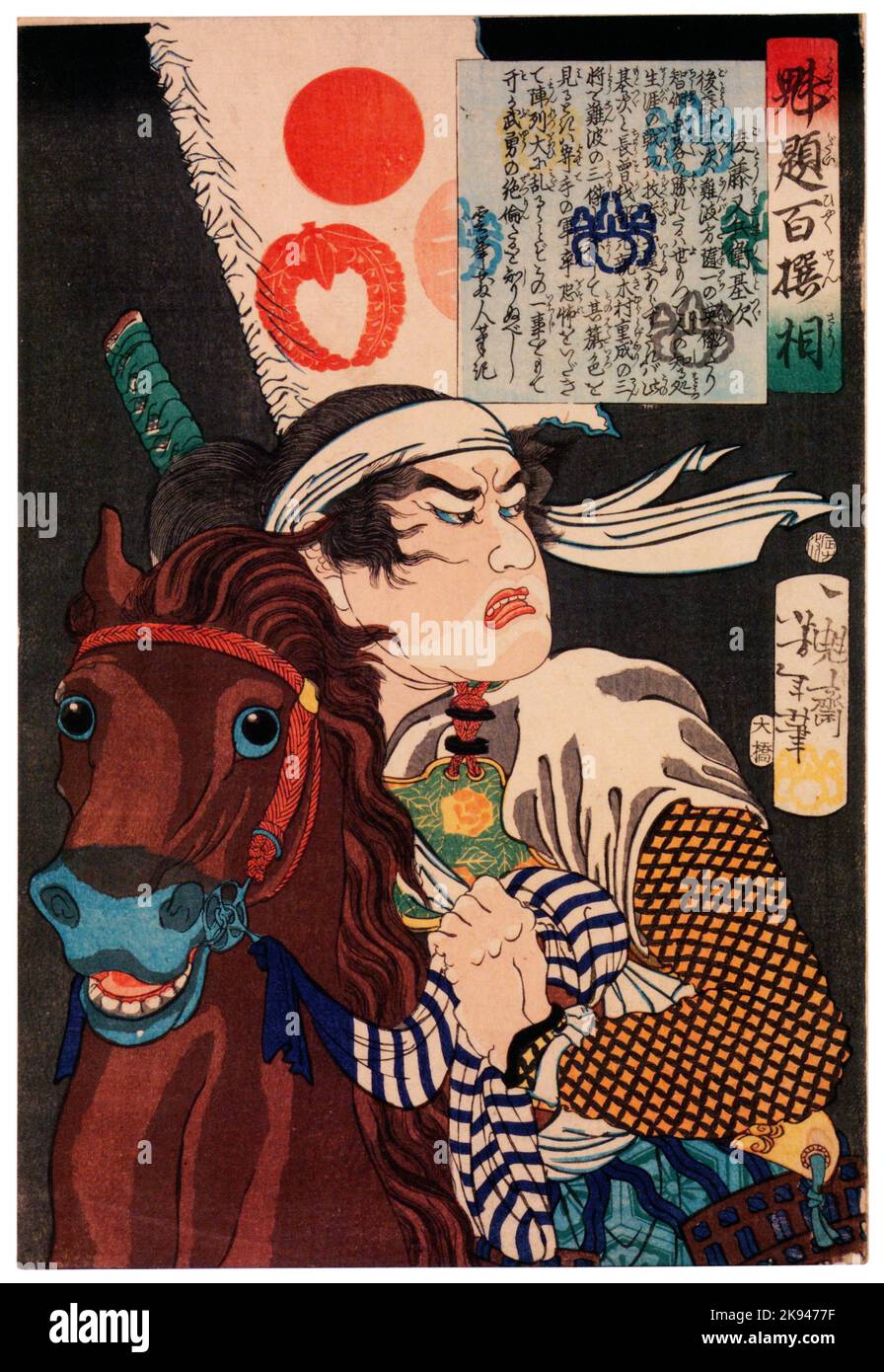 Tsukioka Yoshitoshi – Gotō Matabei Mototsugu from Yoshitoshi’s Selection of One Hundred Warrior Stock Photohttps://www.alamy.com/image-license-details/?v=1https://www.alamy.com/tsukioka-yoshitoshi-goto-matabei-mototsugu-from-yoshitoshis-selection-of-one-hundred-warrior-image487515715.html
Tsukioka Yoshitoshi – Gotō Matabei Mototsugu from Yoshitoshi’s Selection of One Hundred Warrior Stock Photohttps://www.alamy.com/image-license-details/?v=1https://www.alamy.com/tsukioka-yoshitoshi-goto-matabei-mototsugu-from-yoshitoshis-selection-of-one-hundred-warrior-image487515715.htmlRM2K9477F–Tsukioka Yoshitoshi – Gotō Matabei Mototsugu from Yoshitoshi’s Selection of One Hundred Warrior
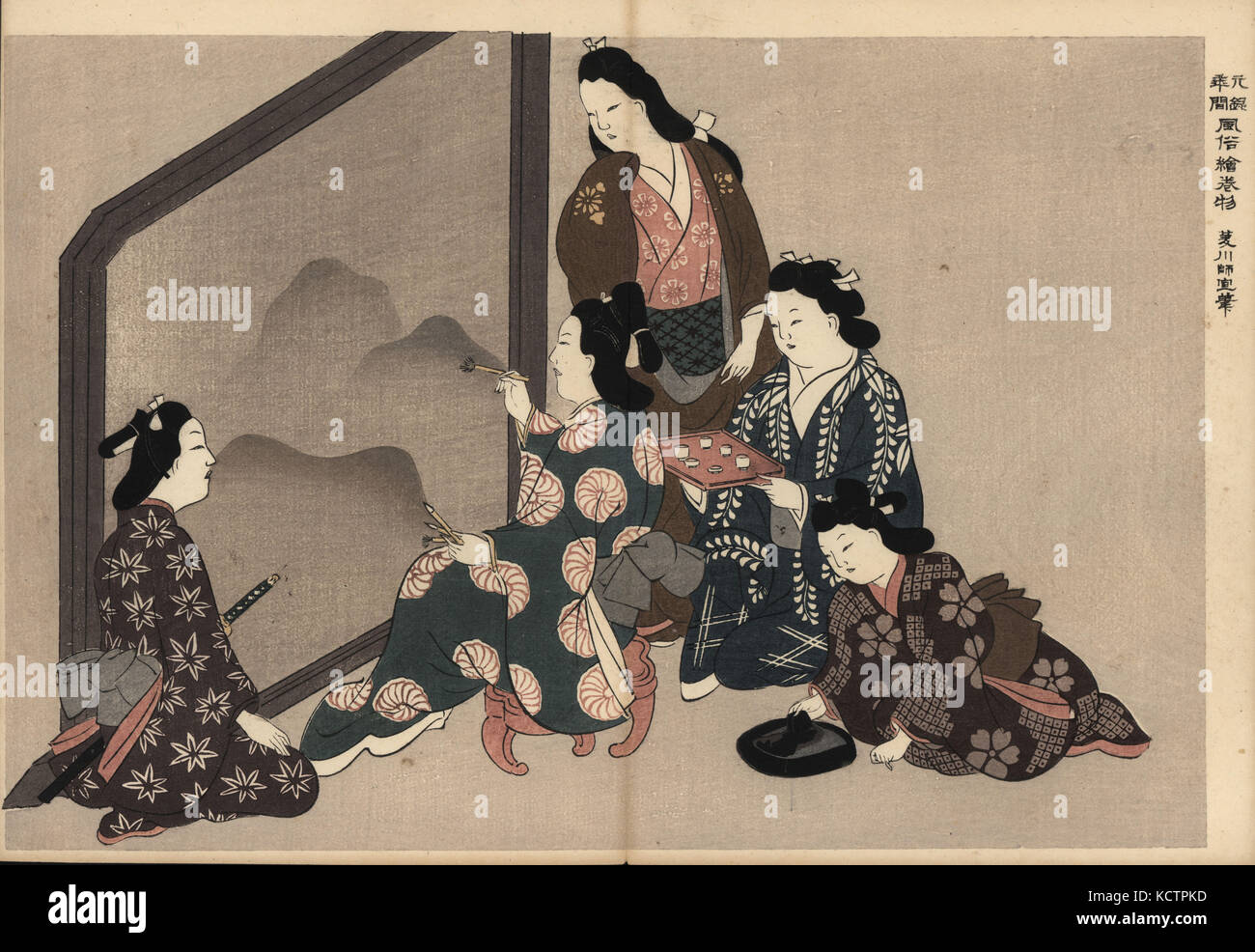 Courtesans painting a large sumi-e (ink-wash painting). A samurai customer watches, and a kamuro maid prepares the ink. Woodblock print by Moronobu Hishikawa (1618-1694) from Fuzoku Emakimono, Picture Scroll of the Water Trade, Tokyo, reprint circa 1880. Stock Photohttps://www.alamy.com/image-license-details/?v=1https://www.alamy.com/stock-image-courtesans-painting-a-large-sumi-e-ink-wash-painting-a-samurai-customer-162813825.html
Courtesans painting a large sumi-e (ink-wash painting). A samurai customer watches, and a kamuro maid prepares the ink. Woodblock print by Moronobu Hishikawa (1618-1694) from Fuzoku Emakimono, Picture Scroll of the Water Trade, Tokyo, reprint circa 1880. Stock Photohttps://www.alamy.com/image-license-details/?v=1https://www.alamy.com/stock-image-courtesans-painting-a-large-sumi-e-ink-wash-painting-a-samurai-customer-162813825.htmlRMKCTPKD–Courtesans painting a large sumi-e (ink-wash painting). A samurai customer watches, and a kamuro maid prepares the ink. Woodblock print by Moronobu Hishikawa (1618-1694) from Fuzoku Emakimono, Picture Scroll of the Water Trade, Tokyo, reprint circa 1880.
 Ichikawa Ebizô V als een samurai-Rijksmuseum RP-P-1958-492 Stock Photohttps://www.alamy.com/image-license-details/?v=1https://www.alamy.com/stock-photo-ichikawa-ebiz-v-als-een-samurai-rijksmuseum-rp-p-1958-492-147562387.html
Ichikawa Ebizô V als een samurai-Rijksmuseum RP-P-1958-492 Stock Photohttps://www.alamy.com/image-license-details/?v=1https://www.alamy.com/stock-photo-ichikawa-ebiz-v-als-een-samurai-rijksmuseum-rp-p-1958-492-147562387.htmlRMJG2197–Ichikawa Ebizô V als een samurai-Rijksmuseum RP-P-1958-492
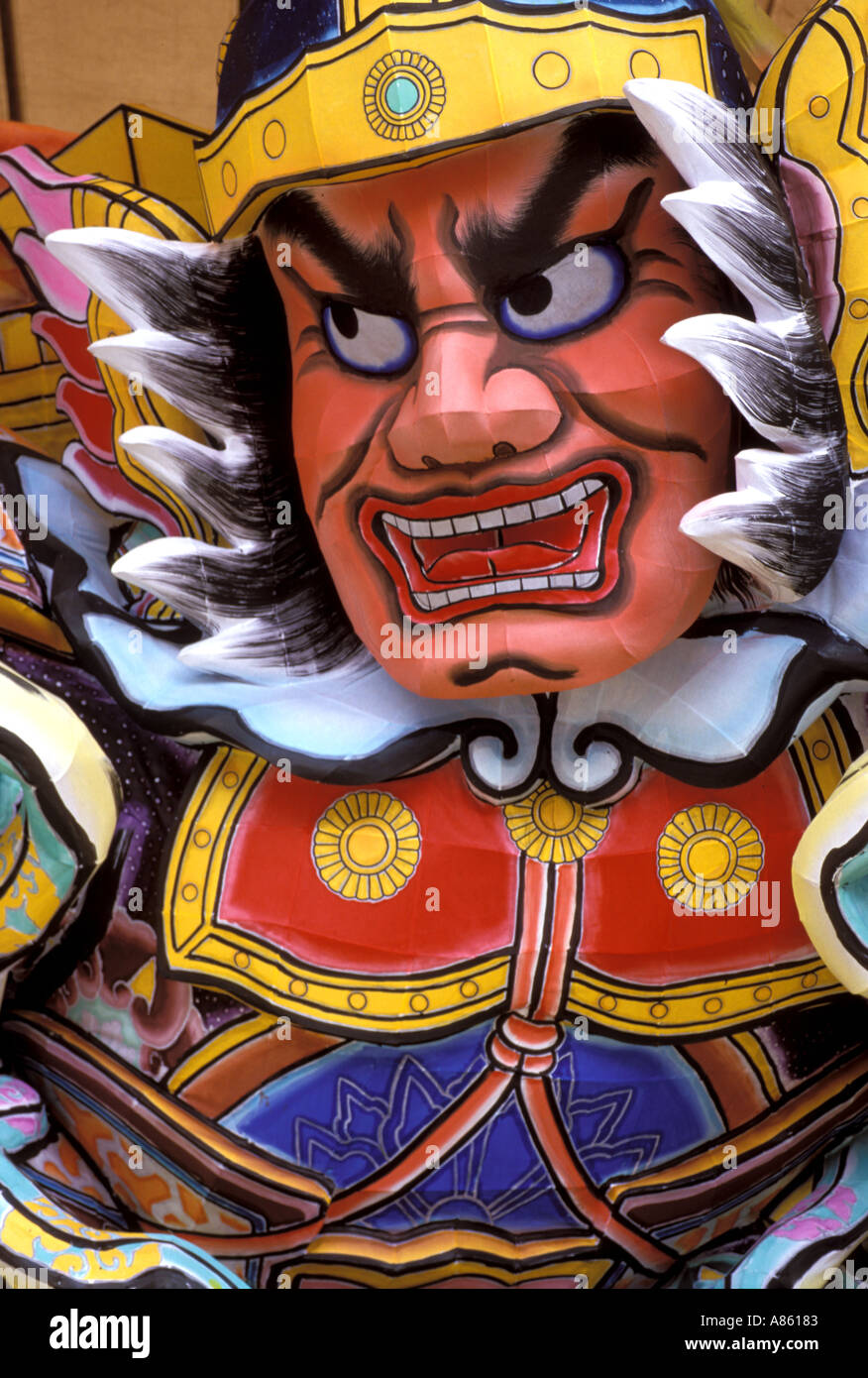 Close up of a Nebuta Matsuri summer festival float showing angry samurai warrior Stock Photohttps://www.alamy.com/image-license-details/?v=1https://www.alamy.com/close-up-of-a-nebuta-matsuri-summer-festival-float-showing-angry-samurai-image549251.html
Close up of a Nebuta Matsuri summer festival float showing angry samurai warrior Stock Photohttps://www.alamy.com/image-license-details/?v=1https://www.alamy.com/close-up-of-a-nebuta-matsuri-summer-festival-float-showing-angry-samurai-image549251.htmlRMA86183–Close up of a Nebuta Matsuri summer festival float showing angry samurai warrior
 Samurai and servant Stock Photohttps://www.alamy.com/image-license-details/?v=1https://www.alamy.com/stock-photo-samurai-and-servant-132444203.html
Samurai and servant Stock Photohttps://www.alamy.com/image-license-details/?v=1https://www.alamy.com/stock-photo-samurai-and-servant-132444203.htmlRMHKD9X3–Samurai and servant
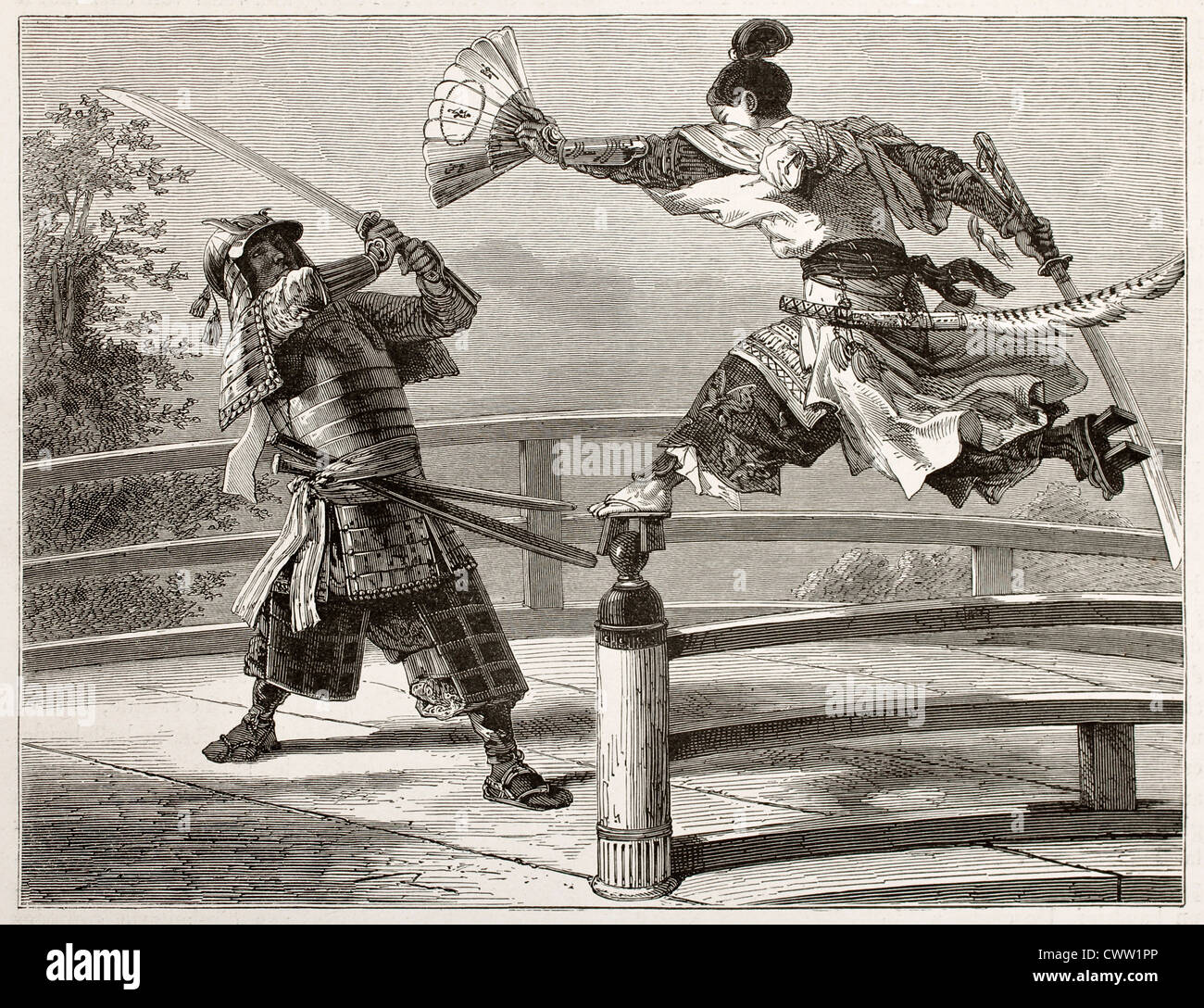 Youshitsune samurai fighting Stock Photohttps://www.alamy.com/image-license-details/?v=1https://www.alamy.com/stock-photo-youshitsune-samurai-fighting-50337358.html
Youshitsune samurai fighting Stock Photohttps://www.alamy.com/image-license-details/?v=1https://www.alamy.com/stock-photo-youshitsune-samurai-fighting-50337358.htmlRFCWW1PP–Youshitsune samurai fighting
 101 Brooklyn Museum - Samurai and Two Blindmen Album Leaf Painting Stock Photohttps://www.alamy.com/image-license-details/?v=1https://www.alamy.com/101-brooklyn-museum-samurai-and-two-blindmen-album-leaf-painting-image214241873.html
101 Brooklyn Museum - Samurai and Two Blindmen Album Leaf Painting Stock Photohttps://www.alamy.com/image-license-details/?v=1https://www.alamy.com/101-brooklyn-museum-samurai-and-two-blindmen-album-leaf-painting-image214241873.htmlRMPCFFKD–101 Brooklyn Museum - Samurai and Two Blindmen Album Leaf Painting
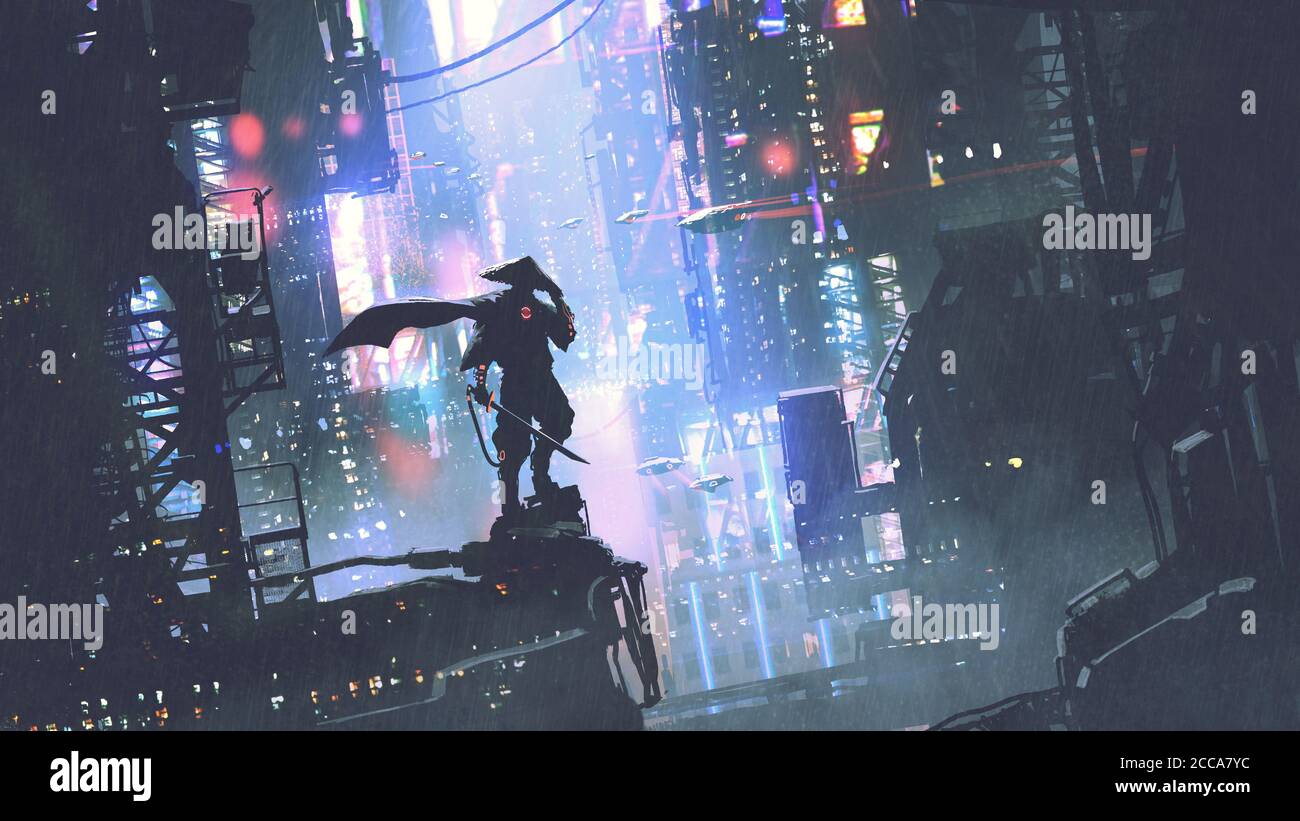 futuristic samurai standing on a building in cyberpunk city at rainy night, digital art style, illustration painting Stock Photohttps://www.alamy.com/image-license-details/?v=1https://www.alamy.com/futuristic-samurai-standing-on-a-building-in-cyberpunk-city-at-rainy-night-digital-art-style-illustration-painting-image369019376.html
futuristic samurai standing on a building in cyberpunk city at rainy night, digital art style, illustration painting Stock Photohttps://www.alamy.com/image-license-details/?v=1https://www.alamy.com/futuristic-samurai-standing-on-a-building-in-cyberpunk-city-at-rainy-night-digital-art-style-illustration-painting-image369019376.htmlRF2CCA7YC–futuristic samurai standing on a building in cyberpunk city at rainy night, digital art style, illustration painting
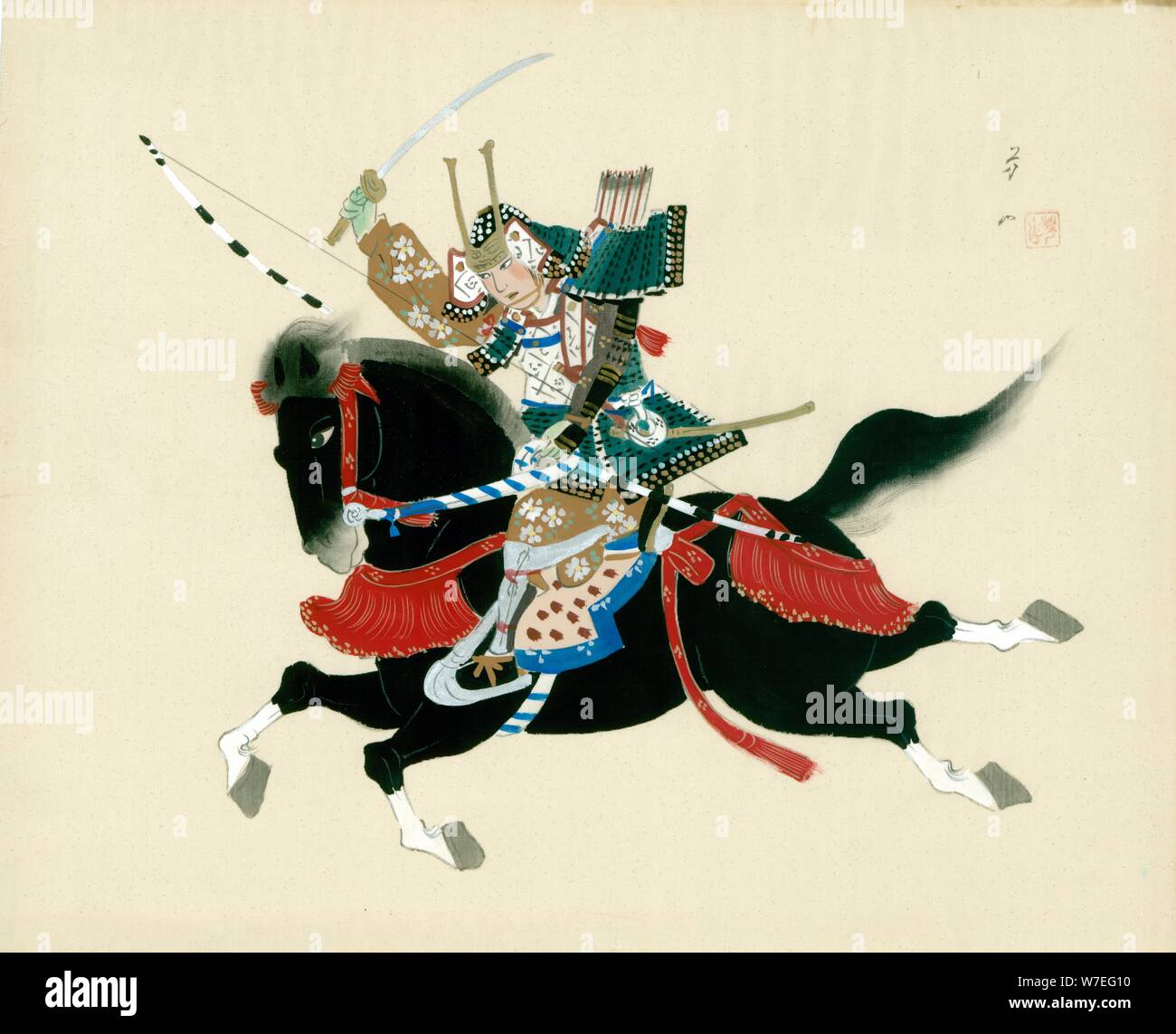 Samurai Warrior riding a horse. A Japanese painting on silk, in a traditional Japanese style. Artist: Unknown Stock Photohttps://www.alamy.com/image-license-details/?v=1https://www.alamy.com/samurai-warrior-riding-a-horse-a-japanese-painting-on-silk-in-a-traditional-japanese-style-artist-unknown-image262778012.html
Samurai Warrior riding a horse. A Japanese painting on silk, in a traditional Japanese style. Artist: Unknown Stock Photohttps://www.alamy.com/image-license-details/?v=1https://www.alamy.com/samurai-warrior-riding-a-horse-a-japanese-painting-on-silk-in-a-traditional-japanese-style-artist-unknown-image262778012.htmlRMW7EG10–Samurai Warrior riding a horse. A Japanese painting on silk, in a traditional Japanese style. Artist: Unknown
 Boys miyamairi kimono with the Battle of the Fuji River, Formal kimono for a boy for the first visit to a Shinto shrine (miyamairi kimono), with a decoration of a night scene with a samurai on horseback on the banks of the Fuji River, the mountain and ships in the background. Probably a scene from the Battle of the Fuji River in 1180. Black silk with a painted yuzen decoration with embroidered detailing and gold foil. White silk lining. Five family weapons (mon) of sorrel (katabami)., anonymous, Japan, 1920 - 1940, silk, painting, h 103 cm × w 85 cm Stock Photohttps://www.alamy.com/image-license-details/?v=1https://www.alamy.com/boys-miyamairi-kimono-with-the-battle-of-the-fuji-river-formal-kimono-for-a-boy-for-the-first-visit-to-a-shinto-shrine-miyamairi-kimono-with-a-decoration-of-a-night-scene-with-a-samurai-on-horseback-on-the-banks-of-the-fuji-river-the-mountain-and-ships-in-the-background-probably-a-scene-from-the-battle-of-the-fuji-river-in-1180-black-silk-with-a-painted-yuzen-decoration-with-embroidered-detailing-and-gold-foil-white-silk-lining-five-family-weapons-mon-of-sorrel-katabami-anonymous-japan-1920-1940-silk-painting-h-103-cm-w-85-cm-image261323231.html
Boys miyamairi kimono with the Battle of the Fuji River, Formal kimono for a boy for the first visit to a Shinto shrine (miyamairi kimono), with a decoration of a night scene with a samurai on horseback on the banks of the Fuji River, the mountain and ships in the background. Probably a scene from the Battle of the Fuji River in 1180. Black silk with a painted yuzen decoration with embroidered detailing and gold foil. White silk lining. Five family weapons (mon) of sorrel (katabami)., anonymous, Japan, 1920 - 1940, silk, painting, h 103 cm × w 85 cm Stock Photohttps://www.alamy.com/image-license-details/?v=1https://www.alamy.com/boys-miyamairi-kimono-with-the-battle-of-the-fuji-river-formal-kimono-for-a-boy-for-the-first-visit-to-a-shinto-shrine-miyamairi-kimono-with-a-decoration-of-a-night-scene-with-a-samurai-on-horseback-on-the-banks-of-the-fuji-river-the-mountain-and-ships-in-the-background-probably-a-scene-from-the-battle-of-the-fuji-river-in-1180-black-silk-with-a-painted-yuzen-decoration-with-embroidered-detailing-and-gold-foil-white-silk-lining-five-family-weapons-mon-of-sorrel-katabami-anonymous-japan-1920-1940-silk-painting-h-103-cm-w-85-cm-image261323231.htmlRMW548CF–Boys miyamairi kimono with the Battle of the Fuji River, Formal kimono for a boy for the first visit to a Shinto shrine (miyamairi kimono), with a decoration of a night scene with a samurai on horseback on the banks of the Fuji River, the mountain and ships in the background. Probably a scene from the Battle of the Fuji River in 1180. Black silk with a painted yuzen decoration with embroidered detailing and gold foil. White silk lining. Five family weapons (mon) of sorrel (katabami)., anonymous, Japan, 1920 - 1940, silk, painting, h 103 cm × w 85 cm
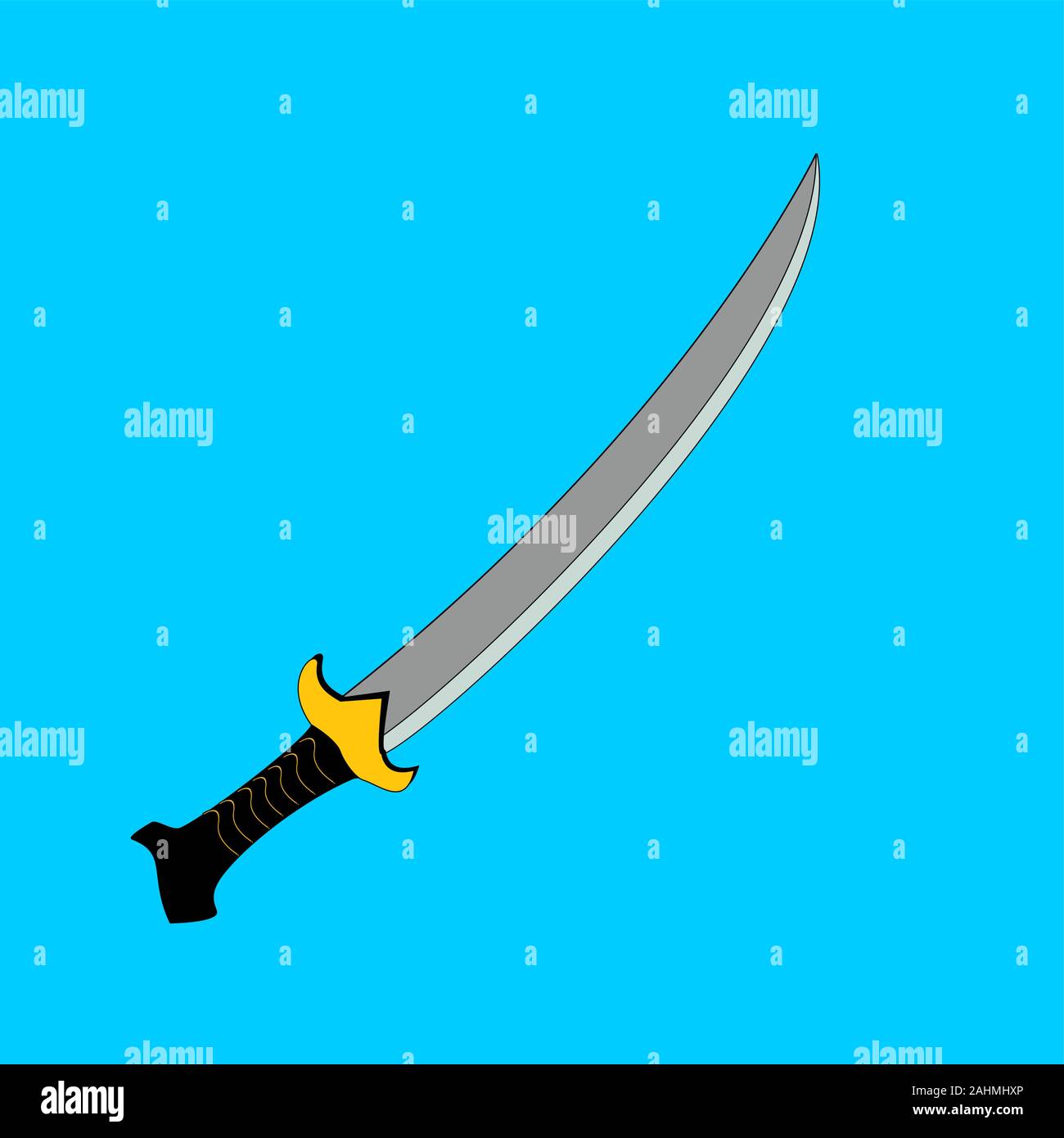 Sword set in flat vector style. knife, blade, steel, Cartoon, cute, flat, color full, editable. For game, poster, children book. Stock Vectorhttps://www.alamy.com/image-license-details/?v=1https://www.alamy.com/sword-set-in-flat-vector-style-knife-blade-steel-cartoon-cute-flat-color-full-editable-for-game-poster-children-book-image337899262.html
Sword set in flat vector style. knife, blade, steel, Cartoon, cute, flat, color full, editable. For game, poster, children book. Stock Vectorhttps://www.alamy.com/image-license-details/?v=1https://www.alamy.com/sword-set-in-flat-vector-style-knife-blade-steel-cartoon-cute-flat-color-full-editable-for-game-poster-children-book-image337899262.htmlRF2AHMHXP–Sword set in flat vector style. knife, blade, steel, Cartoon, cute, flat, color full, editable. For game, poster, children book.
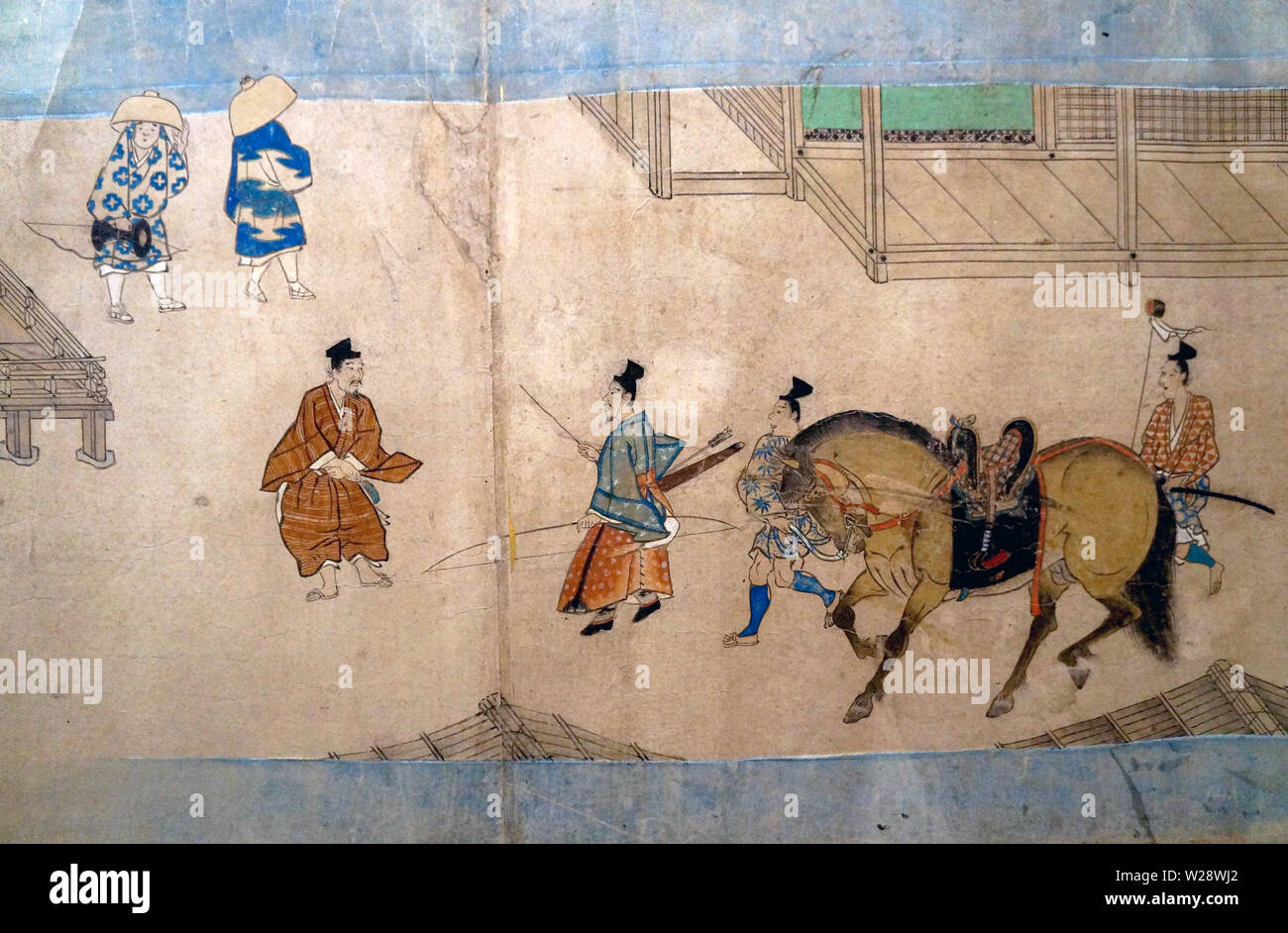 Depiction of a samurai and his retainers, Illustrated Biography of Itinerant Priests, color on paper, Kamakura period, 14th century Stock Photohttps://www.alamy.com/image-license-details/?v=1https://www.alamy.com/depiction-of-a-samurai-and-his-retainers-illustrated-biography-of-itinerant-priests-color-on-paper-kamakura-period-14th-century-image259580554.html
Depiction of a samurai and his retainers, Illustrated Biography of Itinerant Priests, color on paper, Kamakura period, 14th century Stock Photohttps://www.alamy.com/image-license-details/?v=1https://www.alamy.com/depiction-of-a-samurai-and-his-retainers-illustrated-biography-of-itinerant-priests-color-on-paper-kamakura-period-14th-century-image259580554.htmlRFW28WJ2–Depiction of a samurai and his retainers, Illustrated Biography of Itinerant Priests, color on paper, Kamakura period, 14th century
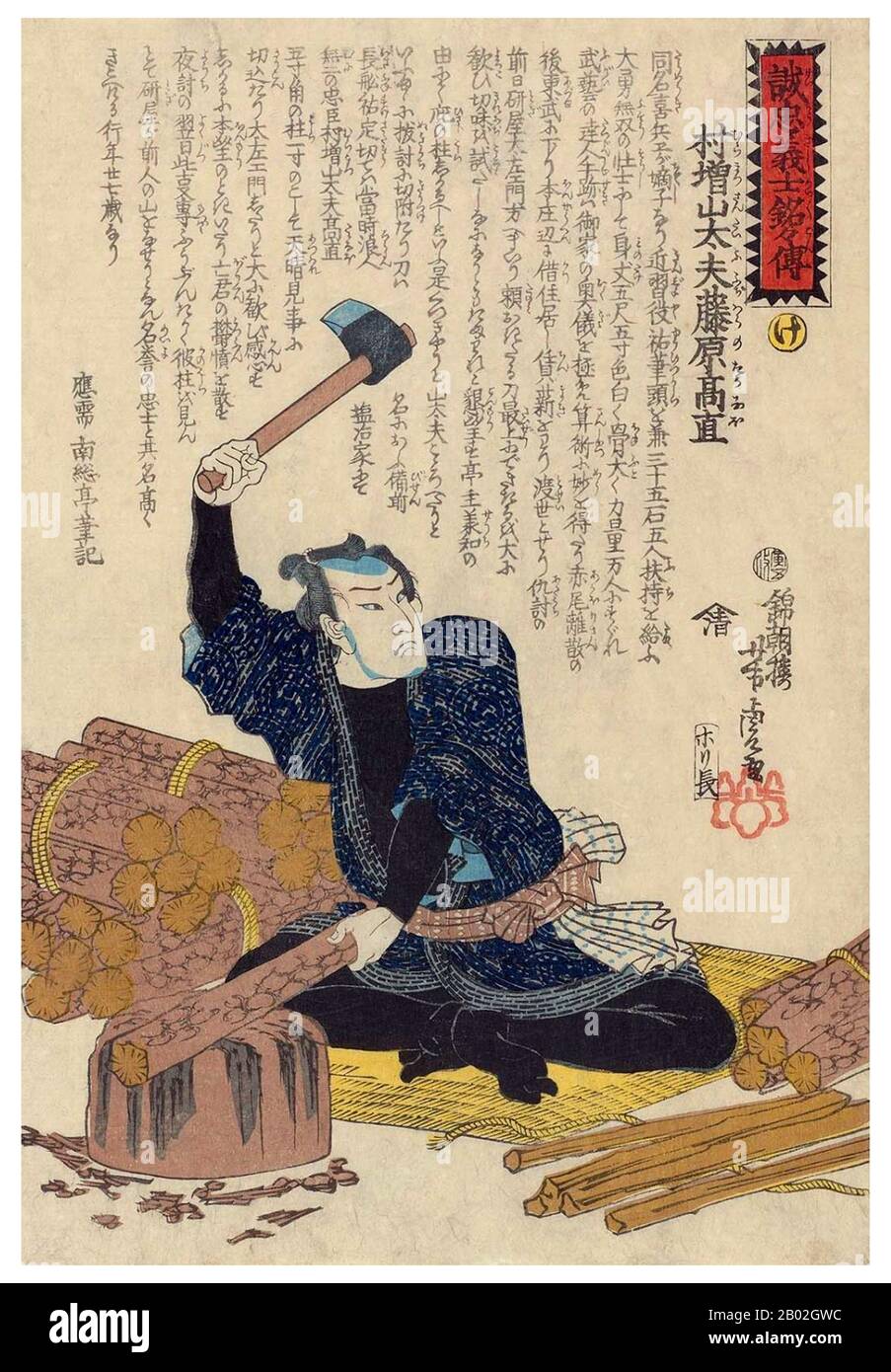 Samurai is the term for the military nobility of pre-industrial Japan. By the end of the 12th century, samurai became almost entirely synonymous with bushi, and the word was closely associated with the middle and upper echelons of the warrior class. The samurai followed a set of rules that came to be known as Bushidō. While they numbered less than ten percent of Japan's population, samurai teachings can still be found today in both everyday life and in martial arts such as Kendō, meaning the way of the sword. Stock Photohttps://www.alamy.com/image-license-details/?v=1https://www.alamy.com/samurai-is-the-term-for-the-military-nobility-of-pre-industrial-japan-by-the-end-of-the-12th-century-samurai-became-almost-entirely-synonymous-with-bushi-and-the-word-was-closely-associated-with-the-middle-and-upper-echelons-of-the-warrior-class-the-samurai-followed-a-set-of-rules-that-came-to-be-known-as-bushid-while-they-numbered-less-than-ten-percent-of-japans-population-samurai-teachings-can-still-be-found-today-in-both-everyday-life-and-in-martial-arts-such-as-kend-meaning-the-way-of-the-sword-image344264520.html
Samurai is the term for the military nobility of pre-industrial Japan. By the end of the 12th century, samurai became almost entirely synonymous with bushi, and the word was closely associated with the middle and upper echelons of the warrior class. The samurai followed a set of rules that came to be known as Bushidō. While they numbered less than ten percent of Japan's population, samurai teachings can still be found today in both everyday life and in martial arts such as Kendō, meaning the way of the sword. Stock Photohttps://www.alamy.com/image-license-details/?v=1https://www.alamy.com/samurai-is-the-term-for-the-military-nobility-of-pre-industrial-japan-by-the-end-of-the-12th-century-samurai-became-almost-entirely-synonymous-with-bushi-and-the-word-was-closely-associated-with-the-middle-and-upper-echelons-of-the-warrior-class-the-samurai-followed-a-set-of-rules-that-came-to-be-known-as-bushid-while-they-numbered-less-than-ten-percent-of-japans-population-samurai-teachings-can-still-be-found-today-in-both-everyday-life-and-in-martial-arts-such-as-kend-meaning-the-way-of-the-sword-image344264520.htmlRM2B02GWC–Samurai is the term for the military nobility of pre-industrial Japan. By the end of the 12th century, samurai became almost entirely synonymous with bushi, and the word was closely associated with the middle and upper echelons of the warrior class. The samurai followed a set of rules that came to be known as Bushidō. While they numbered less than ten percent of Japan's population, samurai teachings can still be found today in both everyday life and in martial arts such as Kendō, meaning the way of the sword.
